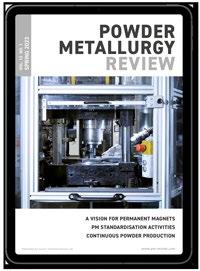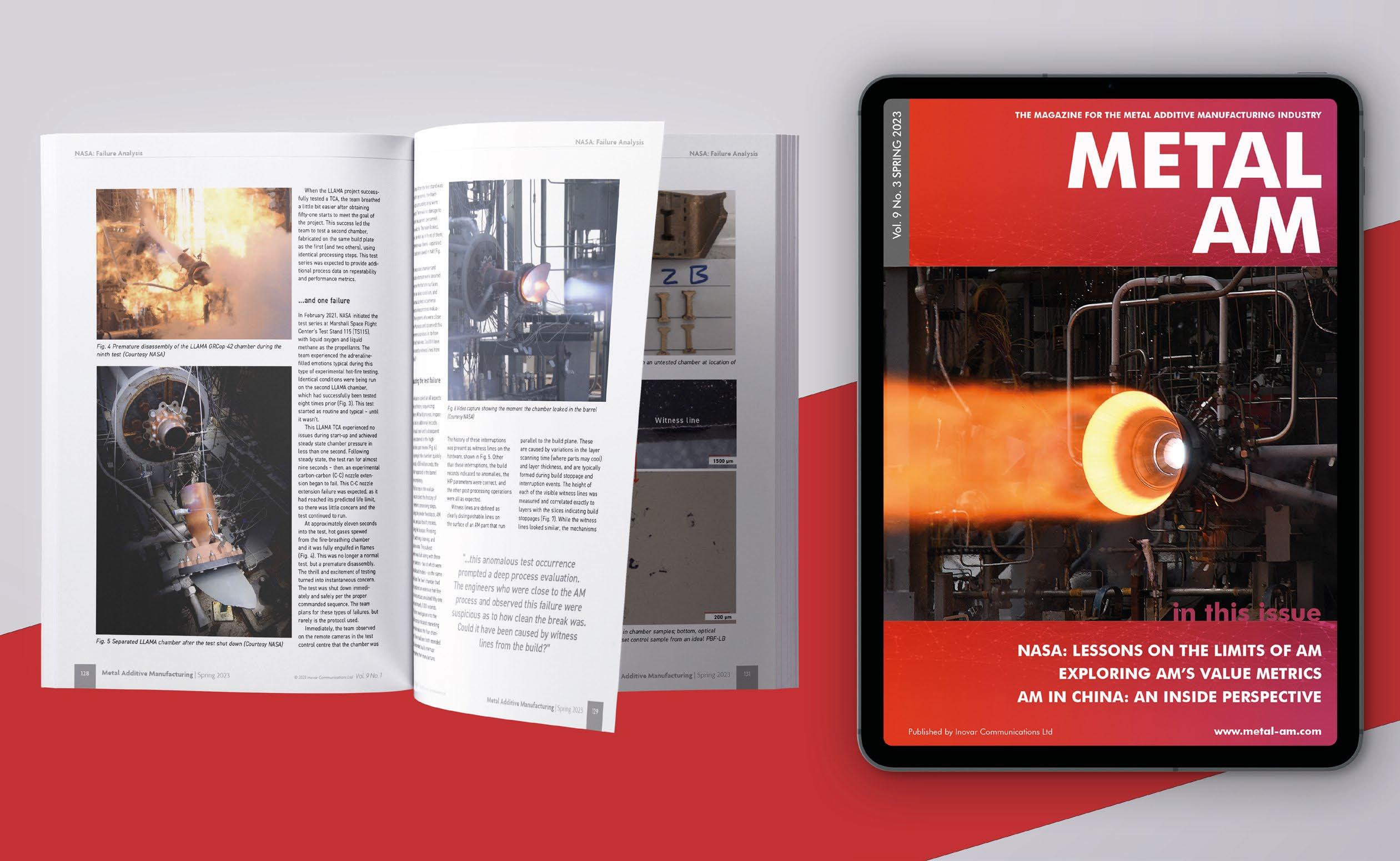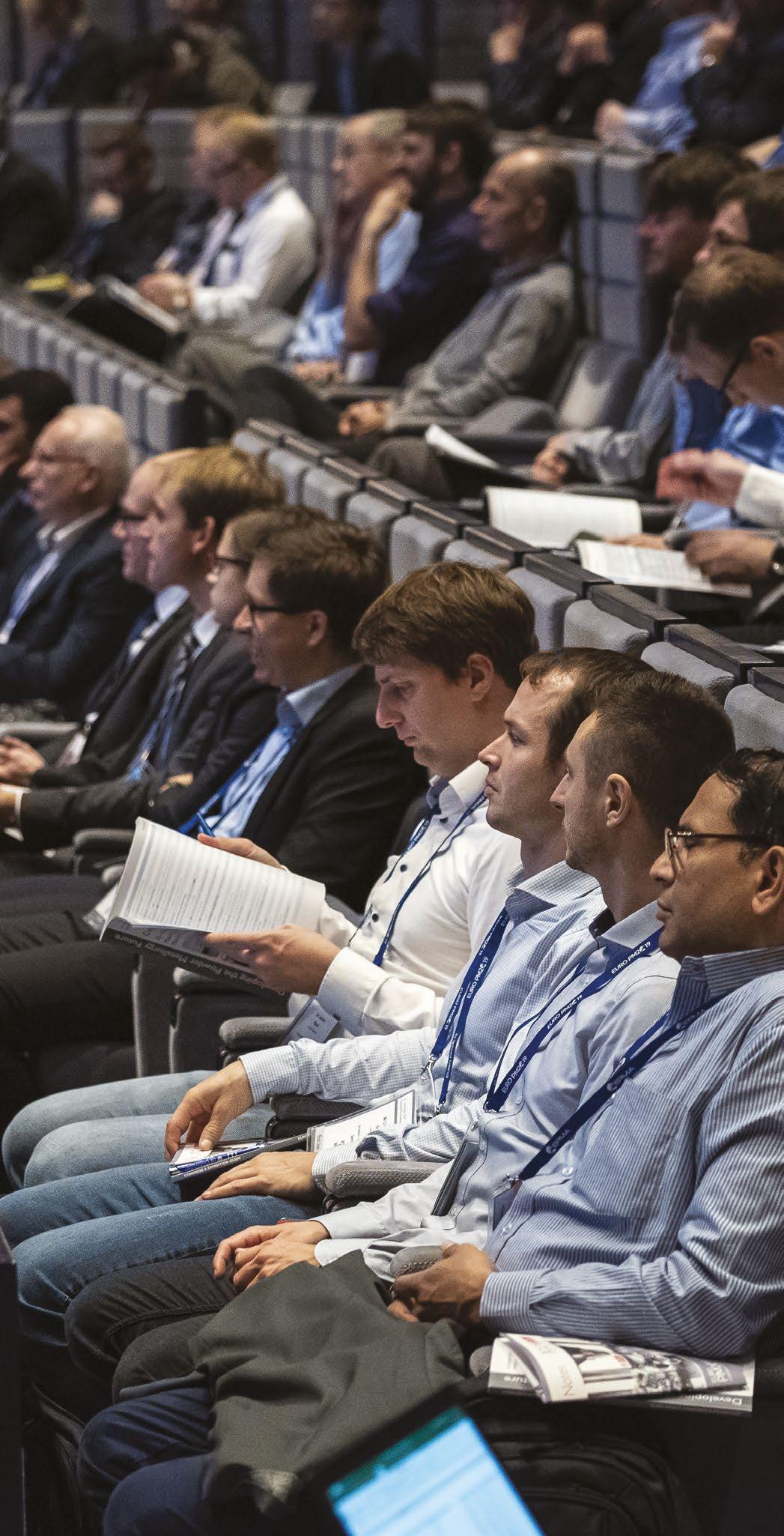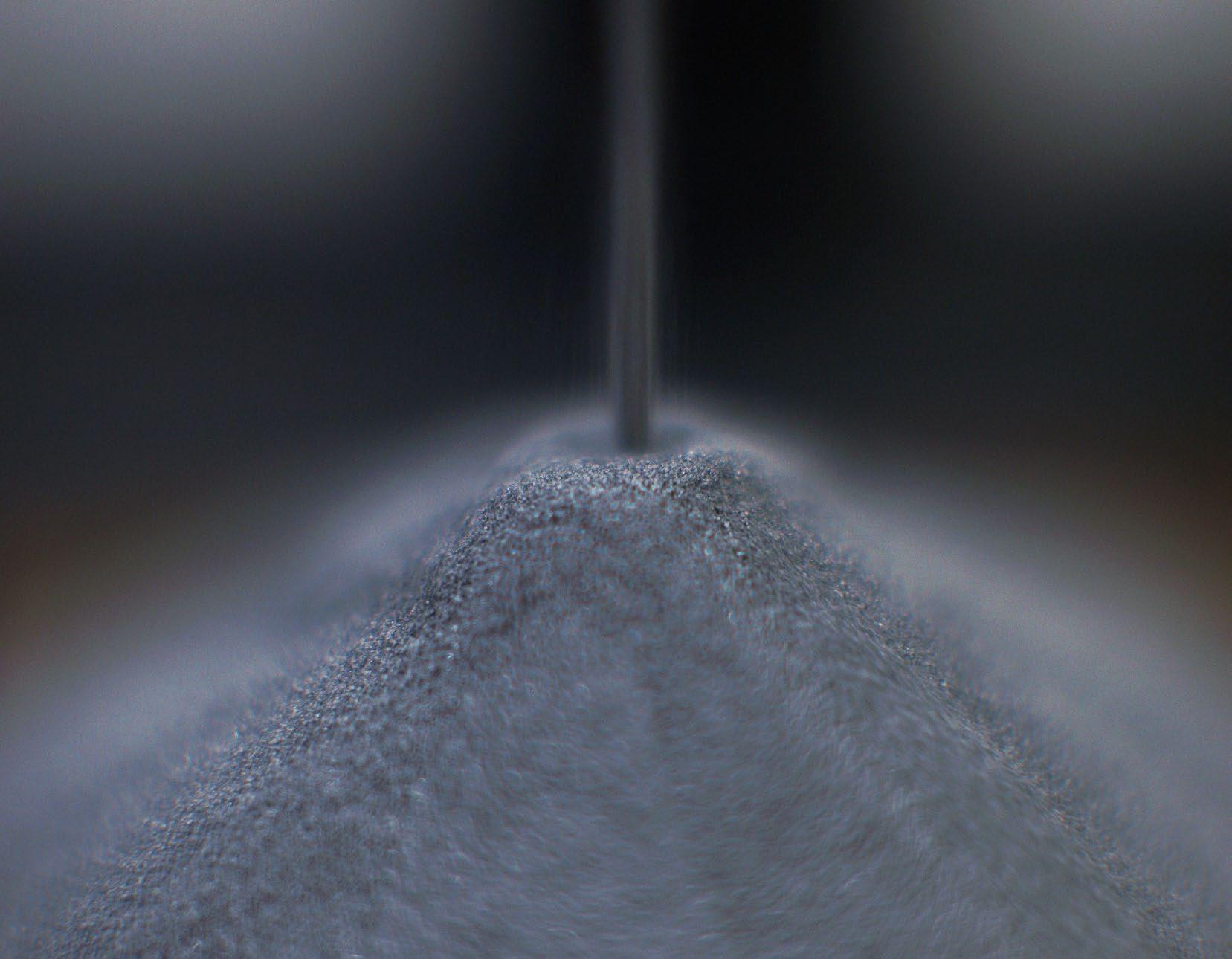

Make the most of your metal powder
The possibilities with Höganäs metal powders are endless, and we’re here to help you discover which can benefit your business. We offer advanced development services – from idea creation, design, simulation and prototyping to industrialisation. At our Customer Development Centres, which are located in the USA, Europe and Asia, we conduct advanced analyses, investigations and testing.
The centres include state-of-the-art testing and laboratory equipment, and we also offer technical support and training. We are dedicated to helping you find the ideal metal powder solutions designed for your specific needs.

Publisher & Editorial Offices
Inovar Communications Ltd

11 Park Plaza
Battlefield Enterprise Park
Shrewsbury SY1 3AF, United Kingdom
Tel: +44 1743 469909 www.pm-review.com
Managing Director & Editor
Nick Williams nick@inovar-communications.com
Group News Editor
Paul Whittaker paul@inovar-communications.com
Assistant News Editor
Charlie Hopson-VandenBos charlie@inovar-communications.com
Editorial Assistant
Amelia Gregory amelia@inovar-communications.com
Consulting Editor
Dr David Whittaker
Advertising Sales Director
Jon Craxford Tel: +44 (0) 207 1939 749 jon@inovar-communications.com
Senior Digital Marketer
Swetha Akshita swetha@inovar-communications.com
Digital Marketer Mulltisa Moung mulltisa@inovar-communications.com
Production Manager
Hugo Ribeiro, hugo@inovar-communications.com
Subscriptions
Jo Sheffield, jo@inovar-communications.com
Accuracy of contents
Whilst every effort has been made to ensure the accuracy of the information in this publication, the publisher accepts no responsibility for errors or omissions or for any consequences arising there from. Inovar Communications Ltd cannot be held responsible for views or claims expressed by contributors or advertisers, which are not necessarily those of the publisher.
Reproduction, storage and usage
Single photocopies of articles may be made for personal use in accordance with national copyright laws. Permission of the publisher and payment of fees may be required for all other photocopying. All rights reserved. Except as outlined above, no part of this publication may be reproduced, stored in a retrieval system, or transmitted in any form or by any means, electronic, photocopying or otherwise, without prior permission of the publisher and copyright owner.
Submitting news and articles
We welcome contributions from both industry and academia and are always interested to hear about company news, innovative applications for PM, research and more.
Subscriptions
Powder Metallurgy Review is published on a quarterly basis. It is available as a free electronic publication or as a paid print subscription. The annual subscription charge is £150.00 including shipping.
Design and production
Inovar Communications Ltd.

ISSN 2050-9693 (Print edition)
ISSN 2050-9707 (Online edition)
© 2023 Inovar Communications Ltd.
This magazine is also available for free download from www.pm-review.com
METALLURGY REVIEW
Navigating PM’s complex path to a bright future
The business environment that the PM industry finds itself in is daunting to say the least. Its biggest customer, the automotive industry, is replacing its core technology - the internal combustion engine - as it moves towards an electrified future. On top of this, strategic global moves to ‘reshore manufacturing’ add an unpredictable twist.
Whilst the messaging around US manufacturing is intended to build domestic supply chain resilience, domestic Chinese PM producers are also strategically gaining ground on foreign-owned producers, driven by the Made in China initiative that is seeing them win on high-end PM applications that were once the preserve of international players.
All this is taking place at a time when the environmental impact of manufacturing is coming under ever greater scrutiny. How can PM support the production of a net-zero vehicle? As we reveal in our lead article, the world’s largest metal powder producer, Höganäs AB, is taking on this challenge by becoming a sustainable business with a target of net-zero emissions by 2037 throughout the whole value chain.
Such a move, combined with the fact that PM is already recognised as a green technology, places the industry in an advantageous position to win business from competing technologies such as forging, casting and machining.
However, there is much more that can be done to maximise PM’s sustainability benefits, including using recyclable alloys, reducing the requirement to machine PM parts, combining multiple PM parts into one, reducing the need for carburising and quenching, and minimising material usage through more effective design.
Finally, to the other great industrial shift of our time – Industry 4.0. Yes, whilst PM is a technology from the pre-digital age, there are significant opportunities to leverage the vast quantities of data that PM production is able to generate, driving more efficient production and enabling the PM smart factory.
Nick Williams Managing Director, Powder Metallurgy ReviewCover image
Metal powders produced by Höganäs AB, the world leader for iron and metal powders with a yearly capacity of 500,000 tons
(Courtesy Höganäs AB)

Our materials, your life

Rio Tinto Metal Powders (RTMP) is committed to finding better ways to provide the materials the world needs now and in the future.

As a producer of iron and steel powders at our plant located in Quebec, Canada, RTMP is a key supplier to the automotive industry, which is undergoing a transition towards electrification. RTMP is contributing to the development of new Soft Magnetic Composite (SMC) materials for electric components, from pump assemblies to small electric motors in e-bikes and EV’s to support the energy transition. Together, we can create a better life for the generations to come.
Find out more at www.riotinto.com
www.qmp-powders.com
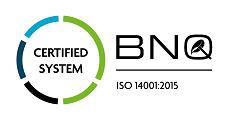
51 Höganäs’ fourth reinvention: Creating sustainable metal powders for automotive electrification
The automotive industry is replacing its core technology – the Internal Combustion Engine. This has meant cost-efficiency programmes across the industry and strict priorities to finance the transformation to an electrified future. What does this mean for the global automotive supply chain and, within it, the Powder Metallurgy industry?
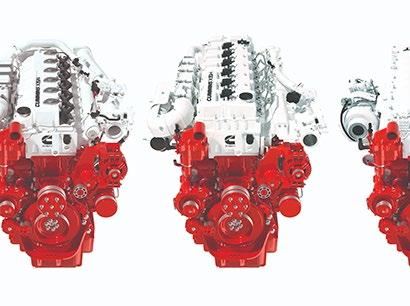
As the world’s largest metal powder producer, Sweden’s Höganäs AB has adopted a new approach to product development which it believes will support the automotive industry’s future demands.
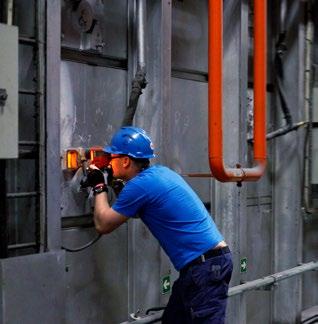
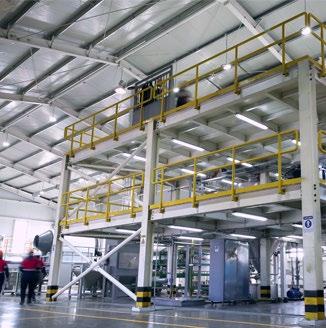 Lars Österlind
Lars Österlind
reports. >>>
59 Powder Metallurgy in China: Markets, applications and the impact of vehicle electrification


Over the past three decades, China has grown into a powerhouse for Powder Metallurgy parts production. Supported by a thriving and diversified domestic market for PM parts, domestically-owned PM companies are now competing with international market leaders. China’s PM industry, however, faces the same challenges as the rest of the world’s producers – the transition to vehicle electrification.
Here, Prof Cao Yang, Deputy General Manager of NBTM group and Deputy Secretary General of China General Machine Components Industry Association Powder Metallurgy Branch (CMPMA), and Dr Yau Hung Chiou (Dr Q), share their insights. >>>
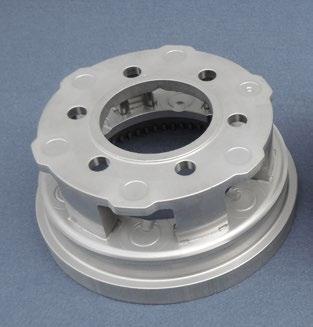
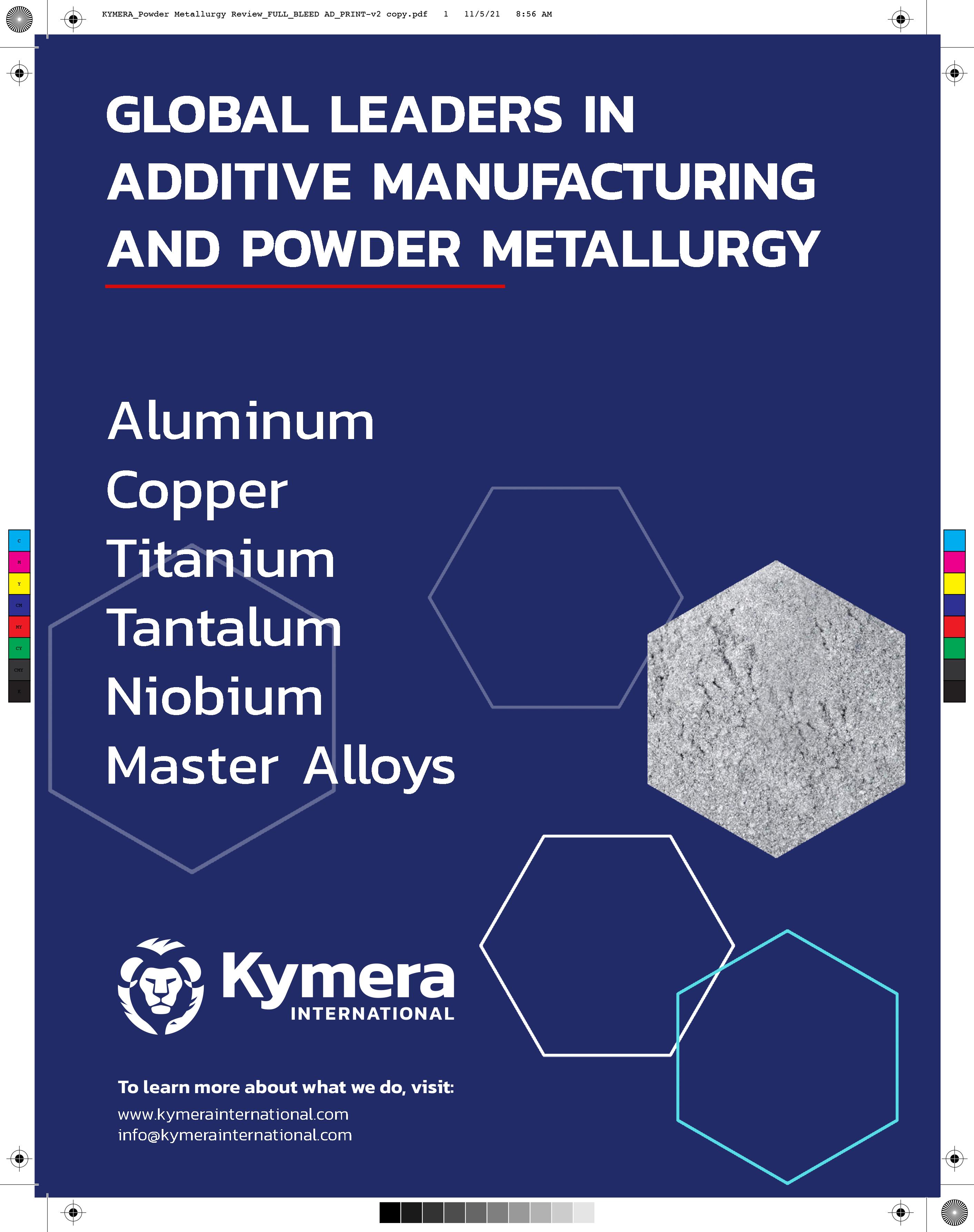
67 Taking control of your metal powder supply chain: Blue Power’s solutions for in-house atomisation

Driven in large part by the rise of the metal Additive Manufacturing industry, demand for specialist metal powders is increasing. Such profound changes in the market for metal powders have stimulated the development of innovative processes for cost-effective in-house production. One important player in this area is Indutherm Erwärmungsanlagen GmbH, with its subsidiary Blue Power Casting Systems GmbH.
Dr Georg Schlieper recently visited these companies and reports on their solutions for the production and classification of fine metal powders in small to medium volumes. >>>
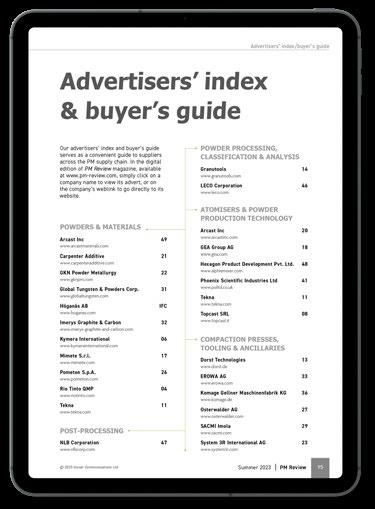
77 Shaping the future: Dorst Technologies on digitisation, data and the PM ‘smart factory’
Whilst some areas of the Powder Metallurgy industry, particularly those involved in the automotive and hardmetals sectors, have leveraged the production data for many years, others have yet to embrace the opportunities presented by the vast quantities of data that their production processes are able to generate.
In this article, Christian Müller, from Dorst Technologies GmbH & Co. KG, considers the opportunities that exist for the digitisation of the Powder Metallurgy process and a move towards PM ‘smart factories.’ >>>
87 JPMA Awards 2022: PM process innovations supporting the route to carbon neutrality
Whilst Powder Metallurgy is already recognised as a green production technology compared to processes such as machining and casting, last year’s Japan Powder Metallurgy Association (JPMA) awards offered insight into how further improvements to PM’s green credentials can be achieved. Innovations range from reducing the machining of PM parts through a push towards net-shape production, combining multiple PM parts into one, limiting carburising and quenching, and minimising material usage. >>>

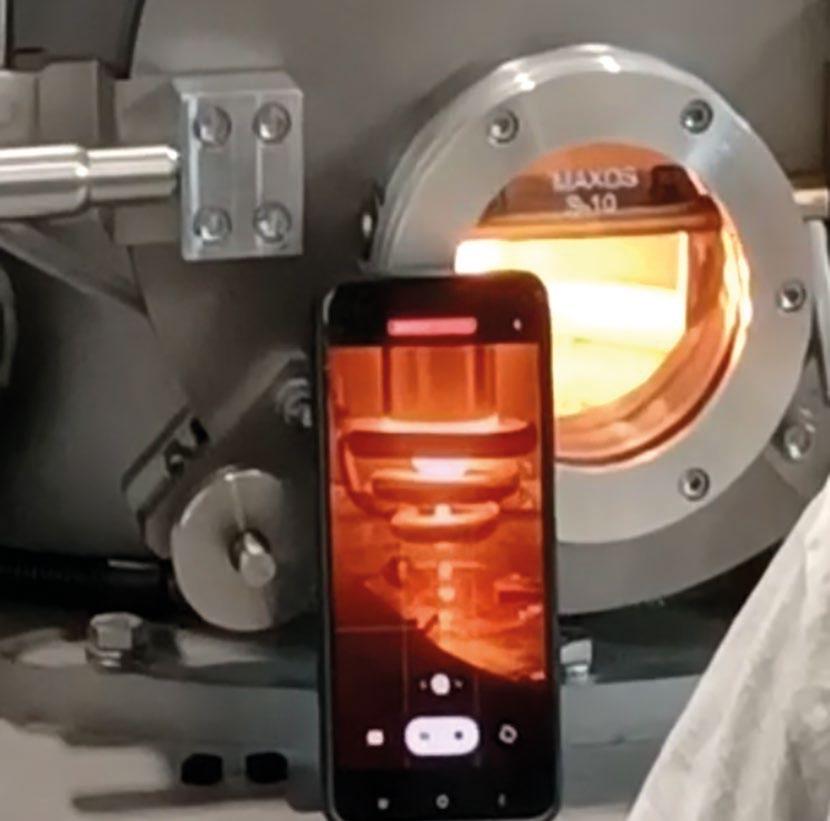

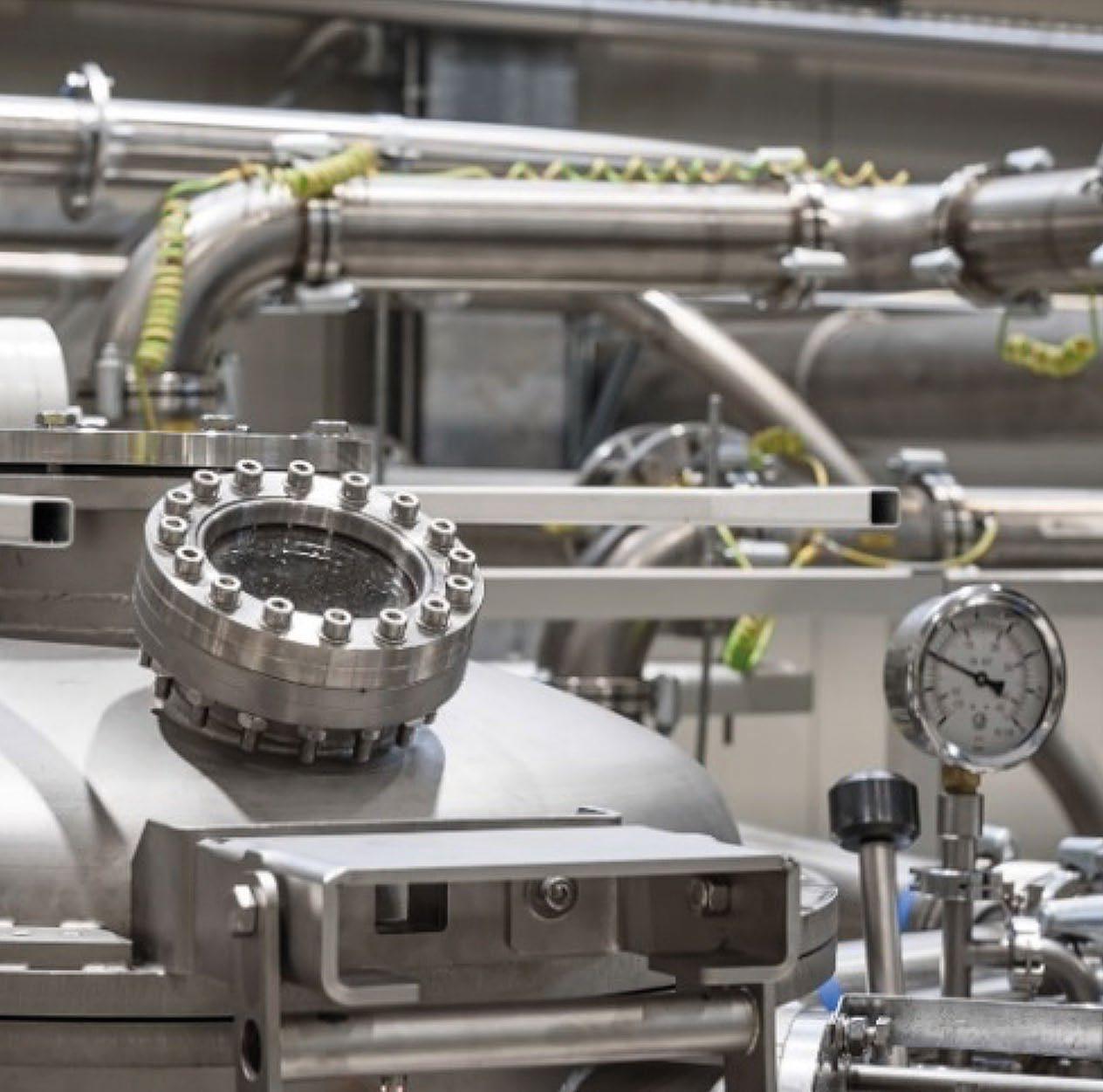








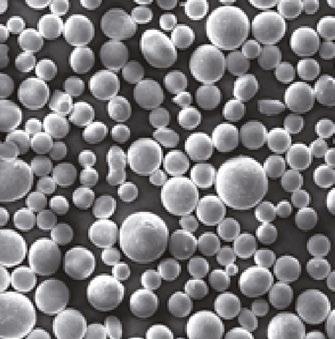
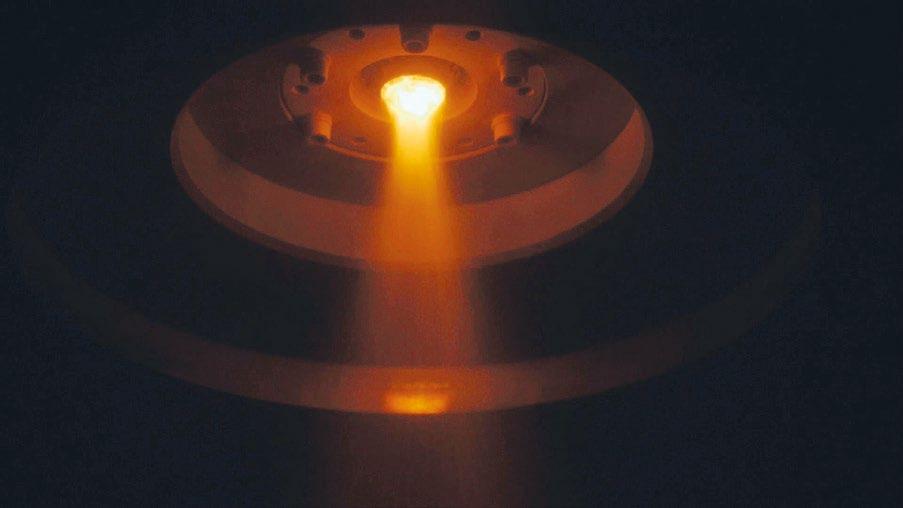
Aubert & Duval sold to Airbus, Safran and Tikehau Capital
The acquisition of Aubert & Duval, a specialist producer of advanced material solutions including metal powders, by Airbus, Safran and Tikehau Capital has been finalised. Aubert and Duval was formerly part of the alloys branch of France’s Eramet Group.
“The acquisition of Aubert & Duval will ensure the national and European sovereignty of our strategic programmes developing disruptive civil and military engines, and secure our critical parts and materials supply chain,” stated Olivier Andriès, CEO, Safran. “I am confident the new team will carry through the transformation project to get this leading French industry player back on track.”
Aubert & Duval is a strategic supplier of critical parts and materials to customers in the aerospace, defence, nuclear and medical industries. The company generates reported annual revenues in the region of €550 million and employs 3,700 people, mostly in France. Its experience in specialty steels and superalloys – and its more recently acquired expertise in titanium – are crucial to the aerospace, transportation, energy, defence and medical markets.
“Completion of this acquisition represents a crucial step towards the creation of a leading European player in critical parts and materials, equipped to compete globally
and to support the aerospace and defence industry, thereby reducing geopolitical risks of supply,” added Guillaume Faury, CEO, Airbus. “Airbus will provide its full support to Aubert & Duval as it executes its ambitious transformation plan.”

Marwan Lahoud, chairman –private equity, Tikehau Capital, stated, “The acquisition of Aubert & Duval reflects the quickening pace of transformation and consolidation in the aerospace sector. Tikehau Capital is proud to be aiding the company’s recovery and the development of its industrial expertise alongside Airbus and Safran. Aubert & Duval is a strategic player vital to maintaining France’s and Europe’s industrial independence.”
The sale marks the latest in a series of initiatives in recent years to support and strengthen France’s aerospace sector, notably through the Ace Aéro Partenaires investment fund set up in 2020 and handled by alternative asset management firm Tikehau Capital with the backing of the French government, which retains a golden share in Aubert & Duval company in order to protect its strategic interests.
Bruno Durand appointed CEO of Aubert & Duval
It was also announced that Bruno Durand has now been appointed CEO of Aubert & Duval.
“A new chapter is beginning for Aubert & Duval, for both its staff and its customers. Our new shareholders, who are committed to a long-term vision, all share a single objective: to make Aubert & Duval the leading European supplier to the aerospace, defence and energy industries,” stated Durand, “We face major challenges, in particular the challenge of decarbonising our products and developing the circular economy as we work to support the industrial sectors we supply. I understand the importance of the responsibility that has been entrusted to me, and I am looking forward to tackling these challenges alongside everyone in the company.”
Durand joined Safran in 2005, where he was VP – Purchasing at Labinal (now Safran Electrical & Power) and deputy CEO. He was subsequently appointed VP – Supply Chain at Snecma (now Safran Aircraft Engines) in 2009 before joining Sagem (now Safran Electronics & Defense) in 2012 as Vice President, Industrial Operations. He was appointed VP – Industrial Operations and Supply Chain at Safran Aircraft Engines in 2014, then Safran Executive Vice President, Production, Purchasing & Performance in 2020. In May 2022, he left this post to take charge of the Aubert & Duval transformation project with Safran’s CEO.
www.safrangroup.com
www.airbus.com
tikehau-ace.capital
www.aubertduval.com
Demerger of GKN Powder Metallurgy, GKN Automotive and GKN Hydrogen businesses complete
Dowlais has announced the completion of the earlier reported demerger of the GKN Automotive, GKN Powder Metallurgy and GKN Hydrogen businesses from Melrose Industries PLC.

The ordinary shares of Dowlais (DWL.L) were admitted on April 20, 2023, to the premium listing segment of the Official List of the Financial Conduct Authority (FCA) and to trading on the London Stock Exchange’s main market for listed securities.
On admission to the exchange, the issued share capital of Dowlais consisted of 1,393,273,527 shares with a nominal value of £0.01 each, with all Dowlais shares carrying voting rights of one vote per share.
“We are delighted Dowlais has today joined the London Stock Exchange,” stated Liam Butterworth, Chief Executive Officer of Dowlais. “I would like to extend my thanks to the team at Melrose for their unwa -
Cummins to invest more than $1 billion in US engine manufacturing facilities
Cummins Inc., headquartered in Columbus, Indiana, USA, has announced plans to invest more than $1 billion across its US engine manufacturing network in Indiana, North Carolina and New York. The investment will provide upgrades to those facilities to support the industry’s first fuel-agnostic engine platforms that will run on lowcarbon fuels, including natural gas, diesel and eventually hydrogen.
Over half of all medium- and heavy-duty trucks on the road in the US today reportedly use Cummins engines. The company explained that this investment is intended to retain the thousands of current engineering and manufacturing jobs and support the creation of hundreds of new jobs, across the company’s New York, North Carolina and Indiana footprint in an effort to grow innovation and manufacturing, and accelerate its decarbonisation efforts.
The announcement stated that Cummins plans to invest $452 million in its Jamestown Engine Plant in Western New York to produce the industry’s first fuelagnostic internal combustion engine platform that leverages a range of lower carbon fuel types. The X15N is part of the new fuel-agnostic 15
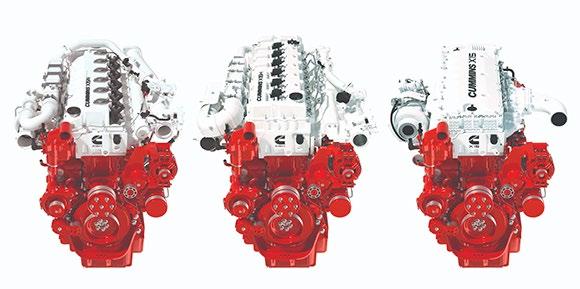
vering support over the past five years, during which time we have completely transformed our group of businesses.”
“Dowlais brings together the market-leading GKN Automotive and GKN Powder Metallurgy businesses and an exciting opportunity in GKN Hydrogen,” he continued. “We have a clear strategy to create value for our stakeholders by delivering industryleading financial performance, facilitating the world’s transition to electric vehicles through a portfolio of cutting-edge products and accelerating growth through a disciplined M&A strategy.”
Butterworth concluded, “Dowlais looks forward to the opportunities that lie ahead as the UK’s leading listed auto components business, well placed to play its part in transitioning society to a greener future.”
www.dowlais.com
www.gknautomotive.com
www.gknpm.com
litre engine platform produced at Jamestown.
Cummins’ customers, including Walmart, Werner, Matheson, and National Ready Mix, are beginning to test the very first engines of the X15N fuel agnostic platform. Walmart will receive the first field test unit later this month to take part in the first trials of this engine platform running on renewable natural gas.
www.cummins.com
The fuel-agnostic architecture of the X Series utilises a common base engine with cylinder heads and fuel systems specifically tailored for the X15H to use carbon-free hydrogen and for the X15N to use biogas with up to 90% carbon reduction (Courtesy Cummins)
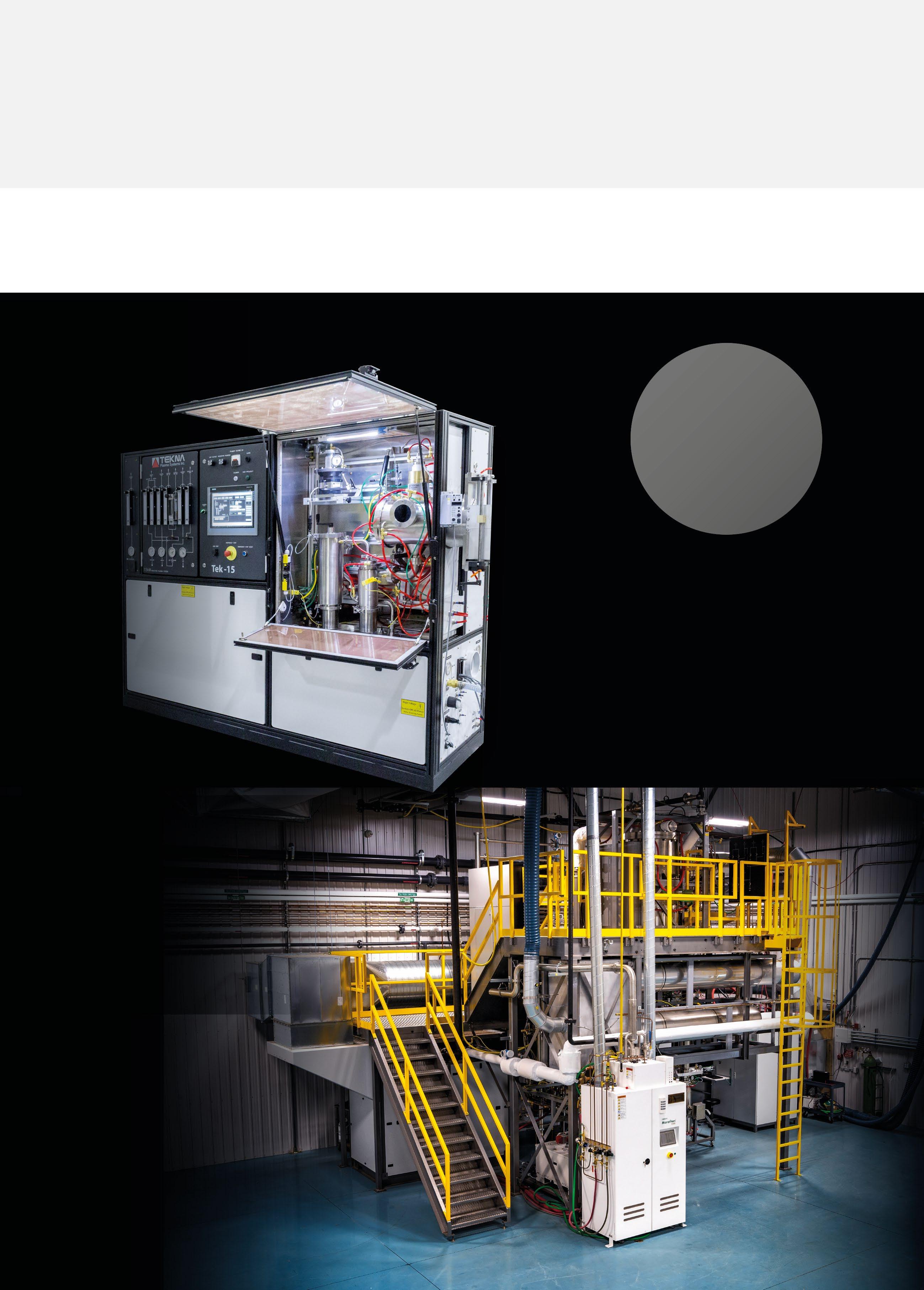
Outokumpu adds metal powder atomisation plant to German facility
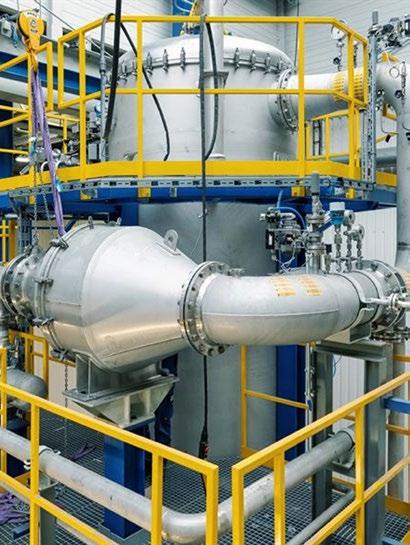
Outokumpu, headquartered in Helsinki, Finland, is entering the metal powder sector with the construction of a new atomisation plant at its facility in Krefeld, Germany, planned for April 2023. The move is intended to further strengthen the company’s sustainability strategy and circular economy efforts by using the steel scrap from local production to create metal powders suitable for Additive Manufacturing, Metal Injection Moulding (MIM), Binder Jetting (BJT) and Hot Isostatic Pressing (HIP).
“The global demand for metal powder is on the rise and we see

great potential for the business in the near future,” stated Thomas Anstots, president of BL Advanced Materials at Outokumpu. “We have seen the growth of Additive Manufacturing industries and the potential to strengthen the position and use of stainless steel for metal powder products, and, therefore, decided to start the construction of a new designed atomisation plant. Outokumpu has an extensive expertise on the materials and will partner with interested powder customers. We are happy to start with the internal production soon, followed by external run a bit later. There is already a great interest among customers and the first projects have started.”
Outokumpu’s primary focus is said to be on producing metal powders that are not yet on the market, using AM, MIM and HIP to manufacture parts for a range of demanding applications.
“In the near future, the estimated total production capacity will be approximately 330 tons annually. Our longer-term target is to utilise the learnings and to build up our R&D know-how to support the customer journey with expertise, new material development, flexibility and customisation for various Powder Metallurgy technologies. In our future vision, we could be able to serve our customers in such a way that they could come to us with
a problem and leave with a solution,” Anstots continued.
Outokumpu sees the new atomisation plant as a large recycling unit. The company’s stainless steel is said to be the single most recycled material globally, and the company’s mills in Europe and in the US are among the largest material recycling facilities in the world.
”We want to help our customers to reduce climate burden by means of the right material choices. I’m proud of the fact that our new atomisation plant in Krefeld will be a large recycling unit to support the circular economy further. The embodied carbon footprint of our whole production process is also reduced as the raw material is generated, and the product is produced and packaged, all in one place. This ensures to control the entire process and to significantly cut down the transportation emissions too,” Anstots concluded.
Outokumpu’s new portfolio of metal powders (which includes stainless steel and nickel alloys) has been formulated to meet the demands of modern manufacturing in terms of quality, sustainability and flexibility. Outokumpu is partnering with SMS group GmbH, headquartered in Düsseldorf, Germany, as the technology supplier. The Equipment as a Service (EaaS) contract is intended to ensure a continuous line optimisation and close collaboration in the powder business between the supplier and the producer in coming years.
www.outokumpu.com



BLT expanding its metal powder production capacity
Xi’an Bright Laser Technologies Co., Ltd. (BLT) has officially broken ground on its Phase IV facilities expansion project in Xi’an, China. This fourth phase will see the company increase its metal powder production, along with adding more Additive Manufacturing part production lines, and will result in approximately 163,200 m 2 of additional floor space.
BLT stated that Phase IV marks a new stage in the company’s evolution, with a significant increase in capacity for both powder and part production. The move is said to reflect the broader adoption of AM services in aero -
BLT is expanding its metal powder production facilities and adding further AM part production lines (Courtesy Xi’an Bright Laser Technologies)


space and other industries both within China and abroad.
BLT’s Phase I and Phase II facilities occupy about 100,000 m 2 and consist of a high-level R&D centre and six Additive Manufacturing factories. Phase III is currently under construction and covers an area of 190,000 m 2. It will focus on Design for Additive Manufacturing (DfAM), big data,
intelligent equipment, unmanned factory automation and other aspects.


BLT was founded in July 2011, and today is a leading metal AM solution provider in China. The company currently employs more than 1,100 employees across sites in Schenzhen, Jiangsu, Weinan and Xi’an.
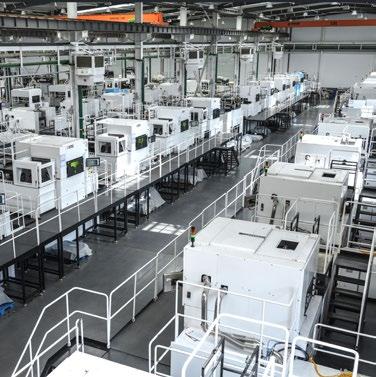
www.xa-blt.com
Line

JEOL USA offers AI-powered mass spectral analysis
JEOL USA Inc, headquartered in Peabody, Massachusetts, USA, a wholly-owned subsidiary of JEOL Ltd. Japan, has introduced msFineAnalysis AI, an artificial intelligence-powered software designed to automatically perform qualitative GC-MS analysis.
msFineAnalysis AI offers a new structure analysis tool for unknowns that is specifically designed for the JEOL JMS- T2000GC AccuTOF GC-Alpha. The software adds this structure analysis capability to the automatic qualitative analysis functionality that was already available with the previous software iteration.

The software’s integrated analysis combines GC/EI high-resolution data, GC/soft ionisation high-resolution data, and structure analysis using two AIs. These advanced AI technologies allow msFineAnalysis AI to provide a unique automatic structure analysis capability that was not previously available for GC-MS qualitative analysis.
Most commonly available GC-MS databases contain mass spectra for less than one million chemical compounds, a small fraction of the possible chemical structures. JEOL developed its software in an effort to identify compounds that do not have entries in the mass spectral databases and which previously would have required a skilled chemist with significant knowledge, experience, and time.
In the new AI-assisted workflow, deconvolution of GC-MS data into mass spectrum, library search, molecular ion search, accurate mass analysis, isotope pattern matching, and structural analysis can reportedly take place within a few minutes.

The software incorporates two different structure analysis tools: an in-silico database consisting of AI-generated EI mass spectra for the 100 million structures in the PubChem database and a support AI that predicts the presence and absence of common substructures.
“Computer-aided determination of chemical structures from EI mass spectra and the reverse – prediction of EI mass spectra from chemical structures – has been a goal since the 1960s,” stated Dr Chip Cody, Applications Scientist. “This goal is finally achieved with JEOL’s development of msFineAnalysis AI.”

msFineAnalysis AI is available exclusively on JEOL’s 6 th-generation high-resolution time-of-flight mass spectrometer (HRTOFMS), the AccuTOF GC-Alpha. This AI-powered software combines with a mass resolving power of R=30,000, improved mass accuracy (≤ 1ppm), and multiple soft ionisation sources for use in mass spectrometry labs exploring a variety of applications.

www.jeolusa.com
www.jeol.co.jp
Atomising Systems celebrates thirty years and plans £1.75m expansion
Atomising Systems Ltd. (ASL), Sheffield, South Yorkshire, UK, is celebrating its thirtieth anniversary, and investing some £1.75 million to further boost its machine development and powder production facilities.
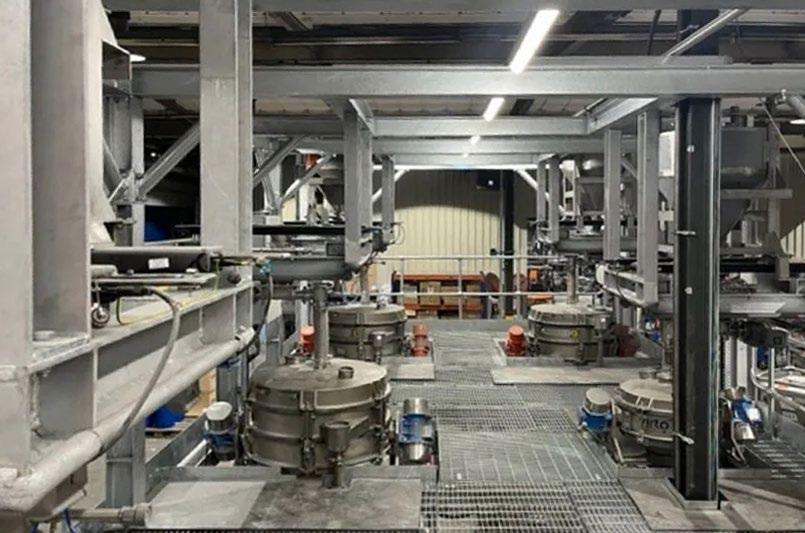

Having begun operations with just three staff members in a small office in January 1993, the company grew to around fifteen staff and moved to a 900 m 2 factory in 2001. This was outgrown and in 2011 the company relocated to its present 3000 m 2 facility, where eighty-five are now employed.
Although the company was started as a manufacturer of atomisation production systems, it moved into metal powder production as
demand increased. Today, production capacity for steels, Ni & Cu alloys, using gas atomisation, water atomisation, and ultra-high-pressure water atomisation (for MIM grades) now exceeds 4,000 t/year.
In its 30 th year of operation, £1.75 million is being invested in a number of expansion and quality improvement projects to remove bottlenecks. These include a third QC laboratory with ICP analytical facilities, a 5 t blender, and a major relocation and expansion of sieving and classifying equipment for special powders, largely for the Additive Manufacturing industry.
Plans for 2023 call for a fifth melting furnace to be installed to boost gas atomising capacity and an
upgrade to the packing equipment. ASL is also applying a number of innovative in-house developments to its process plant, with the objective of reducing scope 2 CO 2 emissions by over 100 t/year.
John Dunkley, the founder of the company, has now worked on atomising for fifty years and is semi-retired. He is still involved in strategic planning and technical investigations, assisting an eightstrong R&D team. Record turnover in the year ended September 30, 2022, was in excess of £13 million, boosted by rapidly increasing sales to the Additive Manufacturing industry, for both Laser Beam Powder Bed Fusion (PBF-LB) techniques and Binder
Jetting (BJT). Stainless steels, especially 316L, are the major focus of activity, but many different alloys are available.
www.atomising.co.uk
Mattias Nilsson appointed president of Sandvik Manufacturing Solutions
Sweden’s Sandvik AB has appointed Mattias Nilsson as president of Business Area segment Sandvik Manufacturing Solutions and new member of the Sandvik Group Executive Management, effective May 8, 2023. He is currently VP – Offer Management and R&D at Sandvik Coromant, where he is also part of the management team.
Nilsson joined Sandvik Coromant in 2007, bringing extensive leadership experience from the
manufacturing industry and a strong track record of developing high-performing operations in areas spanning from R&D and product development to sales and service.
“I am convinced that Mattias Nilsson with his strong leadership skills, deep understanding of the manufacturing industry and broad international experience will be an excellent president of Sandvik Manufacturing Solutions
and a great addition to the Group Executive Management,” stated Stefan Widing, president and CEO of Sandvik.
His experience within Sandvik Coromant also includes being General Manager of Sales Area South Europe, where he was based in Spain, and the role as Managing Director of Sandvik Teeness, based in Norway. He has also been Head of Strategic and Global Account Management.
Nilsson replaces Christophe Sut, who will be leaving Sandvik for the position of CEO at Scanfil.
www.home.sandvik
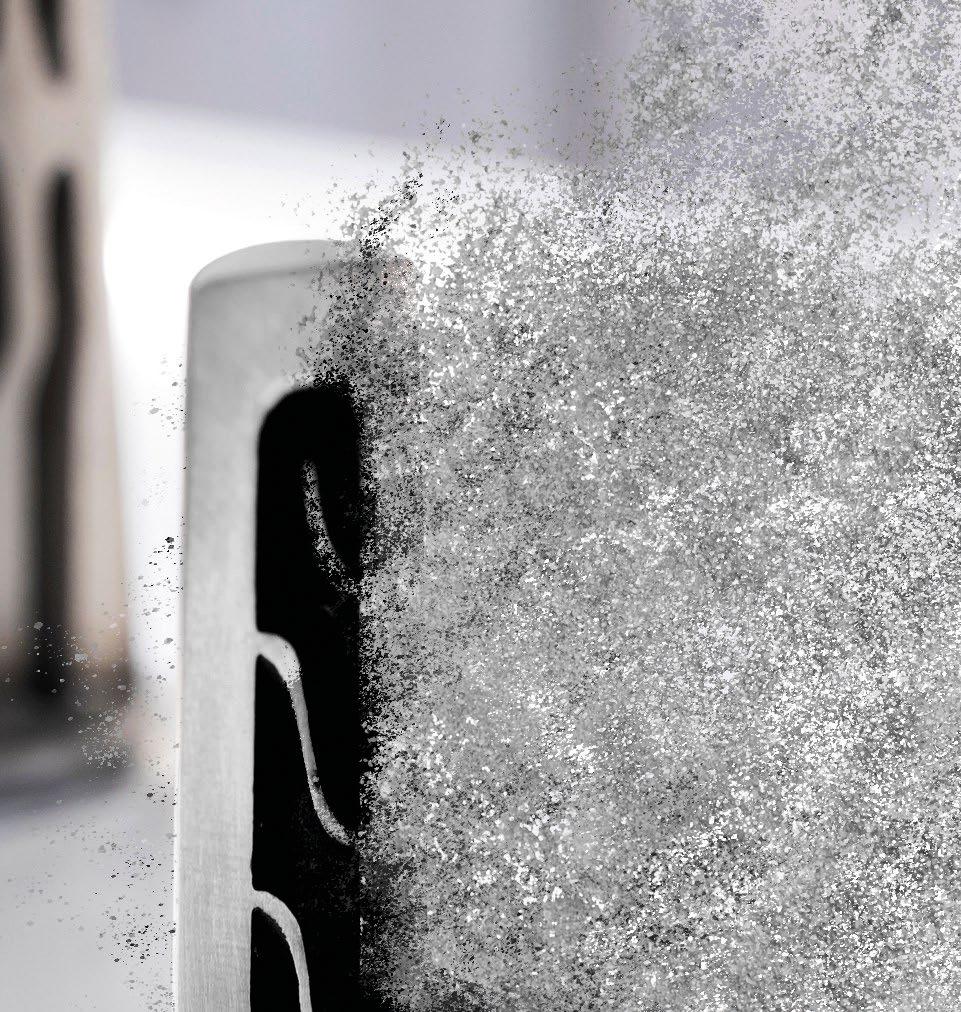

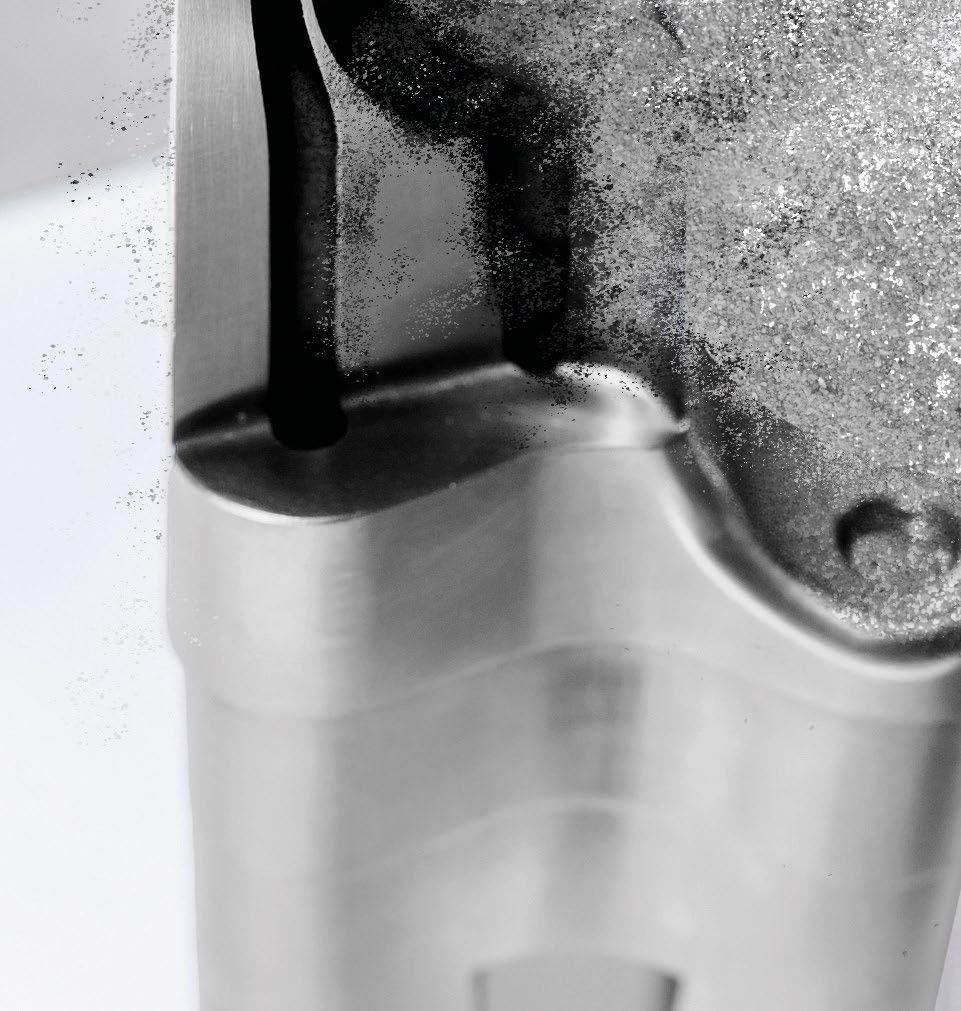



expertise in powder engineering.
GEA is a world-leading specialist in powder engineering with exceptional patented Spray Drying Solutions.
Be it a powder, a granulate or an aglomerated product, we have developed outstanding Spray Drying Solutions that define and deliver superior quality powders to your exact specifications in the most energy-and-cost-efficient way.
GEA offers compact, single-line spray drying plants of any desired capacity. Our very own Nozzle or Rotary Atomizer technology allow us to cover a very wide size range.

EU Council adopts CO2 emissions regulation for new cars and vans
The Council of the European Union has adopted a regulation setting stricter CO 2 emission performance standards for new cars and vans. The new rules aim to reduce emissions from road transport that has the highest share of emissions from transport – and provide the right push for the automotive industry to shift towards zero-emission mobility while ensuring continued innovation in the industry.

The new rules set the following targets:
• 55% CO 2 emission reductions for new cars and 50% for new vans from 2030 to 2034 (compared to 2021 levels)
• 100% CO 2 emission reductions for both new cars and vans from 2035
A regulatory incentive mechanism for zero- and low-emission vehicles (ZLEV) will be in place from 2025 until the end of 2029. As part of this mechanism, if a manufacturer meets certain benchmarks for the sales of zero- and low-emission vehicles it can be rewarded with less strict CO 2 targets. The benchmark is set at 25% for cars and 17% for vans.
CO 2-neutral ‘e-fuels’
The regulation contains a reference to e-fuels, whereby following a consultation with stakeholders, the Commission will make a proposal for registering vehicles running exclusively on CO 2-neutral fuels, after 2035, in conformity with EU law, outside the scope of the fleet standards, and in conformity with the EU’s climate neutrality objective.
Review clause
The regulation includes a review clause that foresees that in 2026, the Commission will thoroughly assess the progress made towards achieving the 2035 100% emission
reduction targets and the possible need to review them. The review will take into account technological developments, including with regard to plug-in hybrid technologies and the importance of a viable and socially equitable transition towards zero emissions.

European Automobile Manufacturers’ Association comments Sigrid de Vries, Director General, of the European Automobile Manufacturers’ Association (ACEA), has reacted to the EU announcement, stating “The course is now officially set. Our industry welcomes the planning certainty that today’s milestone brings, and is working at full pace to meet this momentous challenge.”
She further reaffirmed that all members of the ACEA support climate neutrality by 2050 and are committed to the 2035 target.
“We strongly believe that a technological-neutral approach –with widespread electrification at its core – is the best way to achieve climate goals. Last year, one out of every five new cars sold in the EU had a plug. By 2030, this figure is predicted to rise to three in five –putting the EU ahead globally. Now,
policymakers need to make sure that EU citizens will be convinced to switch massively to e-mobility. This means that these cars should be affordable and convenient to recharge. Industry also needs competitive access to critical raw materials and energy to maintain a sustainable future in Europe,” de Vries concluded.
Other provisions
In addition, the EU regulation includes other provisions such as:
• gradually reducing the cap of emission credits that manufacturers can receive for eco-innovations that verifiably reduce CO 2 emissions on the road, to maximum 4 g/km per year from 2030 until the end of 2034 (currently set at 7 g/km per year)
• a common EU methodology, to be developed by the Commission by 2025, for assessing the full life cycle of CO 2 emissions of cars and vans placed on the EU market, as well as for the fuels and energy consumed by these vehicles
The regulation maintains a derogation for small volume manufacturers until the end of 2035. www.acea.auto
www.consilium.europa.eu
Rio Tinto and First Quantum to unlock one of the largest undeveloped copper deposits in the world
Rio Tinto, Sorel-Tracy, Québec, Canada, and First Quantum Minerals, Vancouver, British Columbia, have entered into a joint venture that will work to further develop La Granja copper project in Peru, one of the largest undeveloped copper deposits in the world.
La Granja is a complex orebody located at high altitude in Cajamara, northern Peru, that has the potential to be a large, long-life operation, with a published Indicated and Inferred Mineral Resource totalling 4.32 billion tonnes at 0.51% copper. The joint venture will bring together the combined knowledge, experience and resources of Rio Tinto and First Quantum Minerals to progress the project.
Under the proposed transaction, First Quantum will acquire a 55% stake in the project for $105 million, and commit to further invest up to $546 million into the joint venture to solely fund capital and operational costs to take the project through a feasibility study and toward development. Upon completion of the sole funding commitment, all subsequent expenditures will
be applied on a pro-rata basis according to the share ownership of the project.
The transaction is expected to complete by the end of Q3 2023, subject to the satisfaction of regulatory approvals. As majority owner, First Quantum will then operate the La Granja project with initial work focused on completing the feasibility study.
Rio Tinto acquired the project from the government of Peru in 2006 and has since carried out an extensive drilling programme that expanded the declared resource and understanding of the orebody, and established partnerships with host communities as well as local and national governments.
“La Granja is an exciting but complex project that has the potential to be a significant new source of the copper that is needed for the energy transition. We are pleased to enter into this agreement with First Quantum, that will bring our combined development capabilities and deep knowledge of La Granja to progress the project,” stated Bold Baatar, Chief Executive, Rio Tinto Copper.
“This partnership underscores not only La Granja’s potential to be a significant copper producer, but Peru’s position as one of the world’s most important mining investment destinations,” he continued. “Developing La Granja would also further strengthen Rio Tinto’s copper portfolio following the acquisition of Turquoise Hill Resources and commencement of underground mining at Oyu Tolgoi in Mongolia.”
First Quantum Chief Executive Officer Tristan Pascall, added, “I am very pleased to announce today’s partnership with Rio Tinto, a global leader in the mining industry. Rio Tinto’s work on La Granja has been extensive to date and we share our partner’s view that the project has the potential to be a Tier 1 copper mine. We look forward to working together to build on this foundation, leveraging First Quantum’s core strengths in mine design, project development and community engagement to progress La Granja to the next stage. First Quantum is excited about broadening our existing relationships in Peru and we are appreciative of the support provided by the Government of Peru to this important partnership for its future major investment in the country.”
Arcast Atomizers are custom built and competitively priced to meet the growing demand to produce high quality, low cost, technically advanced metal powders fulfilling the requirements of today’s pioneering manufacturing processes.
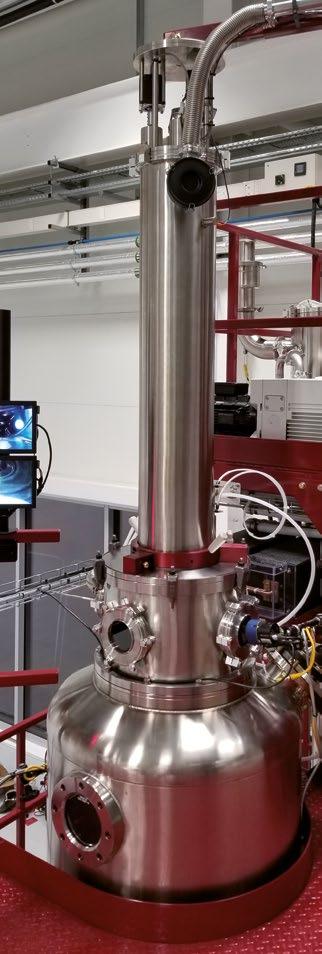
We can supply machines to atomize titanium alloys, super alloys, refractory and reactive metals, and ferrous and non-ferrous alloys in high vacuum purged vessels with inert gas replacement atmospheres.
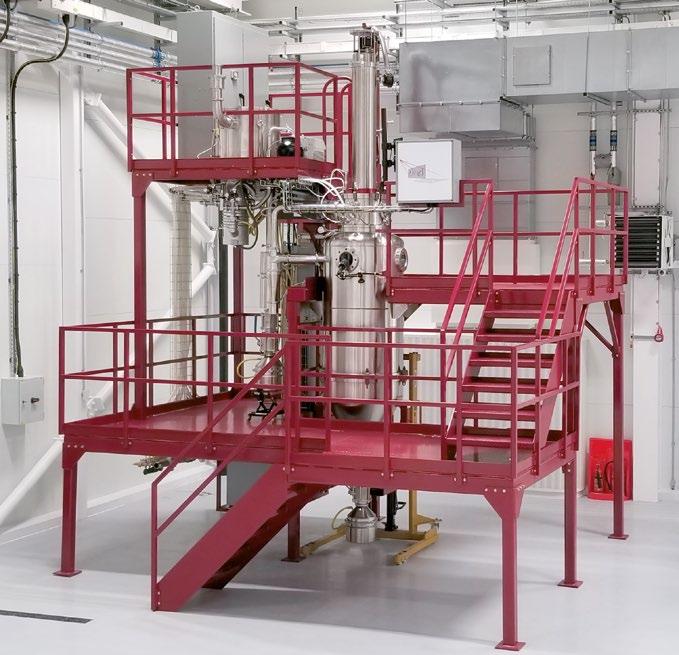
We have installed machines all over the world, from 1 kg research furnaces to 1000 kg production units.
Rio Tinto and First Quantum have also entered into a Memorandum of Understanding for strategic cooperation globally in copper and other base metals exploration and project development, as well as for sharing information and technical know-how around best-in-class mining, processing, and decarbonisation.
www.riotinto.com
THE MATERIALS TO ADVANCE MANUFACTURING

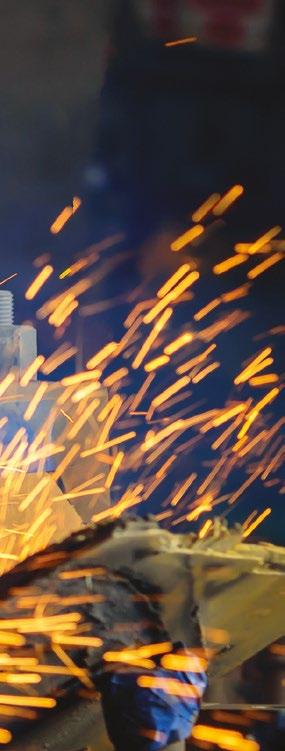
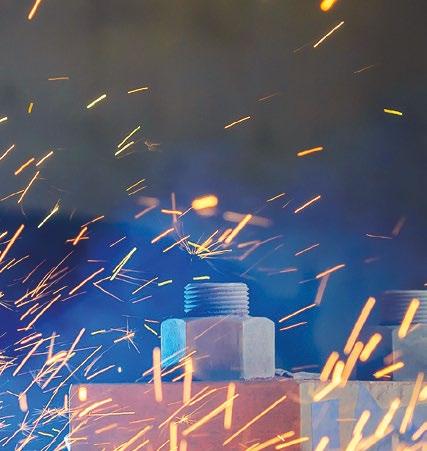


Premium metal powders for protective surface enhancements and coatings

• Industry-best wear, corrosion, and oxidation resistance


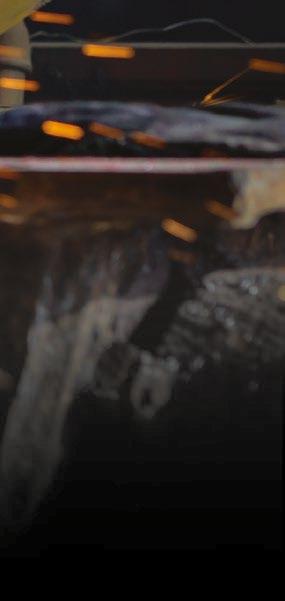

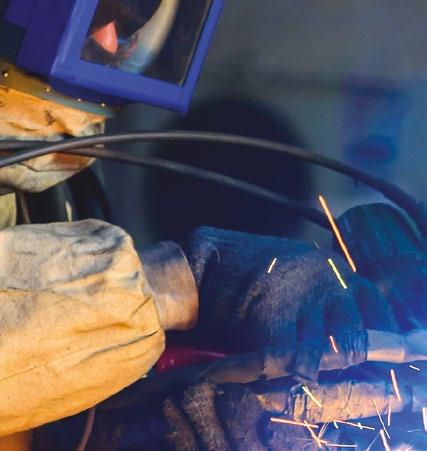


• Engineered for a range of surface enhancement processes
• Easy to use and more cost-e ective than solids
• 30 metallurgy powders in stock, custom alloys created to spec
• Production facilities around the world = supply chain security
Get the materials you need CarpenterAdditive.com/Metal-Powders



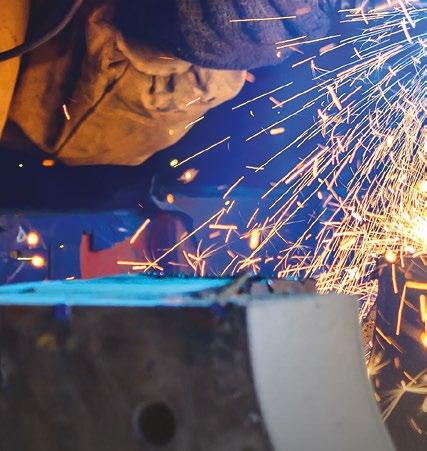
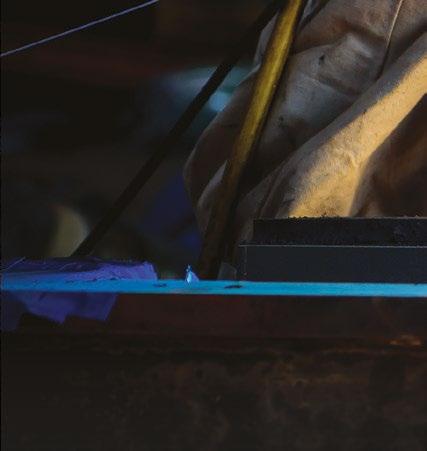





HC Starck boosts battery segment with starck2charge branded tungsten powders
HC Starck Tungsten Powders, Goslar, Germany, a subsidiary of Masan High-Tech Materials Group, has announced it is now marketing a range of tungsten powders for use in lithium-ion batteries under the starck2charge® product brand. The move follows on from the recent introduction of the starck2print® brand for Additive Manufacturing products and services.
The company reports it has made considerable progress in the lithium-ion battery sector, and acquired a 15% stake in British startup Nyobolt in July 2022. Nyobolt, which aims to launch a tungsten-based anode technology for ultra-fast charging batteries
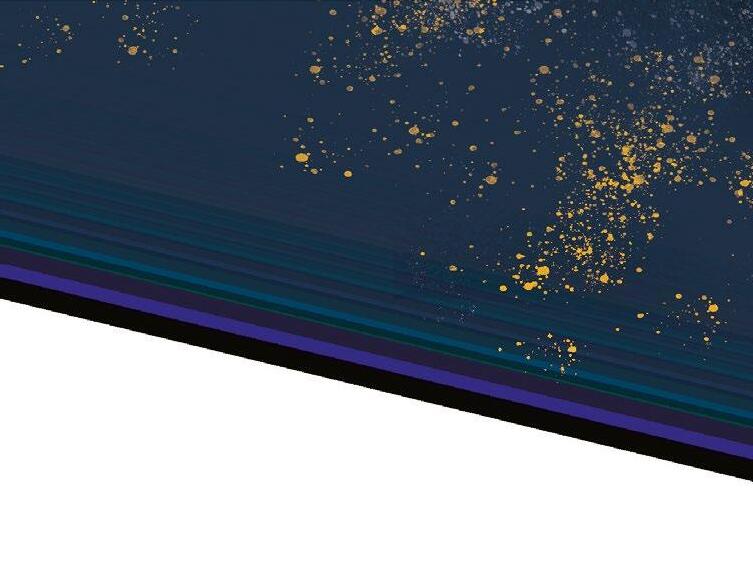
in the near future, emerged from research activities at Cambridge University and recently made it onto the Financial Times’ Tech Champions 2022 shortlist.
In parallel, HC Starck Tungsten Powders has been researching innovative coatings for cathodes together with the Centre for Solar Energy and Hydrogen Research (ZSW) in Baden-Württemberg, Germany, since April of last year. Certain powder mixtures are already available whose use in corresponding applications has been proven to increase the stability and safety of lithium-ion batteries.
“Tungsten-based products can make a significant contribution to

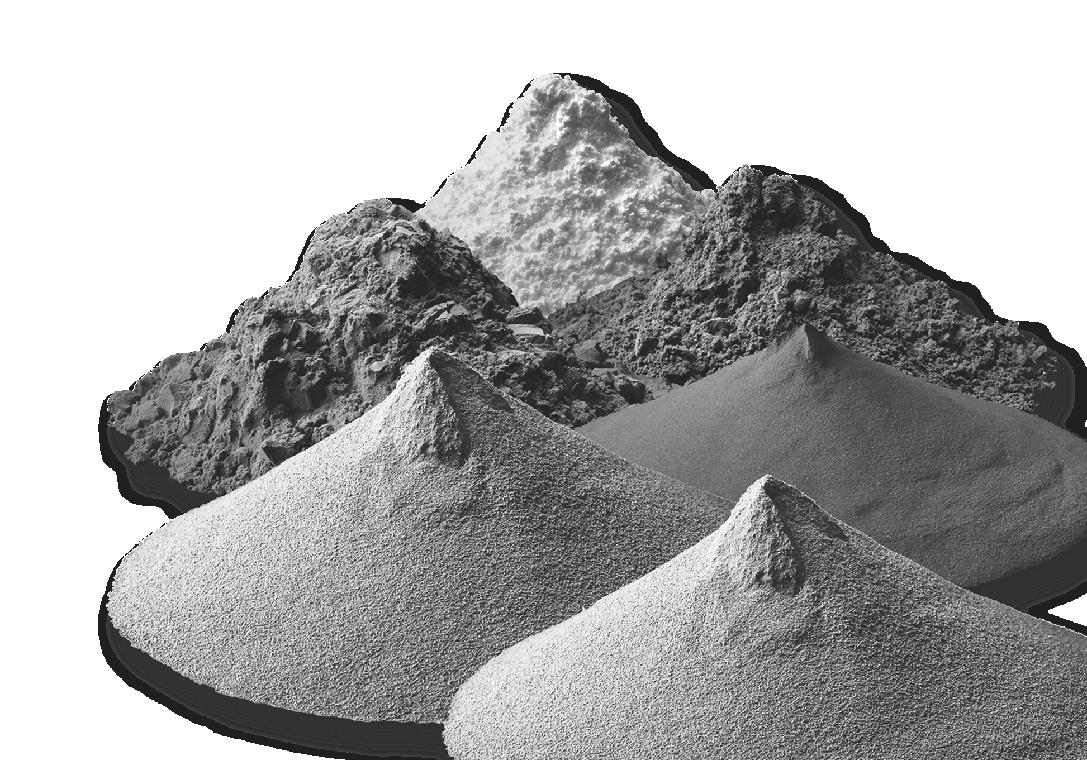
HC Starck Tungsten Powders has announced it is now marketing a range of tungsten powders for use in lithium-ion batteries under the starck2charge brand (Courtesy HC Starck Tungsten Powders)

the further development of battery technology,” stated Hady Seyeda, CEO. “In this highly innovative field, we are not only developing new products, but also interacting with new target groups. The starck2charge brand makes it easier for us to differentiate ourselves and underlines our long-term commitment to this sector.”
www.hcstarck.com
DSB Technologies announces metal Binder Jetting prototyping service
DSB Technologies, a manufacturer of PM components headquartered in Janesville, Wisconsin, USA, has announced the launch of its metal Binder Jetting (BJT) prototyping service. Through this service, customers will be able to leverage the speed and cost efficiency of metal Additive Manufacturing to iterate designs more efficiently than conventional metalworking processes.
“DSB views this prototyping program as an important stride to educating the marketplace on the capabilities of the metal binder jet technology and helping grow product application opportunities,” stated Paul Hauck, DSB Technologies Chief Operating Officer. “We are broadening access to DSB’s experienced and knowledgeable 3D printing design and process engineers for customers seeking to prototype and iterate their metal part designs.”
Customers can now design and produce metal BJT prototypes in two weeks or less for part sizes up to 15 cm 3 from 17-4 PH stainless steel. Prototypes of up to 5 cm 3 part size are available in four weeks or less in 316L stainless steel, M2 tool steel, and 4140 steel.
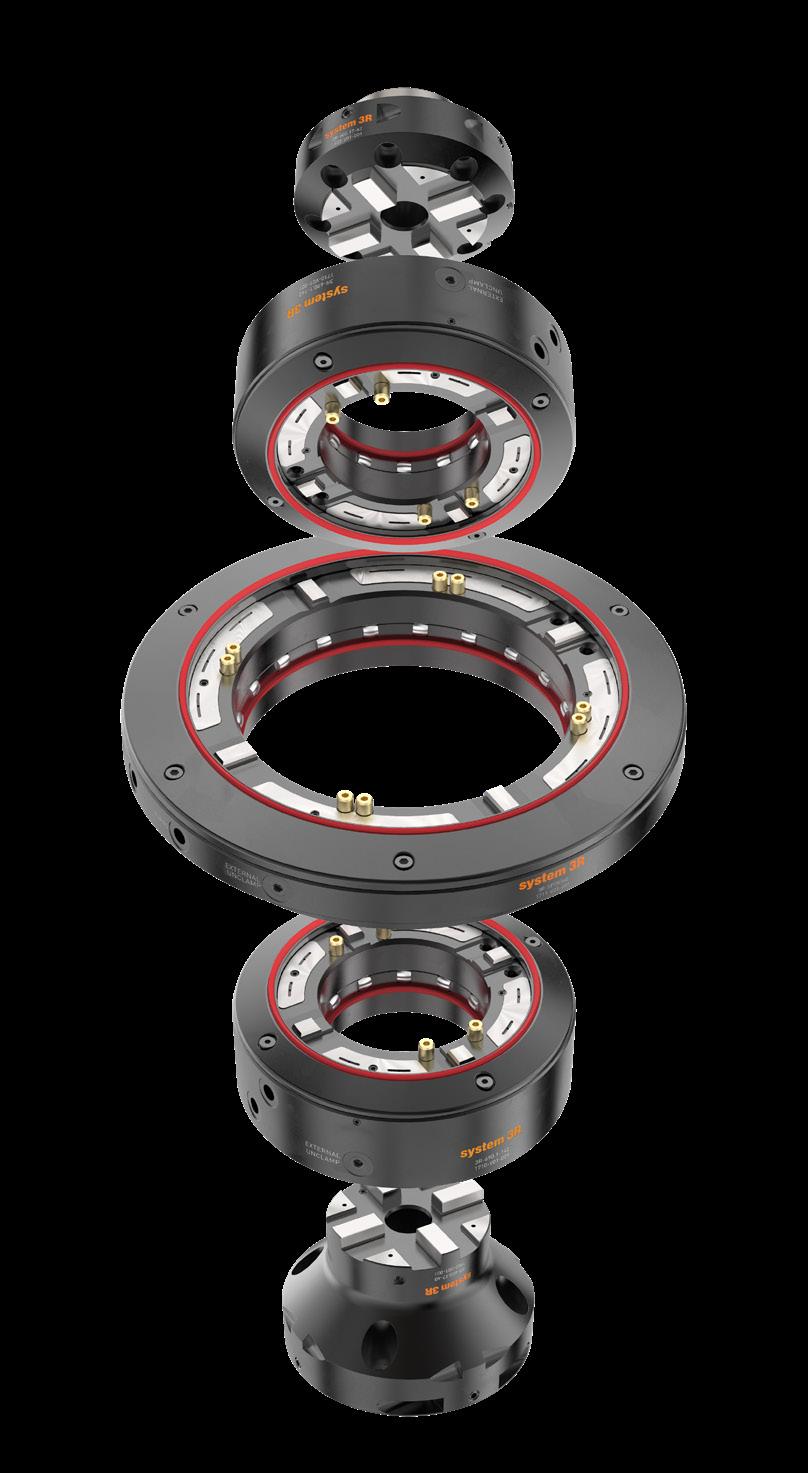
DSB Technologies has been established for over forty years and offers a wide range of metal powder-based services including press and sinter PM, Metal Injection Moulding (MIM) and metal Binder Jetting.

www.dsbtech.com
MTC Powder Solutions breaks ground on Swedish HIP facility
MTC Powder Solutions (MTC PS), Surahammar, Sweden, has broken ground on a 9,000 m 2 production site in Hallstahamma, Sweden. The new facility will be used for the Hot Isostatic Pressing of critical components for industries such as nuclear, oil & gas, and medical.
The project, named SHIN ( 進 ), is expected to significantly increase the capacity for near-net shape HIP components in Europe, with the company seeing increasing demand in existing and new industries. Since the acquisition of MTC PS by MTC in 2020, the company has made multiple investments, including the recent purchase of a new HIP unit, which will be installed in the new facility. “We are not only investing in state-ofthe-art equipment but, also in people,” stated Magnus Nyström, Managing Director at MTC PS. “We will be hiring for multiple positions in the near future. So, all skilled workers are encouraged to follow us on LinkedIn and other media in order to not miss the chance to be a part of our exciting journey.”
www.mtcpowdersolutions.com
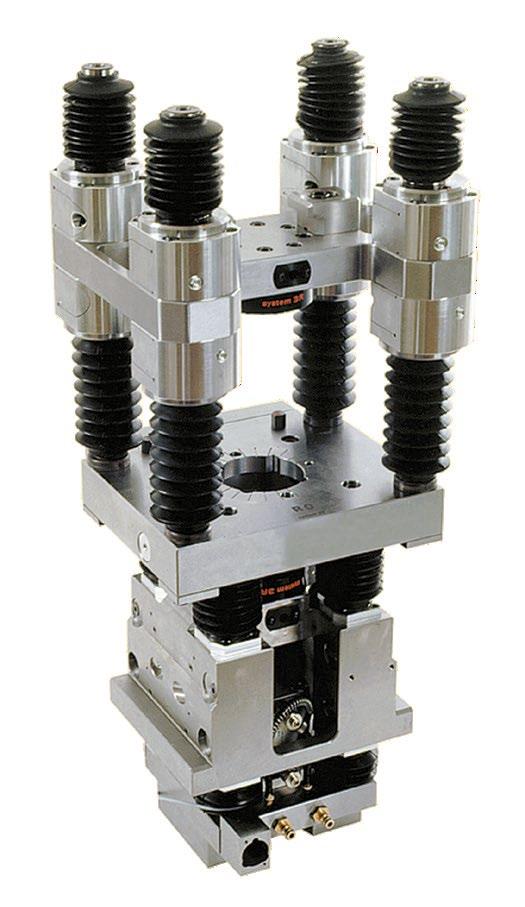
Sandvik’s metal powder shop Osprey Online is open for business
Sandvik AB, Sweden, reports that Osprey® Online, the company’s metal powder online store, has now officially opened. Osprey Online will initially offer titanium powders, maraging steel, and nickel-based superalloys, as well as stainless steels such as duplex and super duplex, austenitic, martensitic, and precipitation-hardening steels from stock through an on-demand platform accessible from any device.
Mill Rock Capital acquires Asbury Carbons
Mill Rock Capital, New York City, USA, a growth and operations oriented private investment firm, has announced that it has formed a new growth platform, Mill Rock Advanced Materials LLC, focused on investments in the advanced materials and industrial additives solutions markets. It was also announced that this platform has acquired Asbury Carbons, Inc., from the Riddle family and the Asbury Carbons, Inc. Employee Stock Ownership Plan (ESOP). In connection with the transaction, Stephen A Riddle has made a significant investment in the company and will remain on its board of directors. Financial terms of the transaction were not disclosed.
“Mill Rock is the ideal partner for the success of the Asbury organisation, our people and our customers. Their ongoing investment and additional resources will support our unwavering commitment to provide our customers with the same highquality, bespoke products they’ve counted on for the last 128 years, while developing new advanced materials and additive solutions for next-generation challenges. Our industry is entering a growth phase in which differentiated graphite applications are in high demand,
The webshop offers a range of standardised alloy powders for Additive Manufacturing and will service Europe as a first step, with additional markets being included shortly.
The platform was launched with a special episode of the company’s interactive webinar series Additive By Sandvik: Material Matters, and offered viewers insights into its range of alloys.
and Asbury is optimally suited to meet those needs,” stated, Noah Nichelson, president.
Asbury, founded in 1895 by Harry M Riddle in Asbury, New Jersey, is a leading provider of advanced materials, specialising in carbon additive solutions for a wide range of end markets and applications. The company is a supplier of graphite and carbon powders for non-ferrous Powder Metallurgy, including brass and bronze applications, protective coatings for sintering trays, and Metal Injection Moulding. Options are available for every powder metal application in custom shapes and sizes, including micron-sized powders and an advanced line of graphite nanoplatelets.
Asbury sources materials on a global basis and operates twelve facilities in which the company processes and distributes a broad range of application-specific materials and additives to customers’ exacting performance requirements. Asbury’s manufacturing and distribution locations are located in the US, Mexico, Canada, and the Netherlands, with sales offices across North America, Europe and Asia.
In connection with the transaction, Mill Rock has appointed Gregg A Jones as Asbury’s chairman and Chief Executive Officer. Previously, Gregg was CEO of EP Minerals. Scott Palm has joined as Senior Vice President Strategy and Innovation, having previously served in a similar role at EP Minerals. Eric Walmet, formerly
Luke Harris, Sales Director at Sandvik Additive Manufacturing, stated: “It was such a great honour to take part in this webinar, and to finally unveil Osprey Online in full. Getting to interact with the audience while presenting this solution and the ways in which it can make a true difference in our customers’ businesses, was so rewarding. Now we’re eagerly anticipating feedback, to keep improving and remain the most customer-centric partner we can be.”
Visit the shop here: www.metalpowder.sandvik/en/webshop/ www.metalpowder.sandvik
of Ingevity Corporation, has joined Asbury as Senior Vice President Operations. All positions are new or were previously vacant. Noah Nichelson will remain president and Chief Operating Officer. Ed Rose, Mill Rock Senior Partner and former president of Ingevity Corporation, will join Asbury’s board of directors.
“I’m delighted to join the Asbury team and see a very bright future for our business and the graphite industry,” stated Jones. “This is an exciting day for Asbury’s associates and customers as we embark on a new chapter of growth. Asbury has cultivated the leading market position over many years through an unparalleled focus on customer success and product innovation. Going forward, we will seek to accelerate growth through further investment in people, applications, processes and systems, as well as through selective acquisitions.”
Mill Rock co-founders Christopher Whalen and Adi Pekmezovic added, “We are incredibly honoured that the Riddle family has entrusted us with the business they started nearly 130 years ago. We are eager to continue their legacy and invest in the company’s next phase of growth and product innovation. Asbury pioneered the North American graphite market and is the consummate foundation upon which to build an advanced materials platform.”
millrock-cap.com www.asbury.com
Navigation and Support
In a complex industry, we’ll guide you the entire way.
We’ve got one mission, to support as many metal part makers in the MIM and Metal AM industry as possible. Our team of processing experts utilize 20+ years of experience to share all our knowledge and help you overcome challenges, develop better processes and become successful part makers. We help develop real world, practical solutions based on many lessons learned along our journey. Being the ONLY debind and sinter service provider with full sized production equipment, we are honored that we have been able to support every industry currently utilizing MIM and Metal AM. DSH is the only source for the best process support, toll processing and educational resource for your MIM and Metal AM applications.
We offer:
Remote Process Engineering, Small/Large Toll Processing, R+D projects, Educational Support on Total Process Management.



Mapal relocates its Polish head offices
Mapal Narzędzia Precyzyjne (Mapal Precision Tools) has relocated to a new head office in Komorniki, Poland, not far from the company’s previous Poznań headquarters. The new building features office space, conferences rooms and social areas, as well as a fully-equipped showroom. The company has invested around €2 million in the new site.
“Our business in Poland has developed brilliantly over the past twenty-five years,” stated Jochen Kress, president of the Mapal Group, at the opening of the facility. “Demand for our products has steadily increased and it makes us proud that we’re taking on a leading role as a tool supplier and service provider in Poland especially in the area of tool management. Of course, we also owe this to our competent team on-site, which takes excellent care of our customers and ensures
the smooth running of the manufacturing processes.”
In Poland, Mapal Narzędzia Precyzyjne serves the production plants of international automotive and mechanical engineering manufacturers, among others. A collaboration with the commercial agency Gallo-Ex in Poznań that began in 1996 led to its takeover in 2002. Since 2005, the branch office has been trading as Mapal Narzędzia Precyzyjne. In 1997, Mapal received a major order in Poland from a diesel engine manufacturer in Tychy, and in 2004 it took on its first tool management project for the VW plant in Poznań. Mapal reamers entered the Polish market as far back as the 1970s. At the time, the buyer was one of the largest ship engine manufacturers in the country.
The branch office has cooperated with the affiliated company Mapal C&S in Mladá Boleslav, Czech Republic, for many years. Mapal C&S is responsible for repairing PCD and solid carbide tools for customers in
Poland. Mapal Narzędzia Precyzyjne also maintains a close working relationship with the headquarters in Aalen, the Mapal Centres of Competence in Germany, and the plant in Italy.
“We’re going to become even more involved in the e-mobility, aerospace, die & mould and fluid power market segments with product programmes that focus on application and we’re going to expand our presence in these sectors,” continued Kress.
Mapal employs seventy-two qualified specialists in Poland, including thirty-one engineers.

During the opening ceremony, Aleksander Zielonka, CEO of Mapal Narzędzia Precyzyjne, explained, “It was a great decision to expand our available space. We now have sufficient resources in Komorniki to expand our activities. We can also provide our employees with a very appealing work environment where they’ll feel comfortable and can continue to develop.”
www.mapal.com
Malvern Panalytical opens new applications lab in Taiwan
Analytical instrumentation supplier Malvern Panalytical, part of Spectris plc, Egham, UK, has opened a new application laboratory in Neihu Taipei, Taiwan. The new facility will showcase Malvern Panalytical’s comprehensive range of material characterisation solutions, including the Mastersizer 3000 particle size analyser
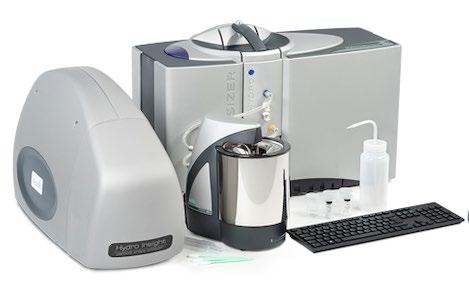
“The lab represents a significant investment of over 25 million NTD [approximately $814,000], which reaffirms the company’s commitment to Taiwan and its strong growth,” stated Mark Fleiner, president, Malvern Panalytical.
Malvern Panalytical’s material characterisation tools are used by quality control and research and development groups for structural, elemental, and particle size and shape analysis. The company develops solutions
to help academia and industry investigate the smallest details in pharmaceuticals, chemicals, Powder Metallurgy, environmental, Additive Manufacturing, cement, steel industries, and more.

Since opening its office in Taiwan in May 2022, Malvern Panalytical has established a sizeable workforce, including application experts as well as sales and service specialists. The team has received expert training from the company’s global headquarters in the UK and the Netherlands, as well as its Centre of Excellence in Singapore.
“We are proud to be able to offer our clients the best service possible through our globally supported network of local application experts, irrespective of where they are located in Taiwan,” added Anderson Chou, Regional Manager for Applications and Customer Support.
Malvern Panalytical will showcase its range of material characterisation equipment, including the Mastersizer 3000, at its new facility in Taiwan (Courtesy Malvern Panalytical)
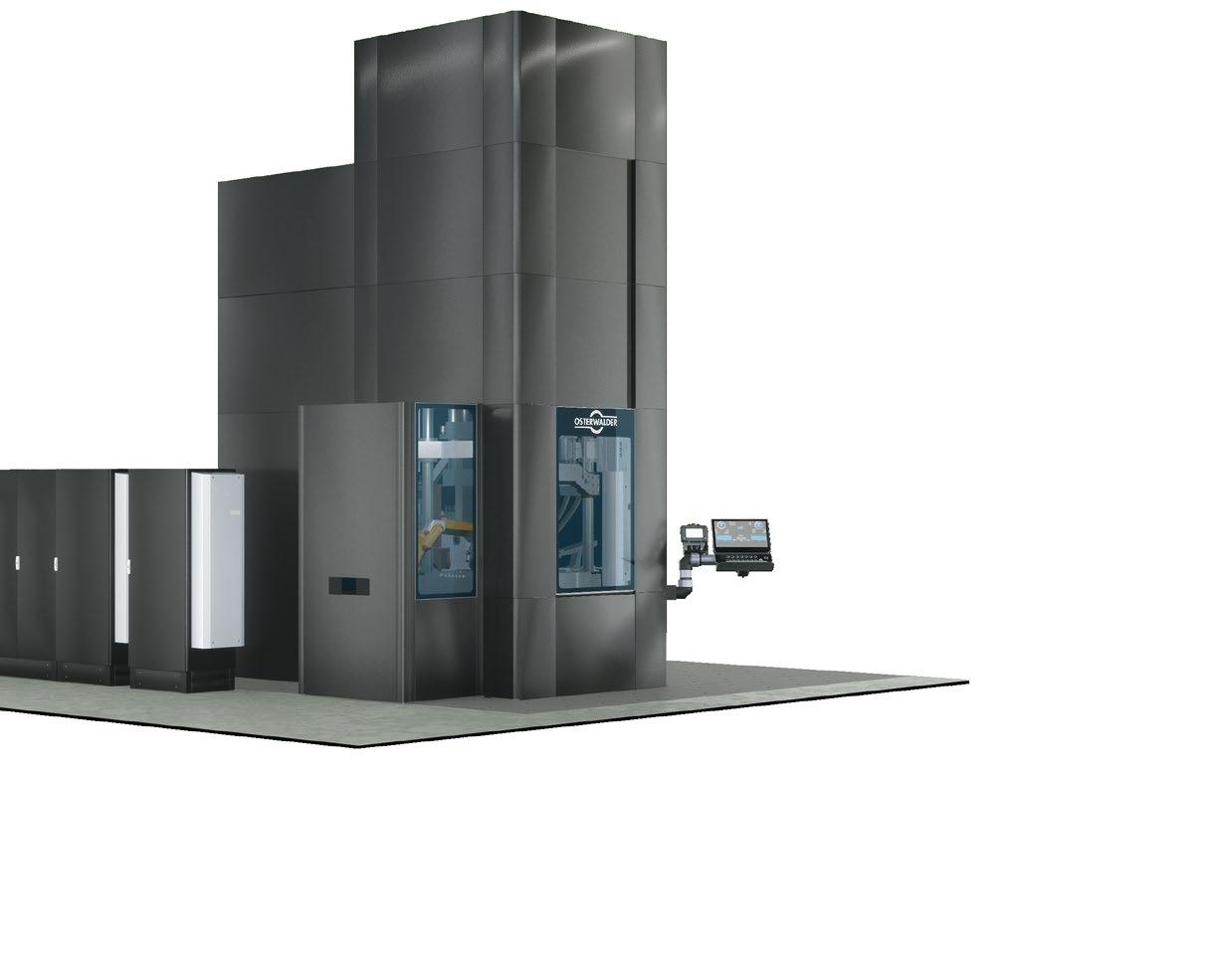
In addition to the lab, the facility features training rooms for workshops, user meetings, and technical discussions.
“I’m thrilled to announce that we are offering all our clients at least six free user trainings this year, as well as training for anyone wishing to expand their knowledge of different techniques,” said Melissa Ho, Regional Marketing Manager, Malvern Panalytical. www.malvernpanalytical.com
Steppe Metal Powder achieves ISO 9001:2015 certification for quality management
Steppe Metal Powder LLC (SMP), based in Ulaanbaatar, Mongolia, has announced it recently achieved ISO 9001:2015 certification for its quality management system. The certification was awarded after an extensive audit of the company’s processes, procedures and systems by an independent third-party assessor.
ISO 9001 is an internationally recognised standard for quality management that provides a framework for organisations to improve customer satisfaction, reduce waste and increase efficiency. By achieving this certification, the company reports it has demonstrated a commitment to delivering high-quality products and services to customers, while continuously improving its operations.
“This achievement is a testament to the hard work and dedication of our team,” stated Askhar Bakyei, CEO of SMP. “We are committed to delivering the best possible products and services to our customers, and this certification is a clear demonstration of that commitment.”
SMP was established in 2017 and operates the country’s first ever metal powder production plant in Ulaanbaatar. The company uses London Metal Exchange (LME) Grade A copper certified by an internationally credited laboratory to produce and sell water atomised copper and copper alloy powders.
“We are excited about the opportunities that this certification will bring,” added Undrakh Nergui, CPO of SMP. “It is a clear signal to our
Masan High-Tech Materials announces record revenues in 2022, plans for future
Masan High-Tech Materials Group, headquartered in Ho Chi Minh City, Vietnam, has reported record revenues of VND 15,550 billion in 2022, an increase of 15% compared to FY2021. Tungsten trioxide revenue increased by 13%, with midstream products (tungsten carbides and powders) produced by HC Starck Tungsten Powders, accounting for 70% of that growth. EBITDA increased by 5%, reaching VND 3,203 billion – reportedly the second highest EBITDA ever achieved.
“Masan High-Tech Materials had a year of challenges, overcoming market fluctuations and impacts of various factors in the region and the world,” stated Craig Bradshaw, CEO. “Though Tungsten revenues and tungsten scrap recycling rates were significantly higher, contributing to delivering FY2022 record revenue”.
Production from tungsten scrap recycling within HC Starck increased by 13%. MHT is working to increase
the proportion of its production coming from secondary sources (scrap recycling), in keeping with the Company’s Reduce, Reuse, Recycle policy.
During 2022, Masan High-Tech Materials established a global innovation hub based on the company’s two R&D centres in Goslar, Germany, and Thai Nguyen, Vietnam. Leveraging technological advancements of HC Starck over the past 100 years, MHT continued to invest in innovation and process improvement in order to maintain its long-term growth trajectory.

The company has developed processes, solutions, and ecofriendly products to meet the global market’s unmet needs, earning ninety-five new patents worldwide and fifty patents that are still in the application stage. With extensive experience and potential in the field of supplying high-tech materials, as well as on-going research to eval -
Steppe Metal Powder, a manufacturer of water atomised copper and copper alloy powders, recently achieved ISO 9001:2015 certification for its quality management system (Courtesy Steppe Metal Powder LLC)
customers that we are committed to quality and that they can trust us to deliver the best possible products and services.”
SMP also announced it plans to pursue ISO 45001 and 17025 certifications for its occupational health and safety management system and its laboratory testing and calibration services, respectively.
www.smp.mn
uate the needs of critical industries, MHT has reported that it believes tungsten is the key to the innovation future of these industries.
Masan High-Tech Materials plans to implement the first and largest tungsten recycling plant project in Vietnam servicing the Asian region. The goal is to make Vietnam the leading tungsten and critical metals recycling technology development centre in the region.
In 2023, the company intends to further focus on developing a fully integrated circular economy model with a closed value chain that encompasses waste and scrap collection, processing, recycling of scraps, and raw material recovery. Accordingly, tungsten will be recovered from used batteries and industrial wastes, then recycled to be used as feed materials for new product development. The company expects net revenue in 2023 of VND 16,500 billion to VND 18,200 billion, an increase from 6% to 17% compared to the previous period.
www.masanhightechmaterials. com
COMPACTING SOLUTIONS FOR EVERY NEED
As a result of many years in the Powder Metal field and over a century of experience in designing machinery for many industries, SACMI presses are technologically advanced yet simple, safe, and highly reliable.
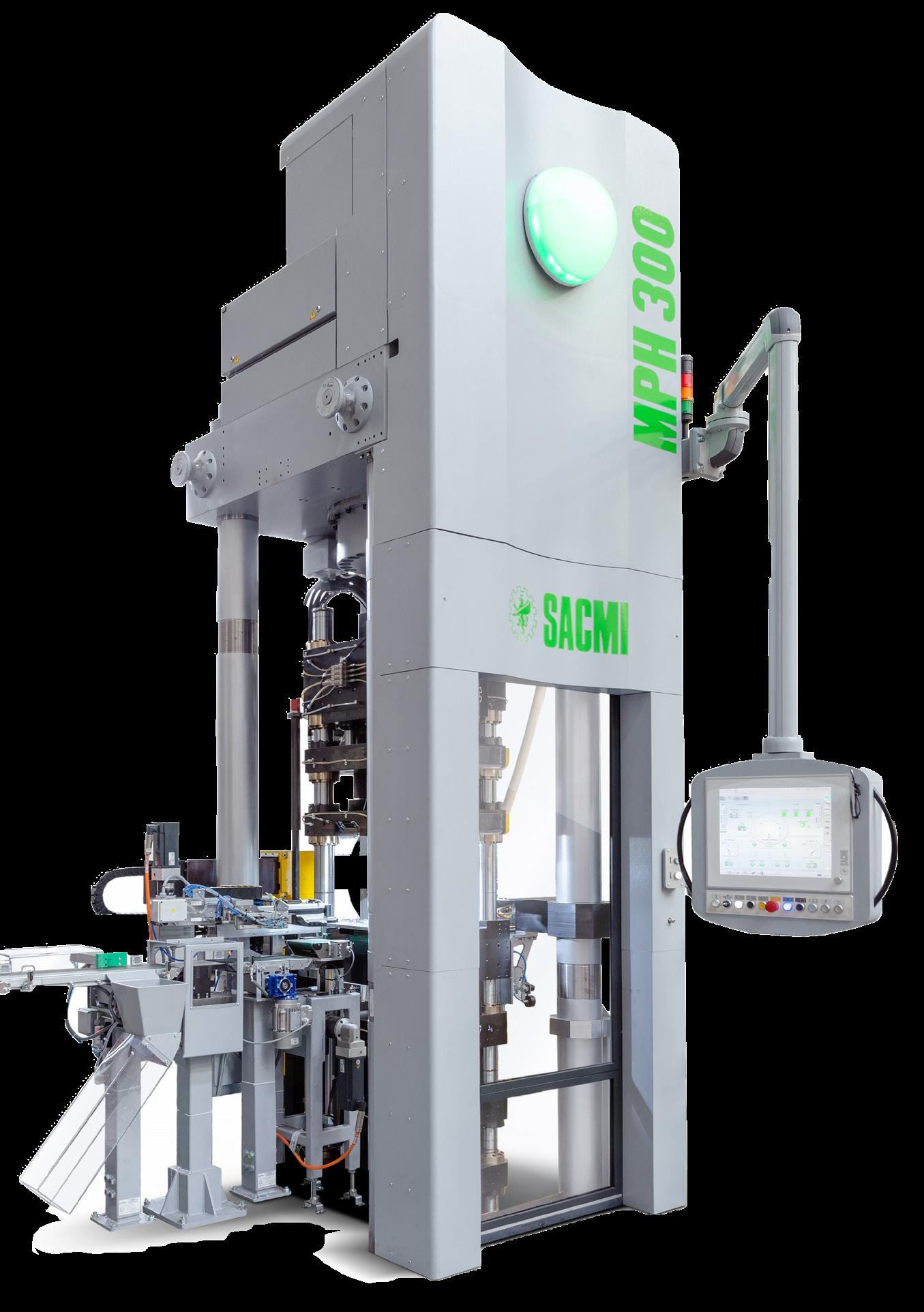

MPH fully CNC hydraulic presses, suitable for high-speed cycles and continuous work shifts, grant extreme flexibility during the tooling and set-up stages; they offer outstanding energy efficiency and are the right choice for the compaction of multi-level parts of whatever powder.
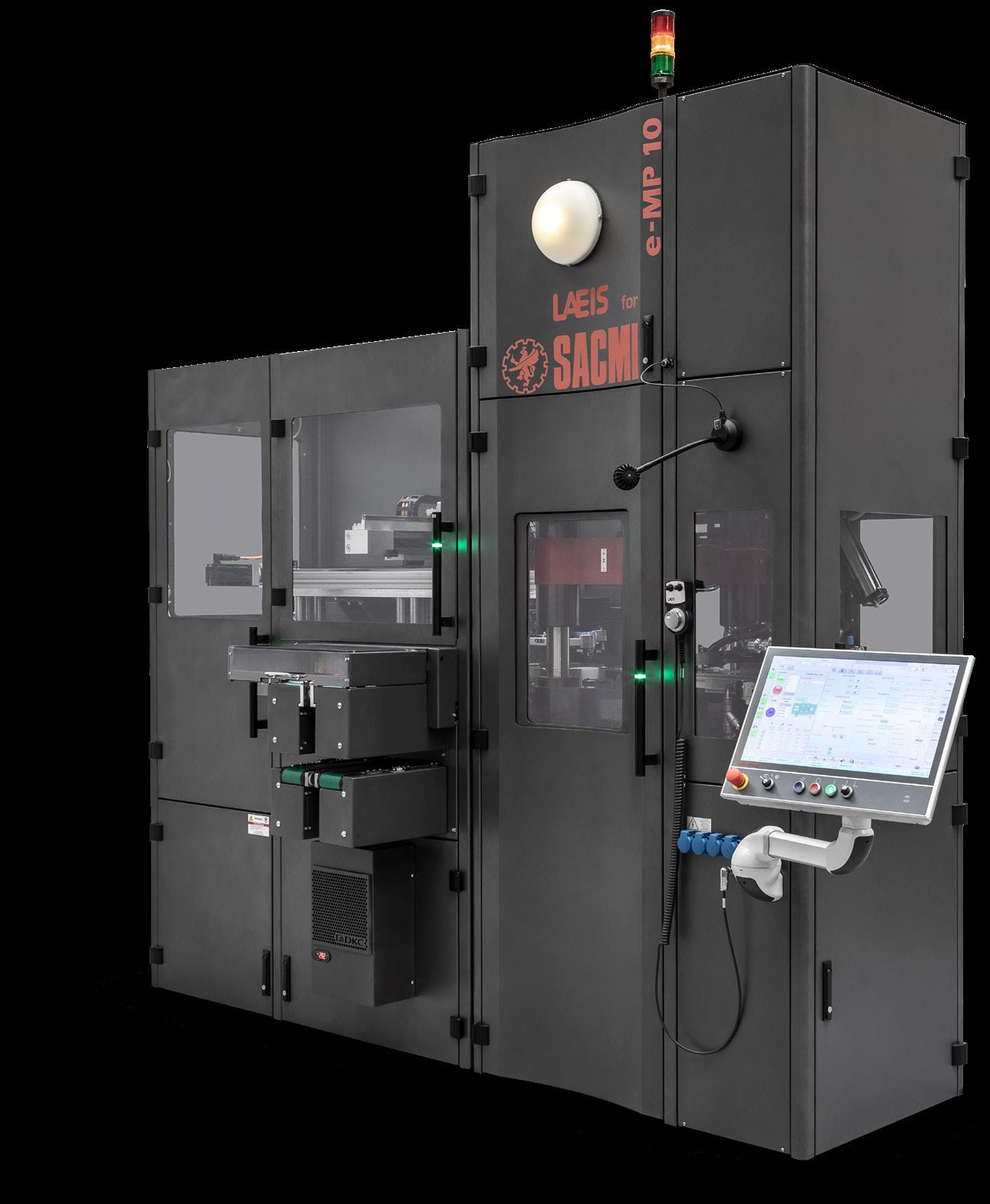
The last-born e-MP full electric presses, besides their outstanding precision and productivity, find their perfect application in the hard metal market for the production of cutting tools and inserts, but also in the field of Technical Ceramics, thanks to their appreciated flexibility of operation. They can also be equipped with an integrated automation for part extraction and palletization, allowing a very easy and efficient control of the whole productive cell.
Thanks to the competences available within the Group, SACMI also supplies state-of-art furnaces for the Powder Metal Industry and versatile solutions for automation aiming at increasing output rates while ensuring maximum simplicity of operation.
Kanthal and Rath partner to expand sustainable industrial heating technology
Heating technology company Kanthal, headquartered in Hallstahammar, Sweden, and hightemperature refractory product manufacturer Rath, based in Vienna, Austria, have announced a strategic partnership to expand its combined offering in industrial heating technology.
The partnership is said to bring together the complementary strengths of both companies, creating a broad range of sustainable industrial heating solutions. Kanthal’s experience in heating
Shimadzu launches XSeeker 8000 bench-top X-ray CT system
Shimadzu Scientific Instruments has introduced the XSeeker™ 8000 bench-top X-ray computed tomography (CT) system, the smallest and lightest instrument in its X-ray output class.
Despite its compact frame, the XSeeker 8000 can hold samples with a diameter up to 30 cm and a height of 32 cm. The XSeeker 8000 features a 160 kV high-output X-ray source that enables observations of thick, hard-to-penetrate plastic parts, as well as aluminium die cast and other metal components.
elements and systems combined with Rath’s insulation and refractory products aims to provide customers with a unique combined offering for their industrial heating needs.
“We are thrilled to partner with Rath to further expand our offerings in industrial heating technology enabling societies and industries to make the green shift. In this era of electrification, this partnership will provide our customers with a broader range of innovative solutions that will enable them to optimise their operations and
The newly developed XSeeker control software provides userfriendly operation and high throughput. Users can begin conducting observations in three steps. The XSeeker 8000 has four pre-set scan conditions. These four options incorporate a combination of material density and CT image quality settings. The standard software includes both cross-sectional and 3D volume rendering viewers, enabling more intuitive observations coordinated with the cross-sectional display function.
A single scan can be completed in as little as 12 seconds due to the proprietary CT image reconstruction algorithm. All processes of repetitive scanning in inspection applications — from start of scanning to observing cross sections of
GKN India receives Mando Automotive supplier award
GKN Powder Metallurgy has announced that its GKN Sinter Metals India facility has been awarded by Mando Automotive India as the Best Supplier of the Year 2022 for the Cost, Quality, Delivery & Parts Development.
“Thank you to Mando for recognising our continuous excellence and dedication to meet their highest standards,” the GKN team stated on LinkedIn. “Thank you to our teams for their hard work and commitment – a well-deserved recognition! We
achieve their sustainability goals,” stated Robert Stål, president of Kanthal. “Together, we can leverage our collective expertise to deliver greater value to our customers and help them thrive in a rapidly evolving market.”
“For quite some time, we have been focusing on sustainability in all our activities – be it when it comes to developing energy-saving refractory products or, more specifically, refractory materials that can be used to line electrically heated furnaces. With the latter, we will – together with our strategic partner Kanthal – enable customers’ shift towards fossil-fuel free production,” added Andreas Pfneiszl, CFO/CSO of Rath.
www.kanthal.com
www.rath-group.com
interest — are reportedly available at the push of a single button.
Discover more here:
www.ssi.shimadzu.com/products/ non-destructive-testing/microfocusx-ray-ct-system/xseeker-8000/index. html

www.ssi.shimadzu.com
look forward to another successful year!”
Mando Automotive India Private Limited, established in 1997 as a joint venture between the ANAND Group and Mando Corporation, Korea. It is a leading manufacturer and supplier of high-performance brake systems, shock absorbers and struts to Indian, European and American OEMs.
www.gknpm.com
Global Tungsten & Powders
Security of supply
High quality and purity
Responsible sourcing
Tolling services
Recycling services
Think Tungsten. Think GTP.
Whatever you create out of tungsten, be sure to start with the best powders on the market.
Whether for additive manufacturing, hard metals industry, oil/gas, tungsten metal, or tungsten heavy alloy applications, Global Tungsten & Powders offers the perfect powder blends. Our laboratories are equipped with the latest technologies allowing material measurements down to the atomic level.
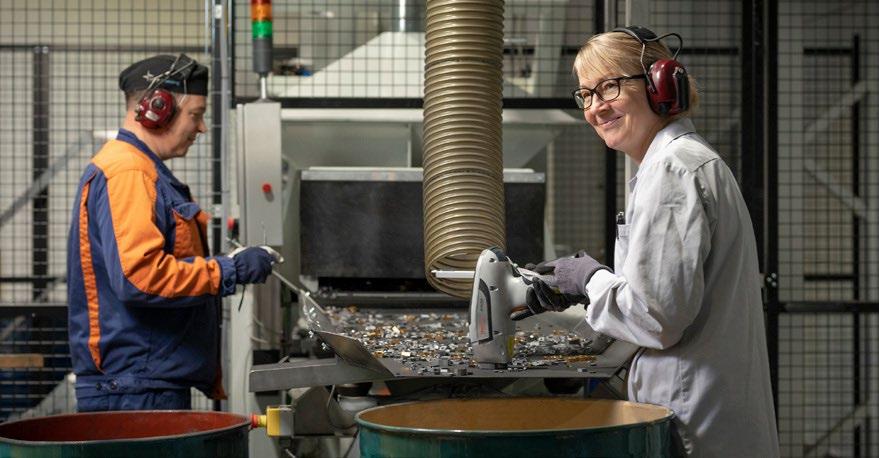
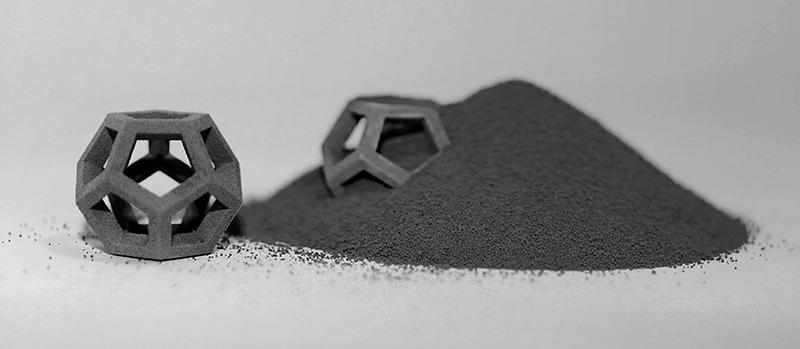
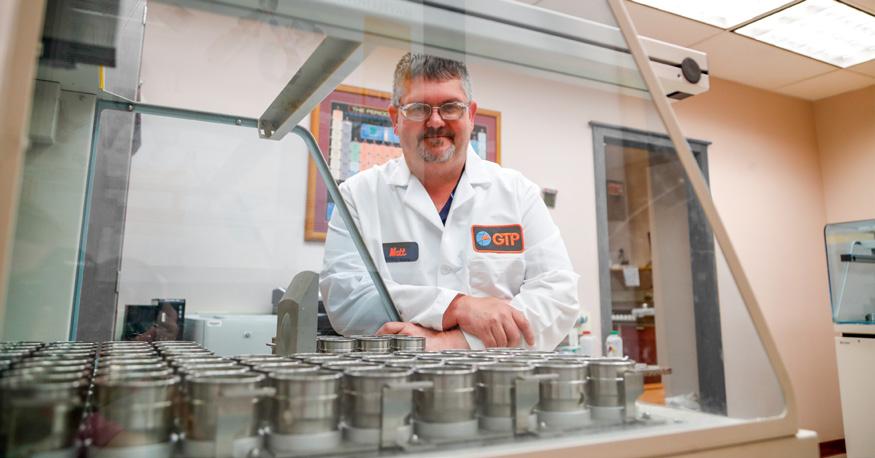
Additionally, GTP recycles any tungsten containing scrap you may have on hand. Benefit from our long standing expertise, especially in utilizing the zinc process for the recycling of tungsten carbide in industrial scale.
Talk to our experts to see how we can help.
www.globaltungsten.com
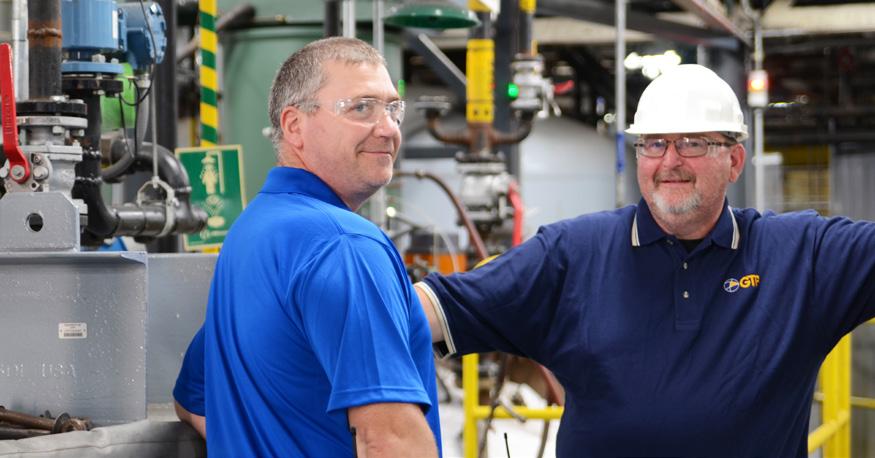
Tekna receives three orders for plasma powder production systems
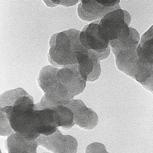
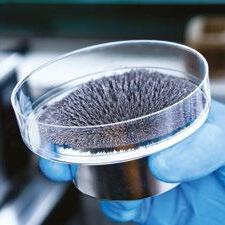
Tekna Holding ASA, Sherbrooke, Quebec, Canada, has received orders for three more plasma systems valued at a total of CAD $2.6 million. The customers are based in Europe, Latin America, and Asia, and will reportedly use the new machines to focus on research and development applications.
“With these three orders, five in total in 2023, the encouraging trend that we have observed after the Covid-19 pandemic continues, with increased activity among our existing and prospective customers and a strong pipeline of projects and demand for our advanced plasma systems,” stated Luc Dionne, CEO of Tekna. “They also demonstrate the versatility of our technology and its many uses across a wide range of industries, which are now increas -
ingly relying on advanced materials to produce novel and betterperforming products.”
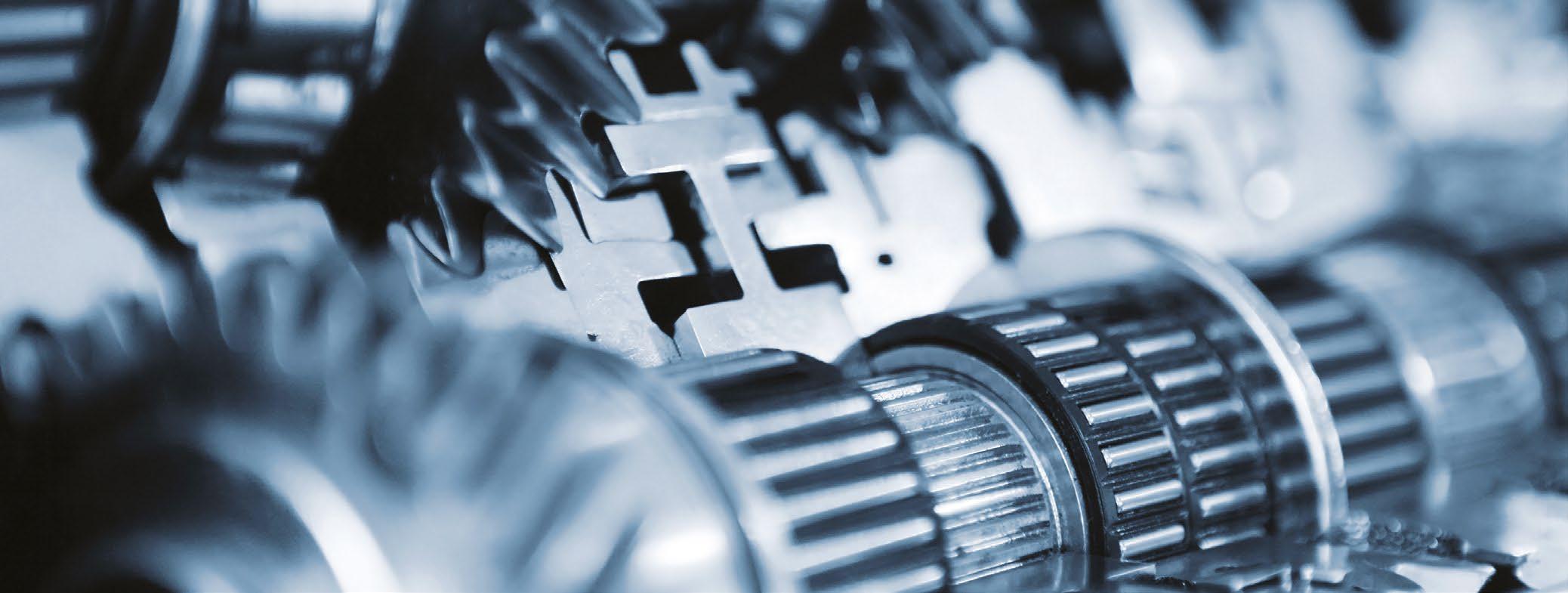
The order is for one TekSphero-40 and two TekSphero-15 plasma systems. From feedstocks made of crushed, atomised and sponged powders – ranging from 5-500 µm – the machines produce spherical metallic or ceramic powder particles. The TekSphero-15 is a compact spheroidisation unit focused on R&D applications whilst the TekSphero-40 is a pilot production unit adapted for the scaling up of powder production.
Tekna plasma systems are available in multiple configurations and are designed to provide customers with state-of-the-art advanced materials research capabilities. These systems serve a variety of
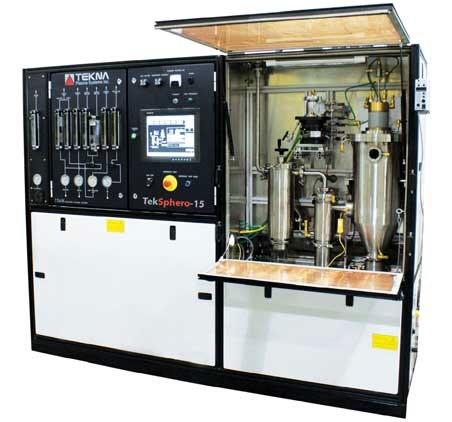
The two TekSphero-15 plasma systems (above) and one TekSphero-40 will be used for R&D purposes (Courtesy Tekna Holding)
industries and academic research, including, for these new orders, medical implants and refractory materials.
At the end of 2022, Tekna’s Systems business had an order backlog of nearly CAD $11 million. www.tekna.com
IMERYS
ENSACO®
Tailor made solutions with superior consistency with respect to: purity, crystallinity, particle size distribution and oversize control Imerys grades are ideally suited to powder metallurgy applications for electrical and hybrid vehicles

Wire-Mesh Products acquires Penn Wire Products
Wire mesh belt producer Wire-Mesh Products, Inc., (WMP) York, Pennsylvania, USA, has announced its acquisition of Penn Wire Products Corp (PWP), an experienced supplier of wire belts and related conveyor components located in Lancaster, Pennsylvania. This merger will expand WMP’s management team and bring together over eighty manufacturing personnel.
“PWP’s extensive knowledge in the woven wire conveyor belt industry is an excellent addition to WireMesh Products,” stated Richard Riva, WMP owner and president. “We are excited to see what the future holds as we welcome their accomplished team members into our second-generation family business.”
Dustin Carl, owner and vice president of WMP, added, “Wire-Mesh Products takes pride in its success with specialising in high-temperature belts over the past forty years. We look forward to seeing how this merger with PWP will continue to strengthen our position in the food industry and build up our portfolio of available food-processing products.”
www.wire-mesh.com
www.pennwire.com
US Government launches EV Acceleration Challenge
In support of the US President Joe Biden’s stated goal of having 50% of new vehicle sales being electric by 2030, the White House has launched the EV Acceleration Challenge. This call to action is for all stakeholders, public and private, to dedicate resources and independent commitments to support the transition to EVs.
The challenge is focused on four primary categories:
• Tools and Resources

• Consumer Education and Support
• EV Fleet Expansion
• Community Charging Organisations of any size are able to make a commitment, including automakers & suppliers, technology companies, advertising & marketing companies, retail property owners, non-profit organisations, philanthropic organisations, trade associations, state/local/territory/tribal governments, schools & universities, and community-based & neighbourhood organisations.
The White House website will highlight submissions on a rolling basis from submission. www.whitehouse.gov
PM Tooling System
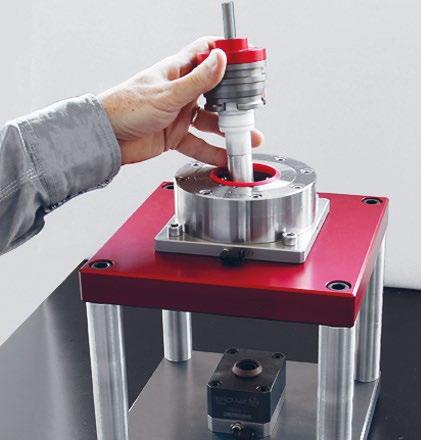
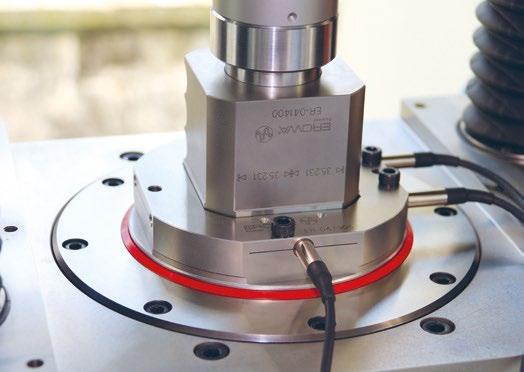
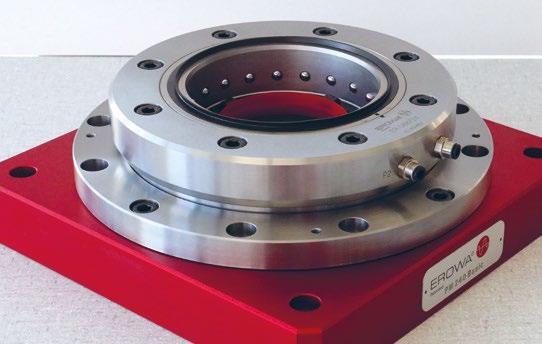

www.erowa.com
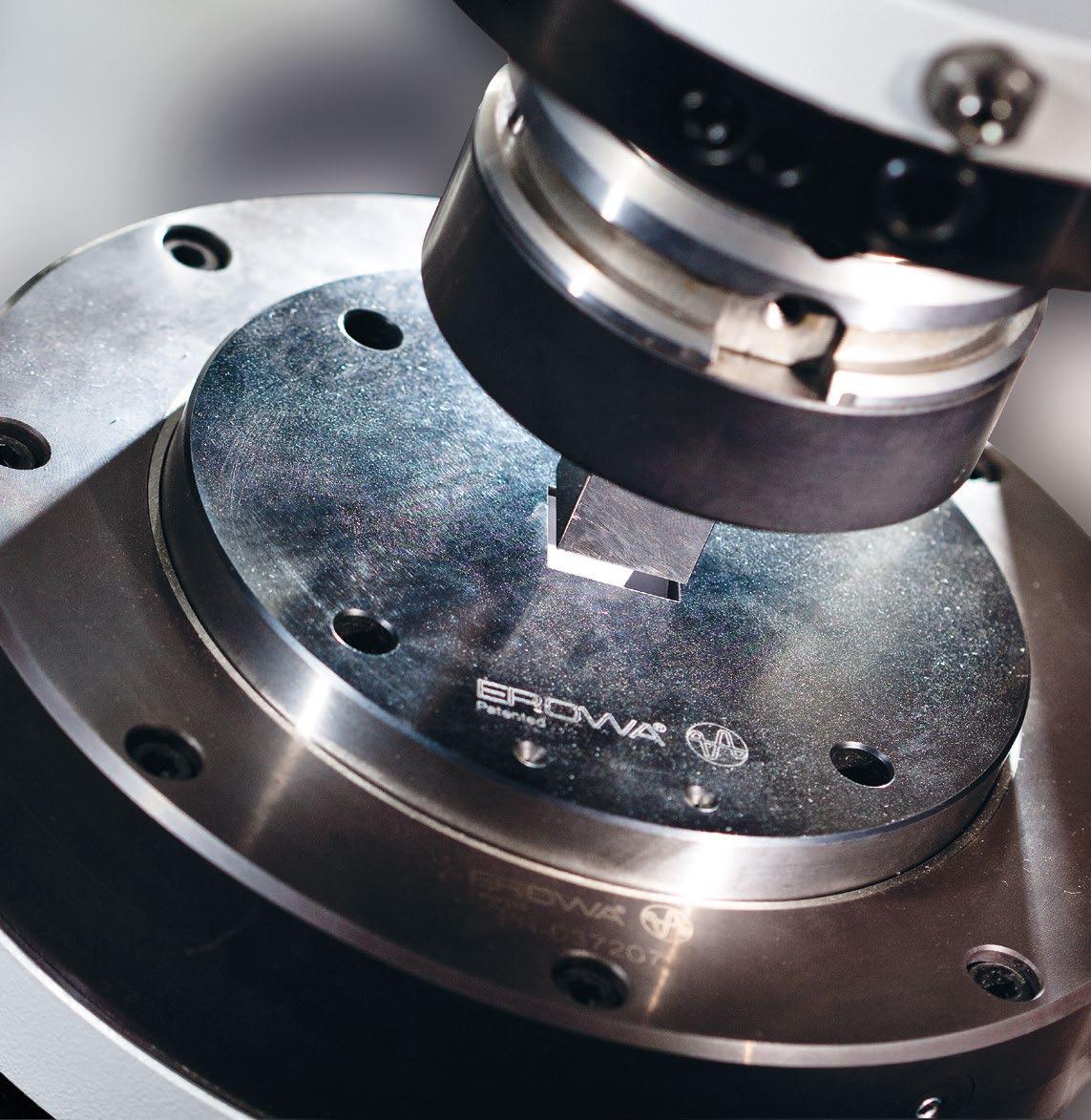
The EROWA PM Tooling System is the standard interface of the press tools between the toolshop and the powder press machine. Its unrivalled resetting time also enables you to produce small series profitably.
GKN Automotive partners on European R&D project for next-gen electric motors

GKN Automotive has joined a new €4 million European research and development project launched by Mondragon University, Spain. The project aims to develop lower-cost, more efficient permanent magnet electric motors with increased power density for mass-produced, nextgeneration electric vehicles.
The concept of a low-cost, highpower-density and highly efficient recyclable motor for next-generation mass produced electric vehicles includes a set of changes to the electric motor configuration and materials that will be validated on two variants of the electric motor. These changes will allow magnets in the electric motor to be smaller in size, contain less rare earth material, and be eligible for reuse and recycling. Compared to two main reference electric motors already on the market, the final electric motors are said to offer up to a 20% reduction in power losses, a 28% reduction in production costs, and a reduction in material use of up to 66%.
A long-term circular strategy for rare earth critical raw materials
(CRM) will be implemented, targeting a reduction in the use of two key rare earth materials (neodymium and dysprosium) of up to 80% and recycling more than 80% of any rare earth material used. This is intended to conserve resources and create increased resilience in the European supply chain.
The project – HEFT – is funded by the European Commission and includes a total of eight partners from Belgium, Italy, Slovenia, Spain and the UK. GKN Automotive joins as a key industrial partner, assuming responsibility for manufacturing and assembly, and ensuring the final electric motor design meets industry needs and requirements. Other partners in the consortium are Magneti Ljubljana, Vyncolit, Ikerlan, the University of Nottingham, the University of Bologna and KU Leuven.
“The HEFT project is an exciting opportunity to develop the nextgeneration of eMotors that will be more sustainable and efficient, while costing less to manufacture. I believe development in these areas is key to the future of electric mobility so
I’m delighted that we can contribute our expertise in eDrive innovation as an industrial partner, helping to meet an industry need,” stated Aitor Tovar, Senior Global Manager eMotor Development at GKN Automotive. “Minimising the environmental impact of manufacturing, particularly through a reduction in the use of rare earth critical raw materials, is an essential consideration in the development of future products, so the implementation of a circular economy strategy is another key motivation in our participation in this project.”
Javier Poza, HEFT Project Coordinator and Head of Electric Machines and Drives research group at Mondragon University, commented, “The HEFT project will allow European companies, research institutions and universities to successfully position themselves in the market, improving their capabilities and know-how in highly efficient and cost-effective eMotor design and manufacturing. It will also promote new job opportunities linked to magnet recycling and circular economy for rare earth-based magnets.”
HEFT plans to organise OEM workshops to increase the adoption of its solutions. It will also work with policymakers to promote regulations that will help maintain the leadership of EU companies while increasing their competitiveness and job opportunities linked to the new circular business models.
HEFT will also be aligned with the European Raw Materials Alliance (ERMA) action plan towards a circular economy market of rare earth permanent magnets. HEFT will be supported by an advisory board, including companies, institutions and alliances, to ensure the competitiveness and success of the project results.
All the work from GKN Automotive will be carried out from its facility in Zumaia, Spain.
www.mondragon.edu www.heftproject.org www.gknautomotive.com

Titan Tool Supply introduces industrial zoom microscope

Titan Tool Supply Inc, Buffalo, New York, USA, a supplier of industrialgrade optical instrumentation and precision micro finishing tools, has introduced its Model ZMM-1 industrial inspection monocular zoom microscope. The Model ZMM-1 is designed to provide manufacturers of smaller components and materials with reliable, accurate, real-time quality control and remote visual inspection capabilities across a full production cycle.
Featuring a 1:4 zoom ratio, the Titan Tool Supply Model ZMM-1 industrial inspection zoom microscope offers constant focal length, a reportedly favourable depth of field, a large field of view at 15 X magnification, and a higher magnification with a smaller field of


view at 60 X as standard. When used with the optional extra 20 X eyepiece, the Model ZMM-1 can additionally perform reliable and accurate remote visual inspections of a workpiece over an expanded magnification of up to 120 X without requiring a lens change. The microscope may be operated in either the vertical or horizontal position. The unit comes mounted onto a desktop pillar stand, with further optional extended rod lengths.

Typical applications for the Model ZMM-1 include root cause evaluations of mini-component failures, such as pin cracks, casting blow holes, and welding and soldering issues; as well as sensors and microelec -
Titan Tool Supply has introduced its Model ZMM-1 industrial inspection monocular zoom microscope (Courtesy Titan Tool Supply)
tronics components manufacturing, assembly, welding, soldering, and IC fabrication, assembly, testing and quality inspection.
www.titantoolsupply.com

Höganäs receives approval from Science Based Targets initiative


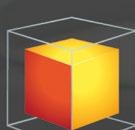
Höganäs AB, Sweden, has received approval from the SBTi (Science Based Targets initiative) for the company’s near and long-term science-based emissions reduction targets and has verified its net-zero science-based targets. The initiative intends to promote best practice in science-based target setting and will validate Höganäs’ progress towards its carbon neutral targets on a yearly basis.
Höganäs AB has been validated by SBTi for its commitment to reduce greenhouse gas emissions (GHG) from its own operations (Scope 1 & 2) by 51% from a 2018 base year, and to reduce absolute scope 3 GHG emissions from purchased goods and services, upstream transportation and distribution, and business travel by 30% within the same timeframe.
With this, Höganäs has reportedly become the first company in the metal powder industry to have its climate impact reduction targets validated by the Science Based Targets initiative (SBTi). Höganäs can thereby ensure its climate action is in line with the latest science.
“Höganäs’ ambition is to be the preferred supplier of sustainable metal powder and we want to take the lead and transform the industry towards a more sustainable future. This validation is an important milestone towards reaching our sustainability goals and we are determined to do our part in this transition, and to support our customers in fulfilling their respective ambitions to become more sustainable,” stated Magnus Eriksson, interim CEO, Höganäs AB.
To achieve the targets, Höganäs is focusing on transitioning to the use of fossil-free energy in production and transport, replacing fossil process coals, and rethinking its material supplies. The ongoing initiatives include a plan to complete the preparation work for the transition to 100% fossil-free electricity from 2023 and to achieve a 40% reduction of emissions from fossil fuels by 2026, which can be accomplished through electrification and the use of biofuels.

“In light of the latest climate science from the IPCC, this validation is an important recognition showing that we are serious about making our contribution to limiting global warming to 1.5°C,” added Catharina Nordeman, Vice President Sustainability. “After our targets were submitted for validation in January 2022, we have since accelerated our ambitions even more, to reach net-zero in scope 1&2 already in 2030, and throughout the value chain by 2037. However, these ambitions were not included in the validation by SBTi, but they are nevertheless what we strive for.”
Direct emissions reductions will be prioritised, and all residual emissions will be permanently removed from the atmosphere in line with SBTi criteria before reaching netzero emissions.
www.hoganas.com


LARGE SCALE SINTERING OF PM PARTS
DEBINDING - SINTERINGVACUUM CARBURIZING & QUENCHING IN A SINGLE MACHINE
Umicore launches responsible sourcing frameworks for nickel and lithium
Umicore, Brussels, Belgium, has introduced dedicated Sustainable Procurement Frameworks for Nickel and Lithium. This move follows on from the company’s Sustainable Procurement Framework for Cobalt.
Set up in 2012, along the principles of the Organisation for Economic Co-operation and Development (OECD) Due Diligence Guidance for Responsible Business Conduct and Responsible Mineral Supply Chains, the Cobalt Framework aimed to prevent and mitigate risk in the cobalt supply chain, with a strong focus on human rights violations, child labour and business ethics, linked to the sourcing of cobalt from, among others, the Democratic Republic of Congo (DRC).
Since then, the company has expanded its Cobalt Framework with a broader ESG focus to include, but not limited to, CO 2 emissions, waste, water, health and safety, and community engagement. We report annually on our due diligence practices for sourcing cobalt, through a publicly available compliance report.
Achieving the application of these processes to nickel and lithium will be an important proof-point in its 2030 RISE strategy, of which a key pillar is an ambition to be a ‘Sustainability Champion’ in its own operations and value chain, as well as supporting our suppliers and customers on their sustainability journey.
Identifying and mitigating risks in extracting lithium and nickel
Currently, much of the world’s lithium comes from the salt flats of South America, where it is extracted by pumping and evaporating mineral-rich brine. Australia is also one of several countries where lithium is sourced, and here it is ‘hard rock’ extracted from mines containing the mineral spodumene. Nickel is found in many parts of the world, with Indonesia being a fast-growing exporter. Nickel concentrates are often found in remote forested areas of the country.
For both metals – and as with cobalt – there are risks associated with their extraction that the company needs to identify and manage through its responsible sourcing frameworks. For example, for lithium extracted from brine, it may pay particular attention to water use and how this may impact local communities. In the case of lithium from spodumene, one issue of concern, among others, is the CO 2 footprint. For nickel mining in Indonesia, Umicore concentrates on the risks associated with deforestation and biodiversity.
By working with suppliers and other stakeholders in all these areas, the company aims to mitigate risk as much as possible and work towards truly responsible value chains.
The process
“The first step is to establish supply chain visibility and traceability, to track the materials back to the mines of origin,” explained Barbara Cooreman, Program Lead for Responsible Sourcing. “We then work on risk assessment, building a detailed picture of risks, in the countries of origin and transit, risks related to the specific material itself and risks related to the supplier in question. When risks have been identified, we develop plans together with the supplier to prevent and mitigate them. The final stage is reporting on our actions taken and ensuring that our processes are third-party certified.”
The new frameworks became applicable to Umicore’s nickel and lithium suppliers on April 1, 2023. Suppliers have to complete selfassessment questionnaires, giving a detailed overview of, among other things, their business activities, ESG policies and due diligence. As issues arise, Umicore will engage with suppliers and work together on remediation measures. These could include setting up policies and processes or organising training and capacity building.
Ultimately, suppliers will be asked to work with third parties to achieve official certification against recognised responsible sourcing and ESG standards by 2025. Throughout its due-diligence efforts, the company aims to maintain good relationships with suppliers and work together on its journey.
Cooreman concluded, “As we showed with our work on cobalt, we aim to develop a best-in-class approach that goes beyond legal compliance and aims at real impact. We work closely with people on the ground in a mutually beneficial relationship based on strong ethical business standards, trust and shared commitments.”
Read the Sustainable Procurement Framework for Nickel:
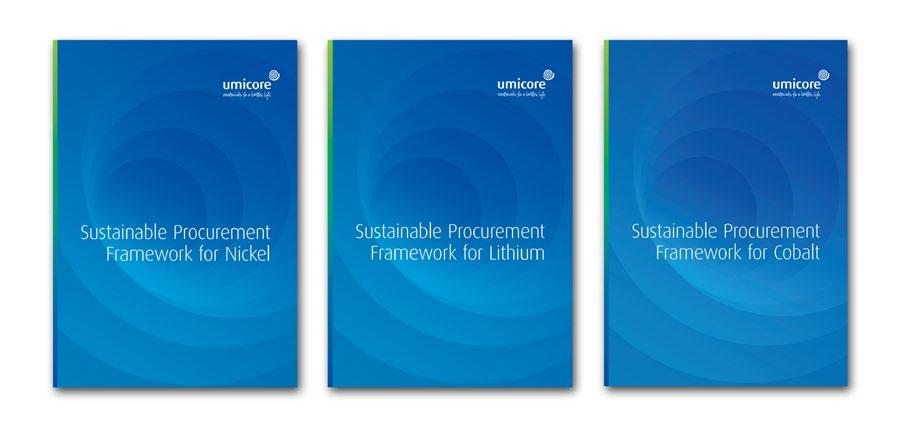
www.umicore.com/storage/ group/nickel-frameworkvmarch2023.pdf
www.umicore.com
ADDING VALUE TO ADDITIVE MANUFACTURING

Bodycote provides a complete service solution for metal parts built by the additive manufacturing process, including stress relief to minimise distortion and residual stress, EDM to prepare the component for hot isostatic pressing (HIP), heat treatment or HIP to remove microporosity, and associated quality assurance testing.
Reduction in rejection rates and inspection costs
Fatigue properties on par with wrought material
Significant improvement in fatigue strength, fracture toughness, and tensile ductility
100% reduction in porosity possible
Improved machined surfaces and consistency in properties
Improved microstructure
the partner of choice for additive manufacturing
heat treatment | metal joining | hot isostatic pressing | surface technology
www.bodycote.com
Powder Metallurgy in Sweden covers a century of industry development
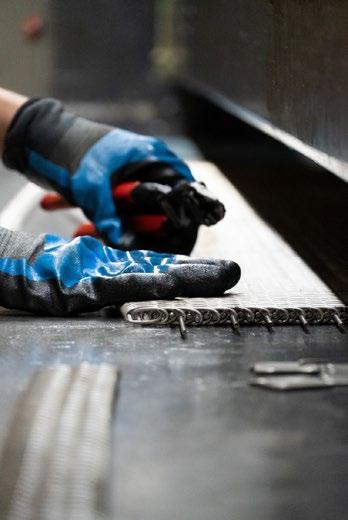
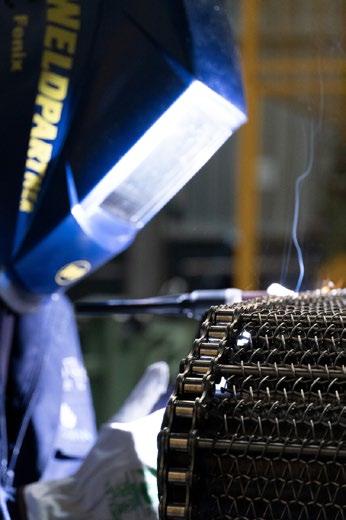
A book entitled Powder Metallurgy in Sweden – 100 Years of Development has been published by Jernkontoret, the Swedish iron & steel producers’ association headquartered in Stockholm. Spanning 432 pages, with contributions from over thirty authors, the book is intended to provide an overview of Powder Metallurgy in Sweden and its technical development over the last century.
The book’s contents include:
• Introduction to Powder Metallurgy in Sweden
• Powder Metallurgy activities in Sweden, an international perspective
• Cemented Carbides (Hard Metals)
• Structural Components, Iron and Steel Powder and Uranium Dioxide Pellets
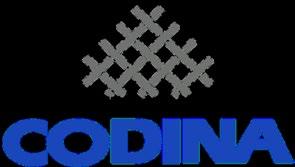
• High Alloy PM Products made by Gas Atomisation and Hot Consolidation
• Diamond Tools
• Metal Additive Manufacturing

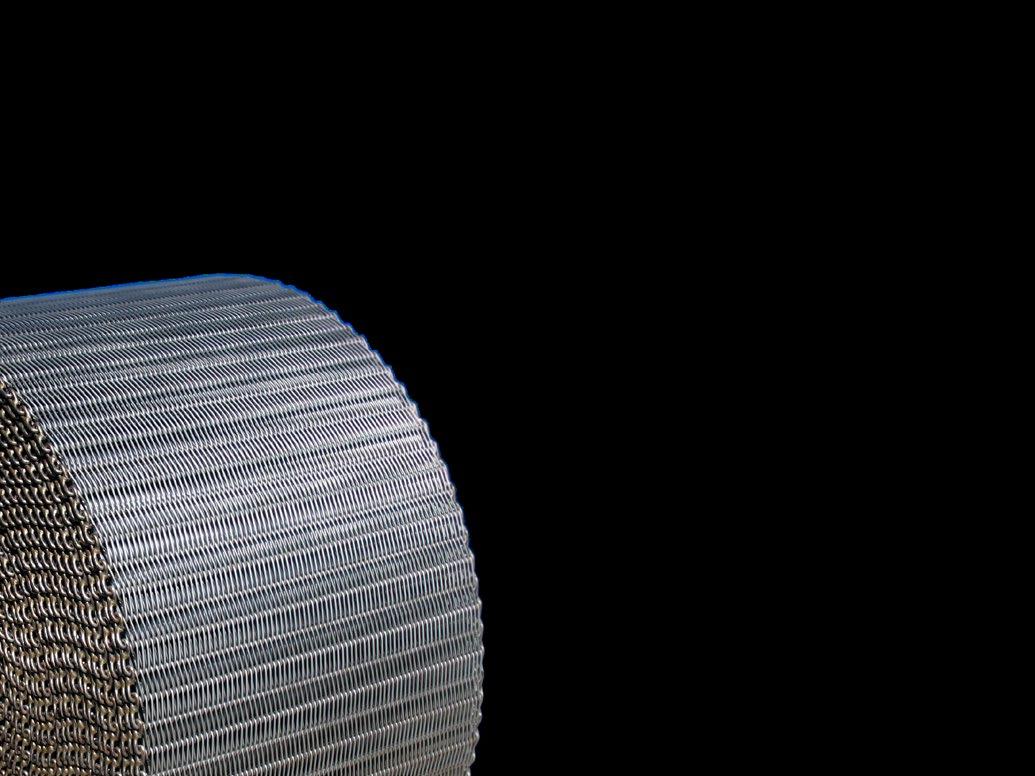
• Research and Development
• Standardisation
Powder Metallurgy in Sweden – 100 Years of Development has just been published (Courtesy Jan Tengzelius/ Jernkontoret)
The project was originally chaired by powder metallurgist Olle Grinder. Following his passing in 2018, the book has seen completion under Jan Tengzelius, former Technological Director of Future Technologies at Höganäs AB.
Powder Metallurgy in Sweden – 100 years of development is available for purchase here: www.jernkontoret.se
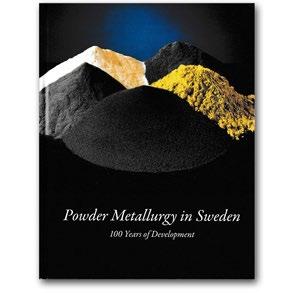
YOUR J u n e 1 8 - 2 1 C a e s a r s P a l a c e L a s V e g a s
MESH BELT GLOBAL SUPPLIER
Established in Barcelona,

3D Lab granted patent for ATO ultrasonic
metal atomisation technology
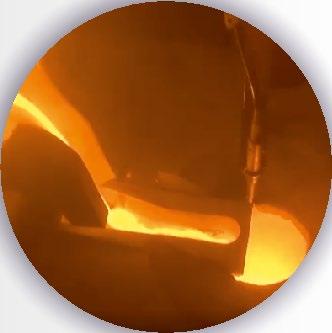


3D Lab sp. z.o.o., based in Warsaw, Poland, has announced that its ATO metal atomisation method has been granted a patent. The company’s ATO atomiser creates spherical metal powders using an ultrasonic vibration technique, rather than the more-common gas or water atomisation methods.
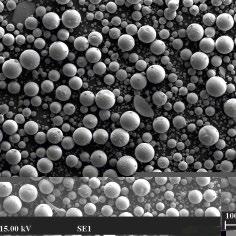

The ATO device includes infusible sonotrode with a melting tip, material melting system, input material delivery system, process chamber and piezoelectric transducer. It is designed to ensure the input material is heated to its melting point, atomised, and converted into spherical powder particles. Moreover, it includes
a mechanism for controlling the atomisation process and for collecting the spherical powder particles.
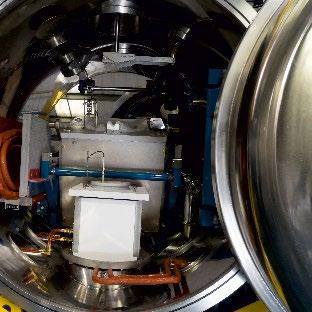
“We want to take a moment to recognise and thank everyone involved in this achievement. It is through your dedication, hard work, and perseverance that we have been able to bring this innovation to life,” the company stated.
Due to the development of ATO, 3D Lab has been able to expand its activities in the area of novel metal powder technologies, and the patent will allow the company to successfully defend the invention in regional markets.
www.metalatomizer.com
Tekna and Uniformity extend partnership for aluminium powder supply




Uniformity Labs, Fremont, California, USA, and Tekna Holding ASA, Sherbrooke, Quebec, Canada, have extended their partnership, where Tekna will supply AlSi10Mg, an aluminium-based alloy, which allows Uniformity to produce its advanced ultra-dense AlSi10Mg powder for Laser Beam Powder Bed Fusion (PBFLB) Additive Manufacturing.
Uniformity’s technology is said to improve powder production efficiency, allowing over 95% of the powder to be used compared to competitors’ 50-65%, thus driving down cost and improving capacity, efficiency, and sustainability in the manufacturing of industrial parts at scale.
Tekna’s powder atomisation technology uses hydro-energy, and all process gases are recycled in a closed loop, achieving greener production. Together, the companies aim to help industrial customers produce greener, more sustainable parts.

“Our partnership with Tekna highlights how advanced technology can further increase sustainability to the benefit of a wide range of industries,” stated Adam Hopkins, founder and CEO of Uniformity Labs. “The complementary nature of our businesses produces an economic benefit for our customers who gain through higher printer throughput and repeatability, and a supply chain security benefit from the use of materials produced entirely in North America.”
Luc Dionne, CEO of Tekna, added, “We are extremely proud that Uniformity Labs has selected us to supply aluminium powders in addition to titanium powders. This is a testament to Tekna’s supply reliability and reaffirms that our product quality matches with a wide range of industry requirements.”




www.tekna.com

Munson Machinery introduces Vee Cone Blender for uniform powder blends

Industrial equipment supplier
Munson Machinery, Utica, New York, USA has introduced a 28 litre Vee Cone Blender, the VB-1-S316, which is said to achieve uniform blends of dry bulk solids in a
typical 15-30 minutes, with little or no product degradation. The blender is constructed from 316 stainless steel and is available finished to industrial, food, dairy and pharmaceutical standards.
Suitable for laboratory testing, pilot plants or low-volume blending of dry powders and granular materials, the unit reputedly delivers equal homogeneity at fill volumes from 100% to 25% of rated capacity.
Smooth internal surfaces free of baffles, shafts and bearings, are said to allow complete discharge through a 152 mm handwheel-operated butterfly valve, eliminating material waste. Access to internal surfaces through the discharge valve and twin doors
General Motors names Tenneco a 2022 Supplier of the Year
Auto parts maker Tenneco Inc., headquartered in Lake Forest, Illinois, USA, has been recognised by General Motors as a 2022 Supplier of the Year. GM recently celebrated honourees at its 31 st annual Supplier of the Year event in San Antonio, Texas.
GM’s Supplier of the Year award recognises global suppliers that distinguish themselves by exceeding GM’s requirements, in turn providing customers with innovative technologies and among the highest quality
in the automotive industry. This is the sixth consecutive time that Tenneco has received the Supplier of the Year award and fourth consecutive win for Tenneco’s Powertrain business group.
Tenneco Powertrain’s 2022 Supplier of the Year Award is for outstanding performance in the category of Connecting Rods and Pistons, which includes Tenneco’s pistons, rings and bearings components. Tenneco Powertrain is a leader in design, coatings and advanced materials along with proprietary processes that contribute to lighter, more compact engines with higher performance, greater efficiency and durability to reduce emissions and improve fuel economy. “We are grateful for this honour,” stated Davide Girelli, Executive Vice President of Tenneco and President of Powertrain. “I thank GM for its business and the trust it continues to place in our team. Receiving this important award
at the ends of the inclined cylinders permits thorough sanitising in minutes, preventing cross contamination.
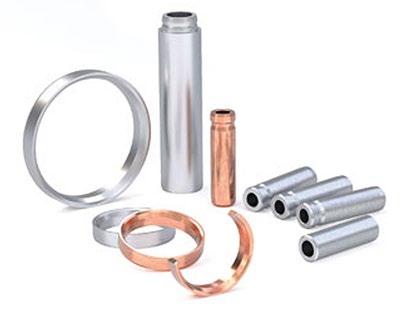
The Vee Cone chamber rotates at up to 30 RPM, driven by a 0.75 kW wash-down motor, imparting a tumbling action that is gentler and less energy consuming than ribbon blenders and other agitated machines in which blades, paddles or plows are forced through stationary material.
A safety-interlocked polycarbonate housing is intended to protect operators from the rotating vessel. An optional intensifier bar can break up soft agglomerates, and be equipped with spray ports to distribute liquid additions throughout the batch.
Munson Machinery also offers Vee Cone Blenders in capacities from 8-5,663 litres, as well as a variety of others mixers, blenders and size reduction machinery.
www.munsonmachinery.com
again for 2022 is due, in large part, to a history of successful collaboration over many years. I am proud of how our teams work hard to maintain outstanding performance and deliver innovative, high-value solutions for GM.”
“We are thrilled to recognise these outstanding suppliers after yet another challenging year in the automotive industry,” added Jeff Morrison, GM vice president of Global Purchasing and Supply Chain. “They overcame countless obstacles and exemplified what it means to be resilient, resourceful and determined. Beyond that, these suppliers demonstrated their commitment to sustainable innovation and to driving advanced solutions in collaboration with the GM team.”
Each year, GM’s Supplier of the Year recipients are selected by a global, cross-functional GM team for their performance in criteria such as Product Purchasing, Global Purchasing and Manufacturing Services, Customer Care and Aftersales and Logistics.
www.gm.com
www.tenneco.com





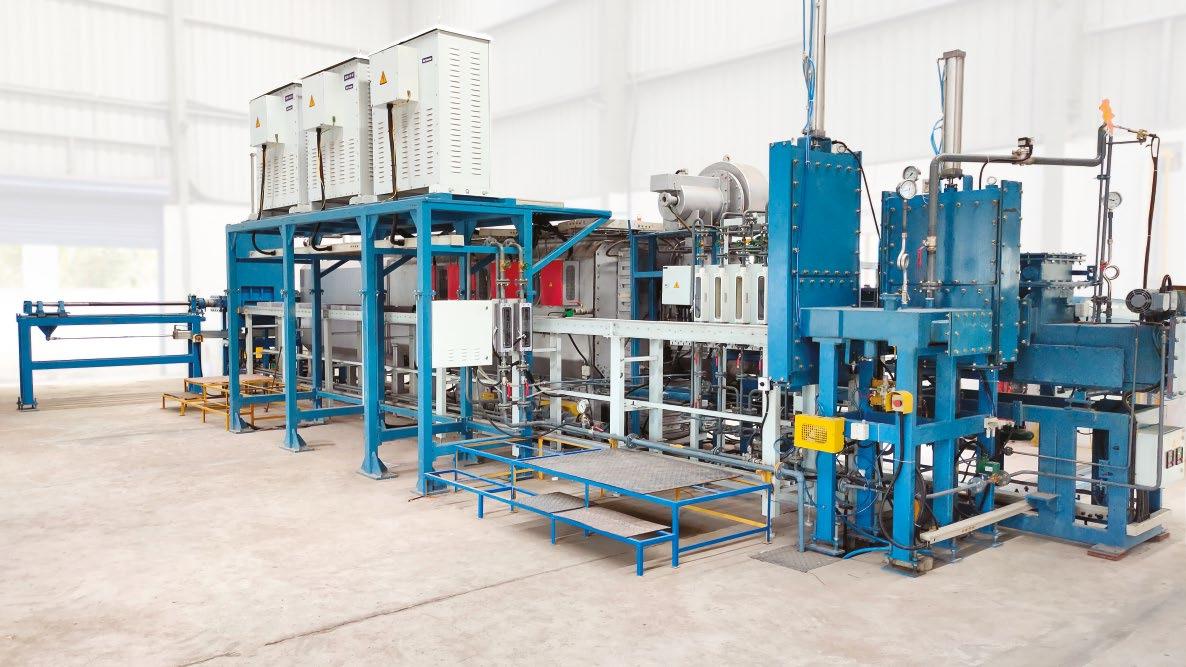
Mongolia’s Steppe Metal Powder partners with South Korean university for powder development

Steppe Metal Powder, Ulaanbaatar, Mongolia, has signed a Memorandum of Understanding with the Mongolian University of Science and Technology (MUST) and Kongju National University, Gongju, South Korea, which prioritises joint research, development and production of advanced powder materials and parts manufactured from them
Professor Soon-Jik Hong, Director of CAMP2, stated that he is looking forward to exchanges and supply chains between the Republic of Korea and Mongolia in the field of Powder Metallurgy, particularly in terms of advanced technology, equipment, human resources, and metals.
Tsagaan Puntsag emphasised that Mongolian and Korean universities, which represent the academic cornerstones of the two countries, are now starting to cooperate with the private sector, creating new opportunities in progressing the level of industrialisation in Mongolia.
“The research and analysis effort of the two universities will focus on the development of the quality of the products processed by the metal powder plant established in Mongolia, which is intended to bring the university-industry cooperation to a new level,” said D Tsolmonbaatar, Director of the Research and Technology Department of MUST.
Prime Minister of Mongolia, OyunErdene Luvsannamsrai, visited South Korea in February and held negotiations to enhance cooperation with economic content and increase trade and investment.
B Askhar, Executive Director of Steppe Metal Powder LLC, stated, “In this sense, I feel that the South Korean businesses and institutions are favourable and interested in developing the cooperation. I am happy to cooperate with the top materials science university in South Korea when the company is focusing on increasing its competitiveness in the overseas market.”
The day after the signing of the MoU, Dr Sung-Soo Won, president of Kongju National University, and Dean of the School of Engineering, Dr Keum-chul Yang, received and met the representatives of MUST as well as business delegates from Mongolia, expressing their active support for cooperation between the parties.
Steppe Metal Powder has signed a Memorandum of Understanding with the Mongolian University of Science and Technology and Kongju National University (Courtesy Steppe Metal Powder)
Elementum 3D to relocate headquarters
Elementum 3D, has announced the relocation of its headquarters to a recently constructed building in Thornton, Colorado, USA. The move is scheduled to be completed by the fourth quarter of 2023.
“Elementum 3D has had a presence in Erie, Colorado since 2014, but we are very excited to have a space purposefully built for us,” stated Dr Jacob Nuechterlein, president and founder, Elementum 3D, Inc. “We are actively involving our colleagues in the transition process to develop
space that streamlines workflow, builds relationships, and gives us the room we need to grow.”
The consolidation of the two locations based in Erie, Colorado, under one roof in Thornton is expected to expand opportunities for the company’s teams to collaborate with each other and continue to provide an environment for increased operating efficiencies. The new corporate headquarters includes both upgraded office amenities and larger workspaces.
The MoU ceremony was attended by former Minister of the Ministry of Education and Culture, Chairman of the Board of Steppe Metal Powder LLC, Tsagaan Puntsag; Dr Soon-Jik Hong, Director of CAMP2; D Tsolmonbaatar, Director of the Research and Technology Department of MUST; Dr Moon Sohn, Manager of the ‘Cultural Heritage Preservation and Protection Project,’ and B Askhar, Executive Director of Steppe Metal Powder LLC. www.smp.mn | www.must.edu.mn
www.english.kongju.ac.kr
“Elementum 3D is growing. Part of our growth strategy is to expand our capability to produce the highest quality products and services for our customers. Moving into this new facility, which has been designed to meet our unique needs, is a major step forward for us and our company,” added Thom Stalcup, Chief Operations Officer.
Elementum 3D specialises in the research and development of Additive Manufacturing powders for advanced metals, composites, and ceramics.
www.elementum3d.com
Paul Crawford recognised in Marquis Who’s Who
Paul Crawford, owner of Sintered Metal Consulting, LLC, Seville, Ohio, USA, has been included in the Marquis Who’s Who , a series of publications said to list the most accomplished individuals and innovators in the US from every significant field of endeavour, including politics, business, medicine, law, education, art, religion and entertainment.
As in all Marquis Who’s Who biographical volumes, individuals profiled are reported to be selected on the basis of current reference value. Factors such as position, noteworthy accomplishments, visibility, and prominence in a field are all taken into account during the selection process. As a seasoned professional with years of experience in Powder Metallurgy, gear design, geometric dimensioning,

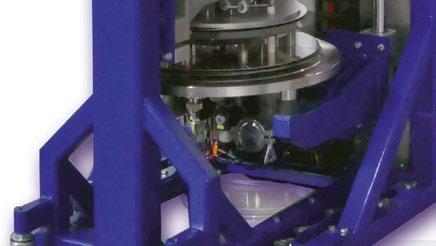

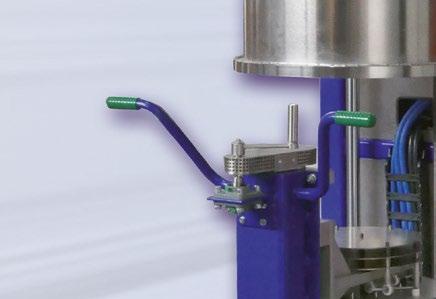

failure mode and effects analysis, and more, Crawford has designed and developed drives from fractional horsepower to 900 horsepower, with product life ranging from 150 hours to 10,000 hours. Many of these drives contained sintered Powder Metallurgy gears, several others contained wrought steel, bronze, and plastic gears.


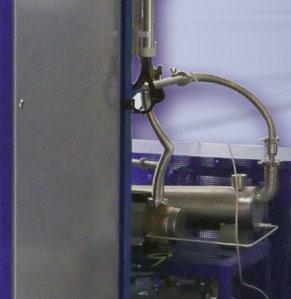
Over the years, he worked for a wide range of companies in the industry, including PT Tech LLC, and MTD Products, where he held positions such as engineering manager, chief engineer, and project engineer.
Crawford has also worked with industry associations such as AGMA (American Gear Manufacturers Association), CPMT (Center for Powder Metal Technology), and APMI International, and is a Certi -



















fied PMT. As a member of AGMA, he has served on the Powder Metallurgy Committee for almost twenty years and is the current chair. He also has extensive experience with screw machines, die casting, cold heading and injection moulding.



Crawford holds nine patents, including a patent for a multi-function shift mechanism, and has earned several engineering awards.



www.sinteredmetalconsulting.com




www.marquiswhoswho.com


US Department of Energy intends to fund development of domestic near net shape components
LE-243i.ps
T:\MISC\ADS\LE-243\LE-243i.cdr

The US Department of Energy’s (DOE) Office of Energy Efficiency and Renewable Energy (EERE) has announced its intent to issue a funding opportunity announcement (FOA) that will boost the domestic production of large metallic near net shape (NNS) components, a critical step on the path toward deploying
Wednesday, April 26, 2023 1:29:31 PM

Color profile: Disabled
America’s clean power-generating technology.
Near net shape manufacturing techniques include advanced production methods such as metal Additive Manufacturing, Hot Isostatic Pressing and Powder Metallurgy, as well as die, sand and investment casting.
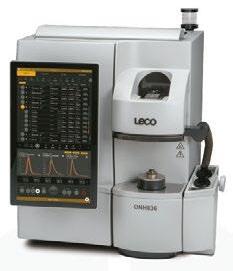
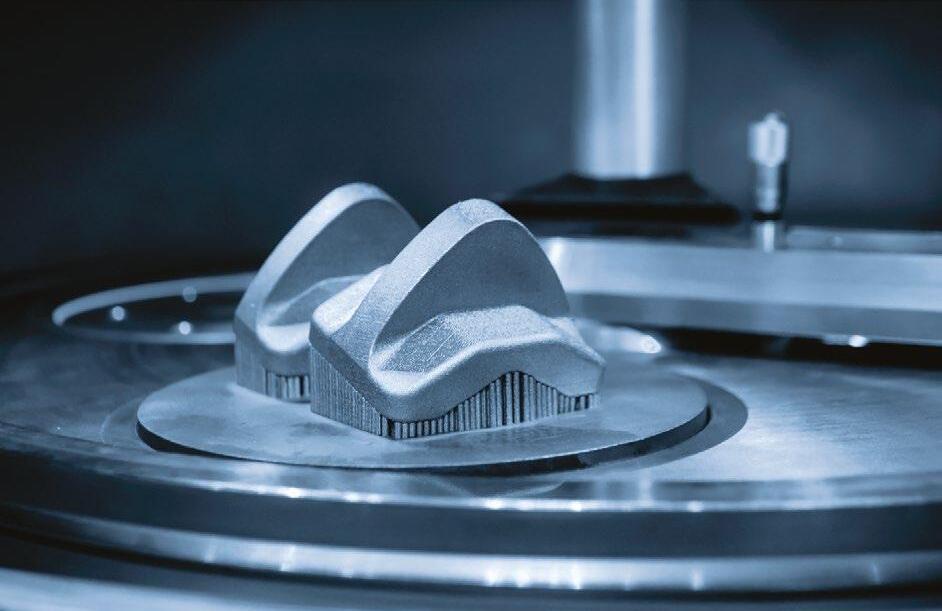
At present, approximately 95% of US carbon-free power generation relies on complex systems consisting of large (over ten tons) near net shape metallic components. NNS manufacturing reduces both the amount of raw materials and energy used to create these components, by creating components that are close to their final – ‘net’ – shape, and the amount of post-processing operations that follow the manufacturing process.
However, the US domestic manufacturing base currently lacks the capacity and technical capabilities to competitively produce these largescale components. This inability directly results in a continued reliance on foreign supply chains to produce critical systems needed to achieve the government’s goal of obtaining 100% clean electricity by 2035 and net-zero emissions by 2050.
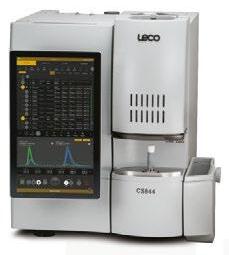
The FOA, led by EERE’s Advanced Materials and Manufacturing Technologies Office (AMMTO), will impact a broad cross-section of the US manufacturing sector, including clean energy generation, transportation, industrial machinery, heavy equipment, and domestic infrastructure.
In February 2022, the DOE responded to US President’s Executive Order 14017 by publishing ‘America’s Strategy to Secure the Supply Chain for a Robust Clean Energy Transition”, which identified the urgent need for domestic production of NNS components. This FOA will also address the advanced manufacturing technology challenges identified in the 2022 ‘National Strategy for Advanced Manufacturing.’ Identifying pathways that accelerate the timeline of technology development to commercialisation will be central to these projects.
The funding opportunity is expected to provide approximately $30 million in federal funding. EERE envisions awarding multiple financial assistance awards in the form of cooperative agreements. The estimated period of performance for each award will be approximately two to three years.
www.energy.gov
Stage set for PM China 2023 Shanghai
Uniris Exhibition Shanghai Co., Ltd., the organiser of the 15th China International Exhibition for Powder Metallurgy, Cemented Carbides and Advanced Ceramics (PM China 2023), has announced the event is now scheduled to take place May 31 – June 2, 2023, at the Shanghai World Expo Exhibition Centre in Shanghai, China.

The event was originally scheduled to run in May 2022, but was postponed due to Shanghai’s pandemic prevention policy. The organisers then moved to a venue in Nanjing and a date in October, however, this was later cancelled due to further restrictions.
PM China showcases a range of products, services, and solutions in the fields of Powder Metallurgy, cemented carbides, advanced
ceramics, Metal Injection Moulding, metal Additive Manufacturing, and magnetic materials including materials, applications, and production equipment. This year’s event is expected to welcome over 45,000 visitors, with an exhibition of over 650 companies.
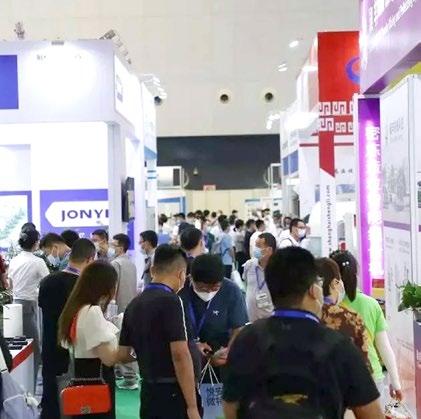
In addition to PM China 2023, the event will host a number of academic forums and technical seminars, including:
2023 China Int’l Exhibition for Advanced Ceramics (IACE China)
• 2023 China Int’l Exhibition for Magnetic Materials (MMIC China)
• 2023 China Int’l Exhibition for Additive Manufacturing (AM China)
PM China 2023 is scheduled to take place May 31 – June 2, 2023, at the Shanghai World Expo Exhibition Centre (Courtesy Uniris)
See you there!
We will be exhibiting at PM China and visitors can pick up free copies of PM Review , Metal AM and PIM International magazines. Visit Inovar Communications on booth B026! en.pmexchina.com
Our electric and diesel pumps have defined reliability for 50 years, at pressures as high as 2,760 bar (40,000 psi). You don’t need a whole new system — it’s easy to integrate an NLB pump into your existing control center. Customer support is just as reliable, with eight U.S. branches offering parts and service. Call today to learn more.

AT NLB, WE KNOW PUMP PERFORMANCE IS CRITICAL TO PRODUCTIVE ATOMIZATION.
UPGRADE TO A MORE RELIABLE PUMP WITHOUT REPLACING YOUR CURRENT SYSTEM.
Aurubis and SMS to expand US multi-metal recycling plant
Aurubis, Hamburg, Germany, and the SMS Group, Düsseldorf, are expediting the development of the recycling market for non-ferrous metals in the United States with the signing of a supply contract for a second plant module for the Aurubuis Richmond recycling plant in Georgia, USA. The modular system is intended to enable flexible operations and quick growth in the US’ dynamic recycling market.
The additional equipment purchase will increase the capacity of the metal recycling plant in Richmond, currently under construction, from an annual 90,000 tons of complex metal scrap materials to 180,000 tons per year.
“With the next expansion stage of our new site in Georgia, we are delivering on our ‘Driving Sustainable Growth’ strategy while also keeping mineral raw materials that are both strategically important and in high demand in the resource cycle,” stated Roland Harings, CEO, Aurubis.
The SMS group recycling equipment is destined for the second module of the new Aurubis plant. The core
technology, the top-blown rotary converter (TBRC), is equipment used for processing complex recycling materials so that raw materials, such as copper, nickel, tin, precious metals and platinum group metals, can be recovered in additional downstream stages. These metals are crucial raw materials for the technologies of the future, whether for the energy transition, sustainable mobility, or digitalisation.
“By bundling the SMS group’s extensive plant know-how with Aurubis’ unique expertise in processing and raw materials, we are creating an environment for the highly efficient recovery of metals,” Harings added. “This partnership allows us to take advantage of the enormous potential of the US recycling market. The backing of a strong and reliable partner like the SMS group puts us in an excellent position for realising a project of this scope professionally and on time.”
Michael Rzepczyk, a member of the SMS executive board, stated, “We are pleased that our plants are helping Aurubis assume a leading role in multi-metal recycling in the US. With the planned doubling of the production volume at the new US site, Aurubis is taking recycling to the next level in the US. Together, we are building a more sustainable future by closing value chains and maximising the recovery of valuable metals from recycling materials.”
Modularity is a special feature of the recycling technologies used at Aurubis Richmond; additional components can be added, expanding the plant to precisely meet any future requirements. As such, Aurubis is ensuring capacity can be further expanded at any time.

“The modular system means we can plan a prudent market strategy that allows us to respond flexibly to the needs in the US,” Harings explained. “So Aurubis will benefit from the constant market growth in the US.”
For about €640 million for both phases of the project, the company is building the first secondary smelter specialising in multi-metal recycling in the US. Ground breaking for Aurubis Richmond took place in mid-2022, and construction is currently running at full steam. Stage one of the plant is scheduled to go online in the first half of 2024. The TBRC from the contract signed on Friday is destined for the second stage, anticipated to start production in 2026.
The investment in Georgia is said to be instrumental to Aurubis’ Sustainability Strategy; Aurubis processes roughly 1 million tons of recycling material annually, and the Aurubis Richmond recycling plant is planned to add another 180,000 tons. The investment in Georgia will not only contribute to meeting the group’s growth targets; the new plant will also comply with the highest environmental standards in the US and create around 200 new jobs.
www.aurubis.com
www.sms-group.com

Plansee to use CO2-free hydrogen in Reutte
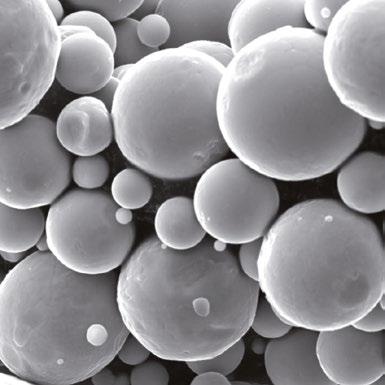

Plansee has signed an agreement with Linde Gas for the long-term supply of CO 2-free hydrogen that will initially cover half of all the hydrogen needed by Plansee and Ceratizit at the group’s production plant in Reutte, Austria.
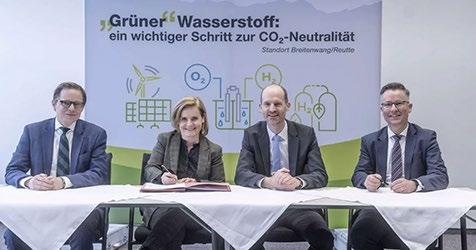
Plansee requires large quantities of hydrogen for its production lines and, under the agreement, the new plant used to generate hydrogen from water and electricity will be operated by Linde. The hydrogen electrolyser will be installed in an existing building on the Plansee premises in Breitenwang. It will have an output of four megawatts and can generate up to 800 m 3 of hydrogen per hour at a purity of 99.999%. All the electricity needed to power the electrolyser will be obtained from renewable sources (green electricity), which in turn ensures the hydrogen generated from this process is also green.
“Producing hydrogen from natural gas is currently responsible for 50% of all CO 2 emissions at our Reutte production plant. These emissions can be halved by 2025 thanks to the new hydrogen electrolyser,” stated Ulrich Lausecker, Managing Director of Plansee High Performance Materials. Plansee is aiming to establish an exclusively CO 2-free hydrogen supply for the factory by 2030.
“We are proud that this is one of the few industrial electrolyser projects in Europe and therefore a major innovation for both parties as well as the Austrian economy as a whole. Linde and Plansee are demonstrating with this project that such solutions can already be realised today through expert engagement and a professional view of the long term,” added Andreas X Müller, Head of Cluster Austria / Hungary at Linde. Other significant measures that have been adopted to reduce Plansee’s carbon footprint are reported to include electricity from 100% renewable sources for the entire production site, further increasing the rate of tungsten recycling, as well as boosting material efficiency in the factory.
www.plansee.com

www.linde.com
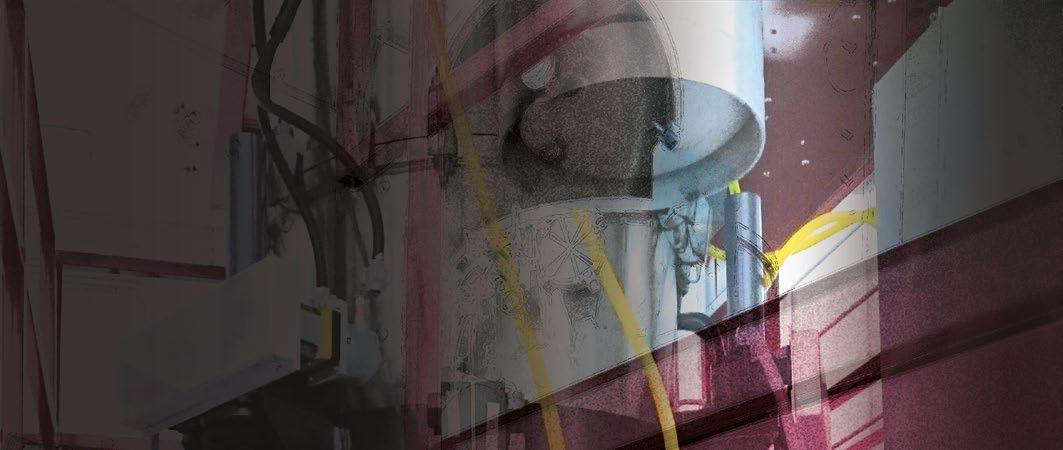
Miba submits 32 new patents and invests €44 million in R&D during 2022
Having submitted thirty-two new patent applications in 2022, Miba AG, Laakirchen, Austria, has been ranked as one of the top three Austrian companies for patent submissions. In the Upper Austria region, the technology company is the innovation leader, repeating its position from 2021.
In the past business year alone, Miba has invested €44 million in Research & Development, accounting for around a 4% share of sales. The company has also recently been awarded the Upper Austrian State Prize for Innovation.
Miba has had a corporate mission focused on sustainability and climate protection since 2013. The company’s products are designed to make the generation, transmission, storage and use of energy more efficient and thus more sustainable and climatefriendly.
“Every day, we work on making a contribution to a cleaner planet and thus to an even more livable world with our products,” stated F Peter Mitterbauer, CEO. www.miba.com
WHERE IDEAS TAKE SHAPE.
Make
We know that additive manufacturing offers undreamed of potential. In addition to the printer, however you also need the upstream and downstream processes plus the experts, who have mastered the technology. You’ll only find all this at the AM highlight Formnext in November.
For knowledge transfer, industry news and connecting with the AM community all year round visit formnext.com Be

Höganäs: Sustainable
Höganäs’ fourth reinvention: Creating sustainable metal powders for automotive electrification

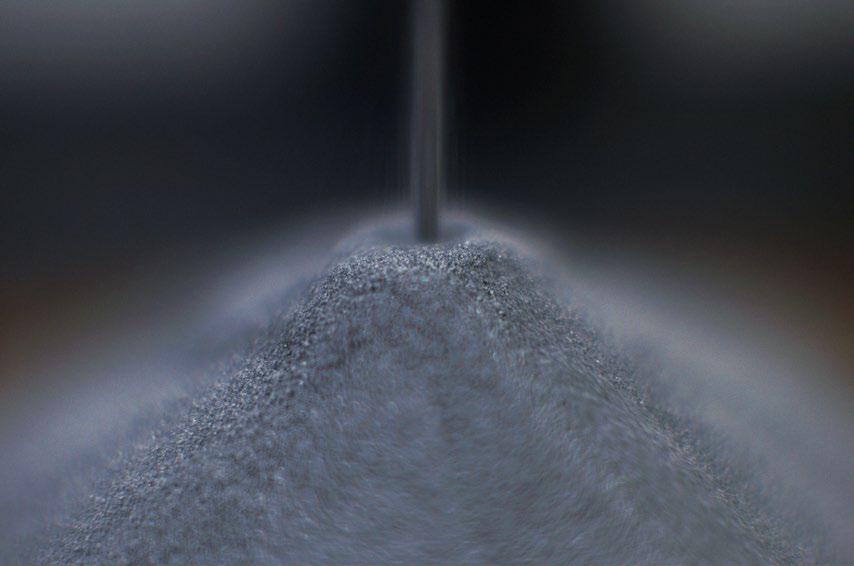
The automotive industry is replacing its core technology – the Internal Combustion Engine. This has meant cost-efficiency programmes across the industry and strict priorities to finance the transformation to an electrified future. What does this mean for the global automotive supply chain and, within it, the Powder Metallurgy industry? As the world’s largest metal powder producer, Sweden’s Höganäs AB has adopted a new approach to product development which it believes will support the automotive industry’s future demands. Lars Österlind reports.
Your next car has carbon dioxidefree propulsion, but not only that. It is a net-zero vehicle, produced in a sustainable way with Life Cycle Assessment (LCA) certified components. To meet this vision, which is not that far-fetched, the world’s largest metal powder producer, Höganäs AB, has taken the bold decision to reinvent its business by integrating a climate roadmap into its business plan and product portfolio.
Höganäs has a long history of reinventing itself as a company. As early as the end of the 18 th century, this Swedish company began with coal mining, shifted its focus to ceramic products and, by the 20 th century, had switched to metal powder production. A hundred years later, the company has started on a new journey, with a new focus. To stay relevant in automotive and remain an integral player in the electrification of the industry for years to come, the company is becoming a sustainable business with a target of net-zero emissions by 2037 throughout the whole value chain.
A paradigm shift for the automotive industry
The automotive industry is in the midst of a paradigm shift. The Internal Combustion Engine (ICE)
combined with a manual or automatic transmission – the core technology of a standard vehicle – is being replaced with electric motors, power electronics and new transmissions. This transforma -

The ‘crunch period’ 2020 – 2030

tion is described by Höganäs as the ‘crunch period’ (Fig. 2).


Many factors come into play when speeding up the pace of electrification. Very few of the world’s car manufacturers have a budget large enough to both continue ICE development and to advance new electrified technology platforms. When it comes to time to market, whilst at the same time establishing position as leaders in Battery-Electric Vehicles
(BEVs), car manufacturers need to prioritise even harder. Declining volumes put more pressure on the profitability of existing business, so, instead of continuing to work on a technology that everybody knows will be reduced or eliminated, many car brands have made a crucial change and moved their entire development department operations to focus on electrified vehicles.
A good example of this is South Korea’s Hyundai, which has shifted most of its development resources to electrification. The shortage of components after the COVID-19 pandemic and the recession due to the war in Ukraine have further accelerated the electrification of the industry.
This shift opens up the potential for the introduction of new materials – and new connections. “The players in the market are looking for solutions that give the right performance, that have potential for improvements, and that are sustainable,” said Andreas Jähnke, President Electro & Mechanical Technologies at Höganäs AB (Fig. 3).
“There have been successful developments through the supply chain, but there are also long lead times between us and the car manufacturers when it comes to new developments. There is, of course, close contact when it comes to quality problems, for example, but we need to build on these networks at a much greater pace,” he stated.
“Declining volumes put more pressure on the profitability of existing business so, instead of continuing to work on a technology that everybody knows will be reduced, many car brands have made a crucial change and moved their entire development department operations to focus on electrified vehicles.”
The automotive industry is facing new challenges which materials expertise can resolve. “Höganäs is a materials expert and, during disruptive movements like this, there is great value in being an expert,” Jähnke commented.

The biggest challenge
An automotive e-drive solution requires far fewer components than an ICE powertrain. Today, many of these components in an ICE-based car are produced from metal powder. It is easy to see that the electrification of the automotive industry is the biggest challenge – and also the biggest opportunity – for a company such as Höganäs.
Historically, it has typically taken at least six years to develop a new material, from idea to finished product. From the launch of a new material to when it gains a foothold in the market to it becoming a standard industry material, there is a large time lapse. Assuming material development takes six years and adding the acceptance period plus a concept evaluation period for seriesdesigned vehicles, which also takes about six years, we have a fifteenyear period. Is this also a reasonable timeline when it comes to the development of materials for electric cars?
Understanding the EV timeline
How long will it take for the industry to fully convert to battery electric vehicles? Many attempts to electrify the automotive industry have been made ever since the birth of the industry in the late 19 th century. But it was only when Tesla launched the Model S in 2012 that the current transformation accelerated. About ten years later, the market penetration of battery electric vehicles is around 14% (the figures vary between the continents of the world). The launch of the Model S was preceded by intensive development
of concept cars and prototypes over several years. So, we end up at a similar period for traditional material development. But is the same strategy good enough when building the components of the future? Does the model work when unforeseen
events affect the automotive industry and produce unforeseen consequences?
At Höganäs, a more dynamic operating model has been developed to cope with the current disrupted market situation. Many changes, of

“The players in the market are looking for solutions that give the right performance, that have potential for improvements, and that are sustainable.”Fig. 3 Andreas Jähnke, President Electro & Mechanical Technologies at Höganäs AB (Courtesy Höganäs AB)
which many have been difficult to foresee, have made the company’s management aware of the need to adopt a new approach when developing products and calculating production volumes. “We have analysed the speed of the current change and stated that a traditional five- to seven year-strategy will not work,” stated Jähnke.
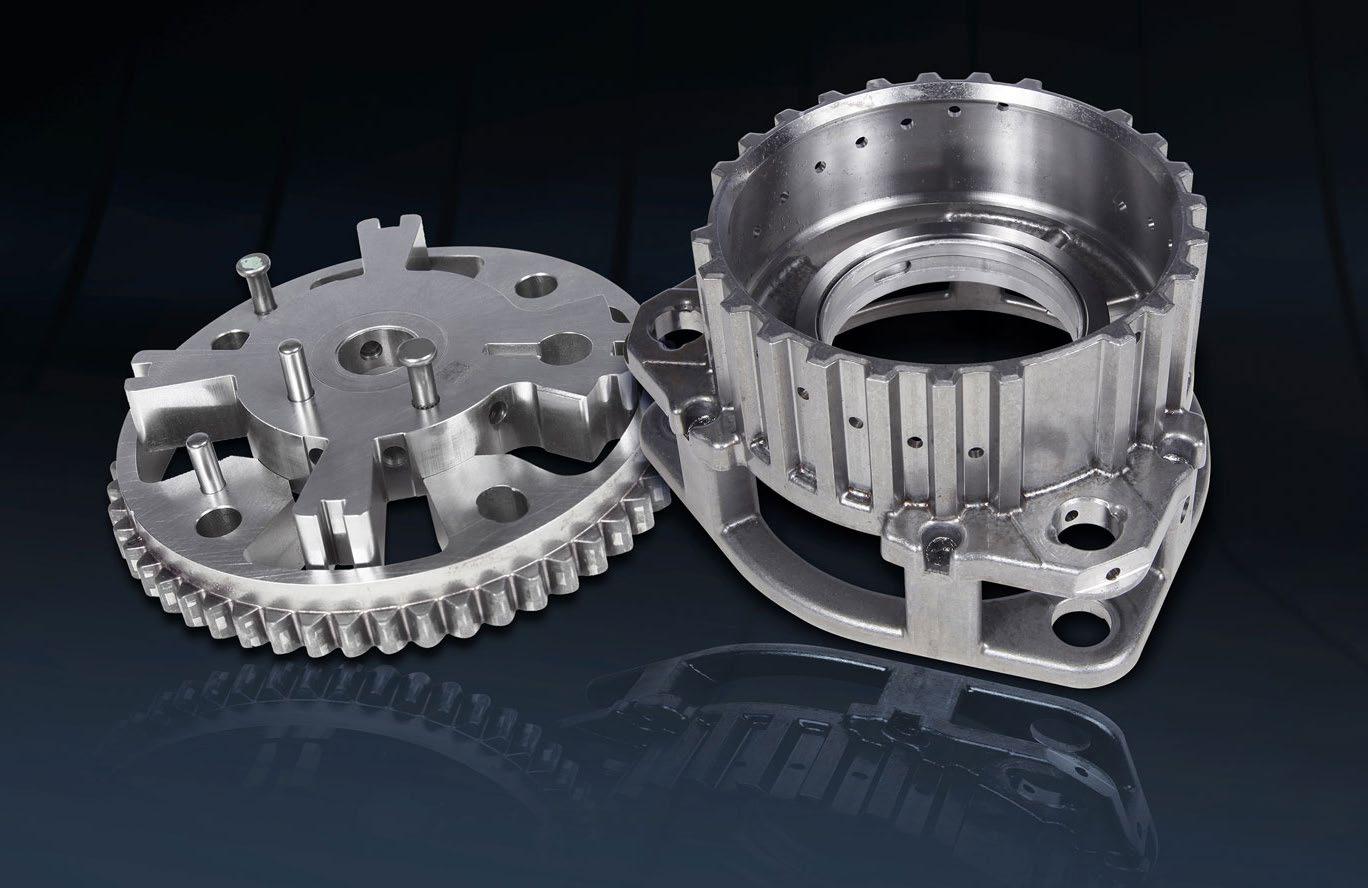
“What are the needs that are being developed today and how quickly can we rewind them into material development and start developing those materials now so that they are directly linked to the needs we see? That’s what we’re trying to do,” he said.
The long-term strategy has been moved forward further into the
future, to 2035, whilst daily business is managed here and now, backed up by a much higher frequency of updates where data from a large number of parameters are considered and evaluated. The parameters answer questions such as: How fast is the charging infrastructure network being expanded in each part of the world? What does the battery price trend look like month by month? What do the production and sales statistics look like? What do the bans on combustion engines look like per country or region?
Sustainable metal powder
“Many of the car manufacturers say that between 2040 and 2050, they must be carbon neutral,” stated Jähnke. “Then we need to have a sustainable product ready well before that. Counting backwards, including the time it took to reach a 14% market share for BEVs, development time for a new platform,
“Counting backwards, including the time it took to reach a 14% market share for BEVs, development time for a new platform, and our material development time, we are on track as we have already started the development work of the products of tomorrow.”Fig. 4 Astaloy CrS, the company’s first sustainable pre-alloyed metal powder, was launched in 2022. Astaloy CrS is circular, produced with 100% fossil-free electricity, made from recycled raw material, and is recyclable with no loss of properties (Courtesy Höganäs AB)
and our material development time, we are on track as we have already started the development work of the products of tomorrow,” he stated.
One early example is Astaloy CrS, the company’s first sustainable pre-alloyed metal powder, which was launched in 2022 (Fig. 4). Astaloy CrS is circular, produced with 100% fossil-free electricity and made from recycled raw material. This lean Cr alloy is Cu-free and an alternative to Fe-Cu-C material, which makes it possible to recycle without downgrading.
LCAs for products and customers’ products
Another product-oriented result from the company’s sustainability agenda is its LCA work, where the goal is to provide LCAs on all Höganäs’ products, enabling customers to choose more sustainable alternatives based on data. Here, the entire product portfolio is reviewed systematically. The assessment team looks at energy types, materials that could be replaced, and which measures produce the most impact. The LCA can also include the production steps from customers downstream.
Earlier this year, the first LCA project in partnership with a customer was completed. It was made together with NBTM, one of the largest structural Powder Metallurgy parts manufacturers in China. The projects where Höganäs works together with its customers to create LCAs allow the company to connect the sustainability agenda even closer to the core strategy.
“We are happy to see that an increasing number of customers are already reaching out to us, expressing their interest to work together on climate footprint and improved circularity for our products and processes,” stated Catharina Nordeman, Vice President Group Sustainability at Höganäs AB (Fig. 5).
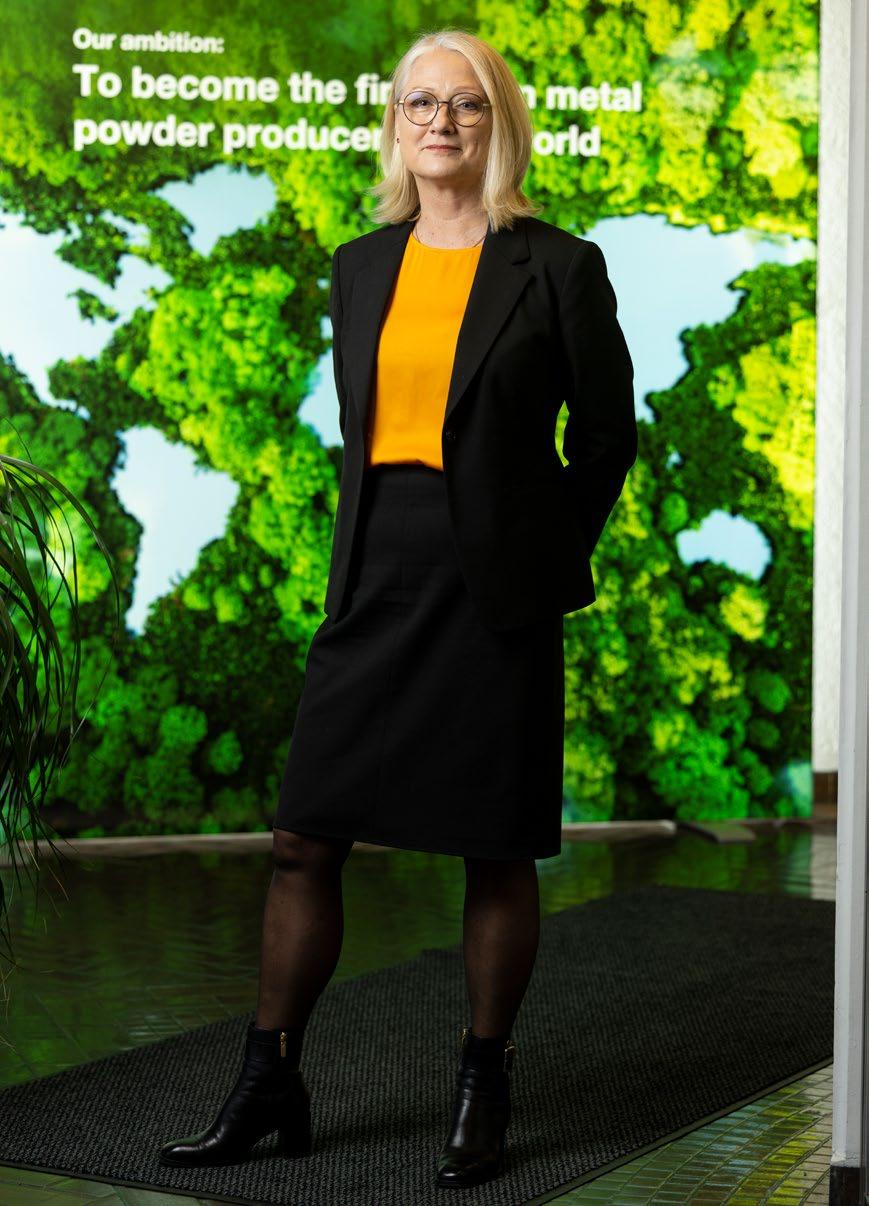
The development of the LCA methodology originates from the Swedish Life Cycle Centre, of which Höganäs is a member. “We see that

life cycle analyses are becoming very important to work with as a tool,” Nordeman stated. “This way, we can show the environmental performance and climate footprint of the products. It is the best tool
we have now to be able to show, in black and white, whether one product is better than the other,” she explained.
Within the framework of the Swedish Life Cycle Centre,
“We are happy to see that an increasing number of customers are already reaching out to us, expressing their interest to work together on climate footprint and improved circularity for our products and processes.”Höganäs: Sustainable PM solutions Fig. 5 Catharina Nordeman, Vice President Group Sustainability at Höganäs AB (Courtesy Höganäs AB)
Höganäs participates in projects in collaboration with many large companies such as Scania, Volvo and Polestar. “We can network directly with end customers which helps us see how to navigate best. Then we will also know better how to engage our customers,” Nordeman stated.
“We must have a new approach in how we collaborate with others to develop towards tomorrow’s needs,” continued Nordeman. “For instance, LCA data must be shared. There needs to be a higher level of transparency around how we choose to share information. To reach the
speed needed, it needs to happen through concrete and direct partnerships within the ecosystem,” he says.
Höganäs’ very first LCA that has been certified by a third party is also in the works. To be able to perform an LCA, the company needs to use a systematic workflow and follow ISO standards. An independent authorised reviewer has performed the certification for Somaloy 5P, a metal powder solution for electromagnetic applications. “Launching LCA certificates annually on prioritised products and developing this journey until 2030, when we aim to reach net-zero in scope 1 and 2, are our milestones and that’s how I measure our progress,” added Nordeman.
The sustainability transition
The company’s ambitious sustainability work is an underlying factor affecting all operations. Höganäs’ climate targets are to be net-zero in scope 1 and 2 by 2030 and across the
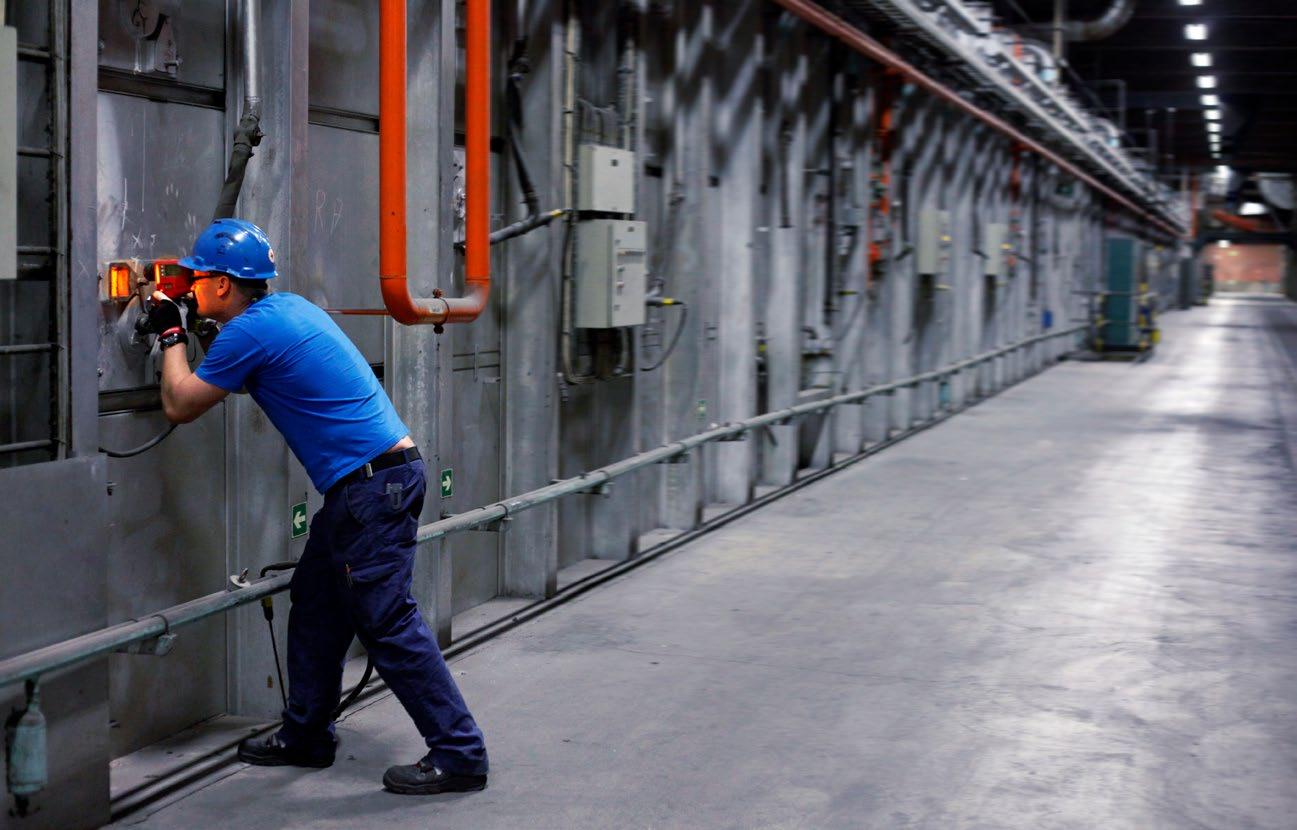
“We must have a new approach in how we collaborate with others to develop towards tomorrow’s needs. For instance, LCA data must be shared. There needs to be a higher level of transparency around how we choose to share information. To reach the speed needed, it needs to happen through concrete and direct partnerships within the ecosystem.”
value chain in 2037 (including scope 3 upstream). The climate roadmap is supporting the Paris Agreement goal of limiting global warming to 1.5°C within scope 1 and 2 and well below 2°C within scope 3.
Höganäs’ climate roadmap includes more than 200 activities that are planned to be implemented until 2030. “Our sustainability agenda is based on a materiality analysis and covers our important sustainability aspects,” Nordeman stated. “We work actively to improve our sustainability performance and right now we are focusing on the climate transition, which is directly associated with our business strategy and the development of our products. Our climate roadmap process is very structured and concrete and has very clear and timed activities with people responsible for each activity,” she says.
One example is replacing fossil coal with biochar in the sponge iron process (Fig. 6). The company has successfully conducted various small-scale tests involving biochar, made from biomass. In 2022, the project went from small-scale to full-scale tests. The project is supported by both the Swedish Energy Agency and Luleå University of Technology. If the results from the full-scale tests are positive, Höganäs will be able to use 20% biochar in its processes. This is expected to reduce the company’s carbon dioxide emissions by more than 10% – equivalent to approximately 27,000 tonnes per year in the first phase. If successful, the amount of biochar will be increased in phases 2 and 3 of the project, and the ultimate goal is to completely phase out the use of fossil coke, either through the use of biochar, or other fossil-free technologies.
Another example is increasing the amount of secondary raw material in metal powder to reduce both costs and carbon footprint. At its atomising plant in Halmstad, Sweden, Höganäs is running an electric arc furnace to melt both steel scrap and virgin materials (HBI and pig iron) to steel powder. In
2022, the company started a project to entirely replace virgin materials with scrap, which significantly lowers scope 3 emissions. The use of virgin materials went down from 15% to 0.7% of total amount raw materials used through the project. The plant in Halmstad is now 99% scrap-based and this achievement has become a standard, with the same ambitious plans in place for the plant in Stony Creek, Pennsylvania, USA.
Recently, Höganäs’ sciencebased targets have been approved by the Science Based Targets initiative (SBTi). “It’s a feather in the cap and gives credibility to our sustainability work,” stated Nordeman [1].
“The approval shows we’re serious and that we’ve done it the right way according to a recognised international standard.”
Contact Henrik Jarl Director Marketing Communications

henrik.jarl@hoganas.com
www.hoganas.com
References [1] https://sciencebasedtargets.org/ companies-taking-action#dashboard

www.twitter.com/PMRMag

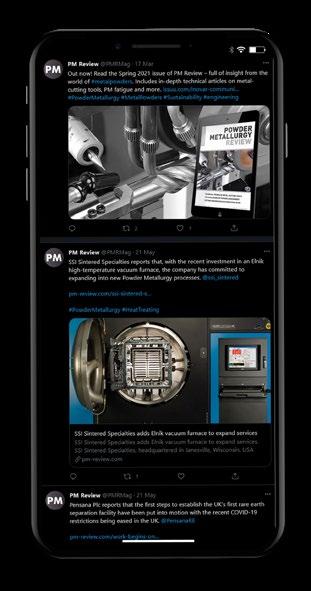
“Höganäs’ science-based targets have been approved by the Science Based Targets initiative (SBTi). ‘It’s a feather in the cap and gives credibility to our sustainability work” stated Nordeman

Powder Metallurgy in China: Markets, applications and the impact of vehicle electrification

Over the past three decades, China has grown into a powerhouse for Powder Metallurgy parts production. Supported by a thriving and diversified domestic market for PM parts, domestically-owned PM companies are now competing with international market leaders. China’s PM industry, however, faces the same challenges as the rest of the world’s producers – the transition to vehicle electrification. Here, Prof Cao Yang, Deputy General Manager of NBTM group and Deputy Secretary General of China General Machine Components Industry Association Powder Metallurgy Branch (CMPMA), and Dr Yau Hung Chiou (Dr Q), share their insights.
After three years of disruption as a result of COVID-19, the ‘press and sinter’ Powder Metallurgy parts industry in China has undergone many changes. In the context of global climate change, many countries and regions have set targets to restrict the sales of conventional internal combustion engine (ICE) powered vehicles, and many automotive companies
have proposed plans to limit or cease their production. China’s efforts to promote the development of what it terms ‘new energy’ vehicles – namely Battery Electric Vehicles (BEV), Plug-in Hybrid Electric Vehicles (PHEV) and Fuel Cell Electric Vehicles (FCEV) - have also had a significant impact on the PM parts industry, which is highly dependent on ICE components.
The development and current situation of the PM parts industry
According to data from the China Powder Metallurgy Business Network [1], there are more than 660 PM part-producing enterprises on the Chinese mainland. However, based on the statistics of the
Powder Metallurgy Branch of China Machinery General Parts Industry Association (CMPMA), there are only around 50 PM enterprises. The gap between these two figures can be attributed to the fact that many smaller PM producers, as well as the numerous Metal Injection Moulding (MIM) companies in China, are not members of the CMPMA.
Based on an analysis of statistical data collected from its members, the CMPMA states that total sales by the PM parts industry in China exceeded CNY 8.04 billion (US $1.162 billion) in 2021. An average annual compound growth rate of nearly 11.0% has been achieved since 1996, as illustrated by Fig. 1. Sales of PM parts in China saw a significant increase
of more than US $145 million (CNY 1 billion) in the fiscal year 2021. This was primarily due to a rebound in the demand for PM parts for cars, power tools, domestic appliances, construction machinery, and other industrial products.
The markets for China’s PM parts, by weight, are shown in Fig. 2. Automotive parts accounted for 51.9% of production in 2021, and this is the leading market for the Chinese PM industry. Domestic appliance parts accounted for 21.8% as the second most important market, followed by general machinery parts at 9.4%, and power tool parts at 7.0%, as shown in Fig. 2.
Export sales of PM parts accounted for about 17% of total production, according to CMPMA. China’s PM parts industry is, therefore, still dominated by the domestic market and benefits from a diverse range of applications. In addition to cars and domestic appliances, PM parts are used extensively in motorcycles, agricultural machinery, and power tools, construction machinery etc.
“Based on an analysis of statistical data released by CMPMA, total sales by the PM parts industry in China exceeded CNY 8.04 billion (US$ 1.162 billion) in 2021. An average annual compound growth rate of nearly 11.0% has been achieved since 1996.”
Trends in China’s automotive industry and their impact on the PM industry

According to data from the China Association of Automobile Manufacturers, car sales in China reached 26.864 million units in 2022, a yearon-year increase of 2.1%. Sales peaked in 2017 followed by a decline and a two-year recovery, as shown in Fig. 3.
Car sales haven’t yet reached their 2017 peak. However, with the rise of Chinese car brands, and a number of stock market listings, annual demand for PM automotive parts in China has not seen a decline. This is due to the rapid growth of Chinese car producers and key component suppliers, accelerating the localisation process for high value PM parts in particular, and resulting in Chinese companies producing parts that had previously been imported or produced by wholly foreign-funded enterprises.
According to the China Association of Automobile Manufacturers, China’s new energy vehicle sales have continued to grow in recent years, as shown in Fig. 4. The number of new energy vehicles sold in China reached 6.887 million units (including PHEVs) in 2022, with a market share of 25.6%. Growth has been driven in part by an increase in vehicle range as well as the rapid expansion of charging facilities. The sales of new energy vehicles in China have exceeded previous forecasts.
This growth in the sales of new energy vehicles, especially the rapid increase in BEV sales, directly impacts both the market for ICE vehicles and the PM parts industry, which is highly dependent on components used in engines and gearboxes.
It is worth noting that in 2022 the sales volume of pure electric vehicles in China, including both cars and commercial vehicles, reached 5.365 million units, accounting for 77.9% of all new energy vehicles. The rapid growth of China’s new energy vehicle
“The number of new energy vehicles sold in China reached 6.887 million units in 2022, with a market share of 25.6%. Growth is driven in part by an increase in vehicle range as well as the rapid expansion of charging facilities. The sales of new energy vehicles in China have exceeded previous forecasts.”
and record electric vehicle sales in the second half of 2022 not only boosted the sales market of Chinese cars, but also sent a clear signal to China’s PM parts industry that it has to pay close attention to the growth of these technologies.
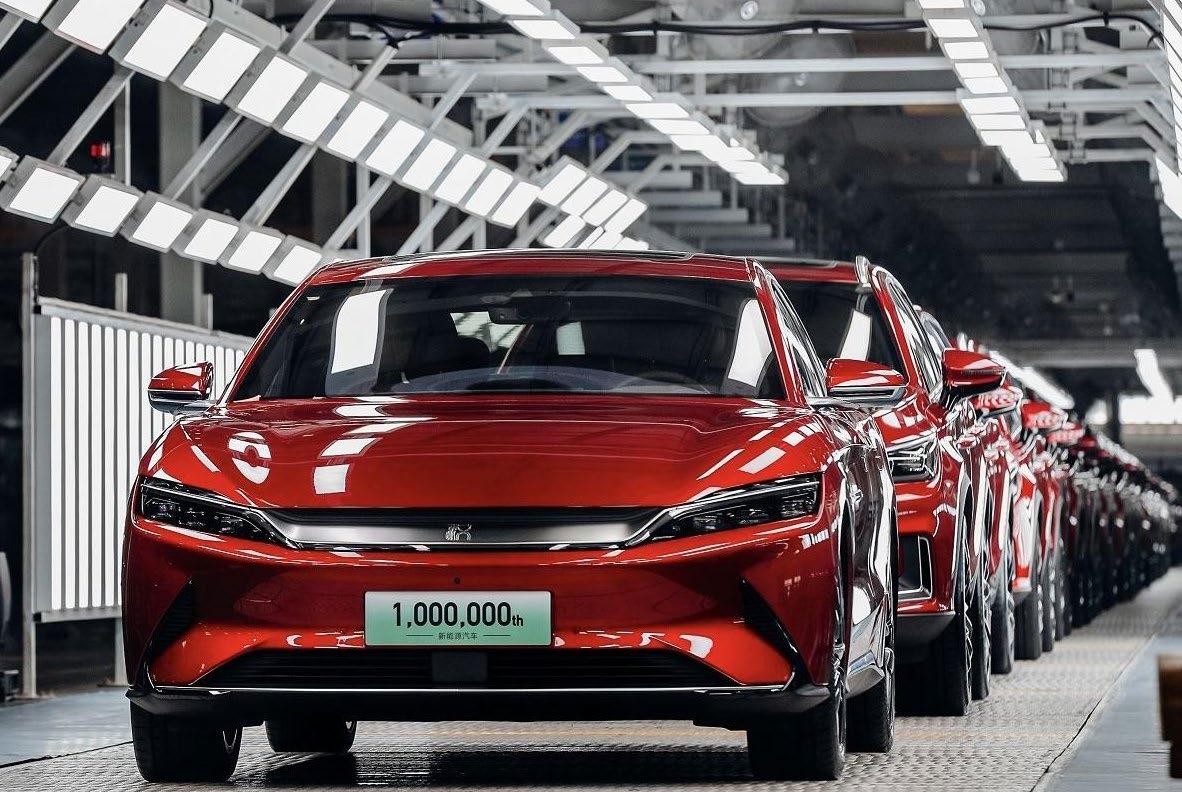
Innovation helps the development of the PM industry
Within China’s PM parts industry, refrigeration compressors for household appliances, hydraulic system components for construction machinery, power tools, motorcycles and agricultural machinery etc, have seen increased market demand. There is also significant market potential for the replacement of
castings, forgings and machined parts in China, thanks to the energy and material saving benefits of the PM process. Components such as sinter-brazed planetary carriers for automotive transmissions, PM hydraulic components with higher pressure resistance, sintered balancers for refrigeration compressors, stainless steel PM parts and powder forging of ironbased and other alloys, offer the chance to expand the application for PM parts in China.
In terms of improving the density of PM parts, a density of over 7.5 g/ m 3 for iron-based parts can be achieved through die-wall lubrication technology, and surface densification technologies can increase the density of the tooth surface or end-face of PM parts to
7.4 g/cm 3 or higher. These densification technologies are also expected to support the growth of the PM parts industry in China.
The rapid development of China’s PM parts industry over the past three decades has meant that companies, and the entrepreneurs that drive them, have experienced significant market changes. At a time where these changes are happening ever more rapidly, business leaders are paying attention to shifts in the PM parts market whilst also looking out for development opportunities in the Chinese macro market – for example, opportunities in the recent rapid development of photovoltaics, wind energy, communications and, of course, BEVs. New energy vehicles, including BEVs have continued to grow and managed to reach a record sales volume of nearly 2.5 million units in the fourth quarter of 2022.
Both MIM and Soft Magnetic Composite materials (SMC) have been adopted by the new energy vehicle industry, in addition to PM parts. Even metal Additive Manufacturing is finding opportunities in this area.
Leading Chinese PM companies are diversifying their operations
NBTM New Materials Group is the largest manufacturer of ‘press and sinter’ PM parts in China (Fig. 6), with its annual financial report showing that its sales of PM parts reached CNY 1.868 billion (US $270 million) in 2021. NBTM’s report also shows additional sales of soft magnetic materials of CNY 506 million (US $73 million) and MIM part sales of 1.177 billion (US $170 million) in the same year.
NBTM Group has the highest market share for PM automotive parts, as well as home appliances, which together are the largest markets for China’s PM parts industry. NBTM Group began technical research on Soft Magnetic Composites (SMCs) in 2010 and entered the industry through acqui -
“There is also significant market potential for the replacement of castings, forgings and machined parts in China, thanks to the energy and material saving benefits of the PM process.”Fig. 5 The sales of new energy vehicles, including BEVs, have continued to grow in China and reached a record sales volume of nearly 2.5 million units in the fourth quarter of 2022 (Courtesy BYD)
sition of an SMC specialist in 2014. It entered the MIM industry by acquiring Shanghai Future Hi-Tech Co., Ltd. in 2019 and has since built a diversified industrial portfolio based on powder technology.
Other notable large-scale Powder Metallurgy enterprises in China include Yangzhou Porite, Jiangsu Yingqiu Group and Chongqing Huafu. Yangzhou Porite has a considerable market share in oil-impregnated bearings, as well as power tools and auto parts; Jiangsu Yingqiu Group also has a large market share in oilimpregnated bearings. In addition, Yangzhou Haichang New Materials is a manufacturer of PM parts that has enjoyed rapid growth in recent years, with its annual financial report showing that sales of PM parts reached CNY 315 million (US $45 million) in 2021. Its PM parts are primarily used in power tools. Many of the aforementioned compa -

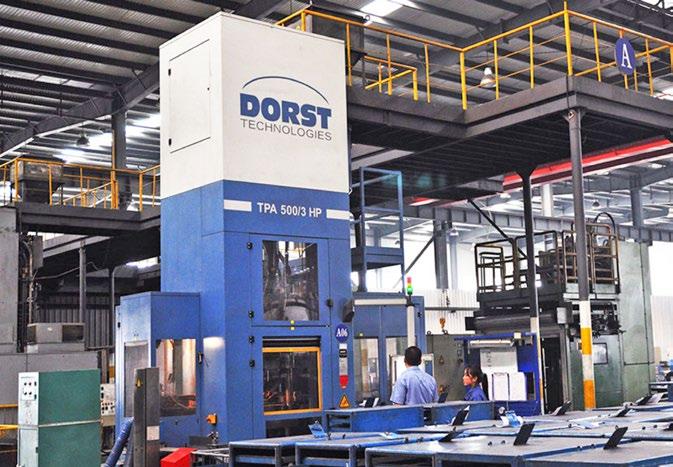
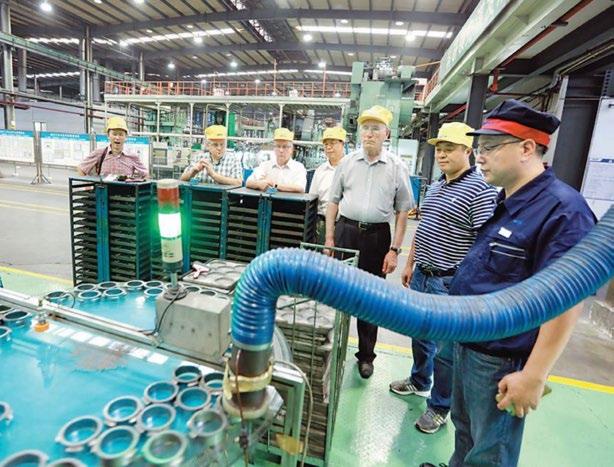
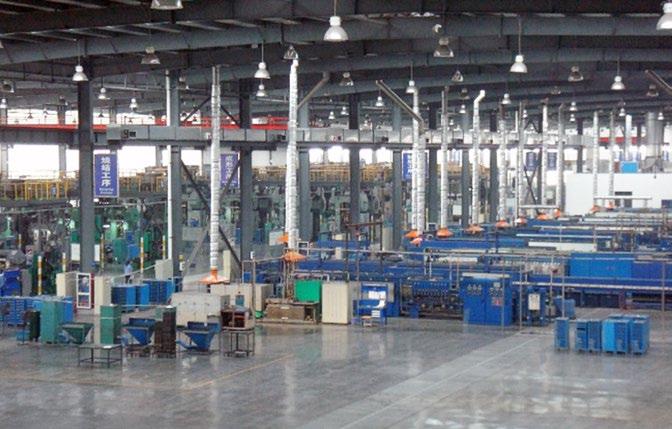
nies have invested in, or are also investing in, MIM and magnetic materials, including soft magnetics.

China’s rapidly developing economy and highly market-oriented supply chain, combined with the availability of capital, supports Chinese entrepreneurs in their response to market changes. In an evolving industrial landscape, observing changes in markets from a development perspective can turn
challenges into opportunities for business development.
Alongside the aforementioned local enterprises, foreign-owned PM part producers in China primarily serve the automotive market and, generally, they serve their longstanding international customers. However, the scale of these enterprises is not as large as the major Chinese-owned PM parts enterprises highlighted.
“China’s rapidly developing economy and highly market-oriented supply chain, combined with the availability of capital, supports Chinese entrepreneurs in their response to market changes.”
Summary
China is a huge market and PM applications in China are diverse. The rapid development of new energy vehicles will change the traditional ICE vehicle market, but it will also bring new development opportunities. In addition to the use of PM parts in the automotive industry, there are still a large number of applications in China across other fields. Within the PM industry, beyond the press and sinter parts industry are opportunities in MIM, magnetic materials, Hot Isostatic Pressing and other fields.
Strengthening the international exchange of PM research and industrial expertise is one of the most effective ways to respond to market changes. China has huge and diversified market demands, as well as complete and largescale industrial supply chains.
Nationally and regionally, there is also a solid foundation in science and technology, and rich practical experience in industrialisation. We hope that the global community can maintain an atmosphere of open exchange and mutual cooperation, which is the basis for promoting the development of the global PM industry.
Authors
Prof Yang, Cao. Director and Deputy General Manager, NBTM Group
Deputy Secretary General of China General Machine Components Industry Association Powder Metallurgy Branch (CMPMA) caoyang@pm-china.com
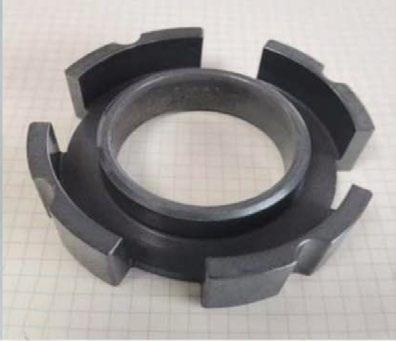

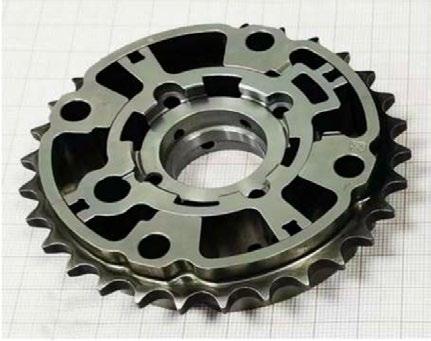
Yau Hung, Chiou (Dr Q) General Manager of You Need Technology Office. chiou55631966@163.com
References
[1] www.pmbiz.com.cn
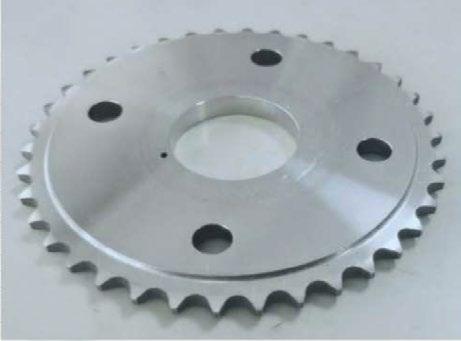
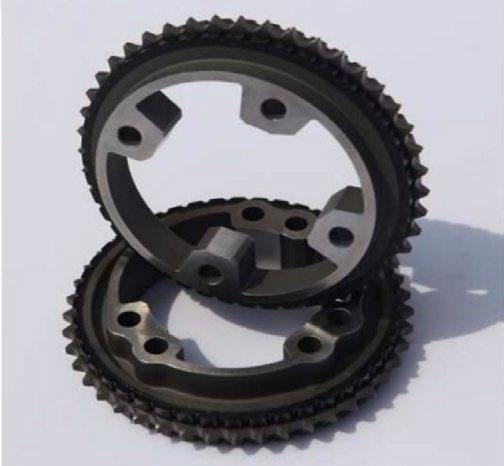
REVIEW
DOWNLOAD ALL PAST ISSUES

THE PM REVIEW MAGAZINE ARCHIVE GIVES FREE DIGITAL ACCESS TO PAST ISSUES DATING BACK TO 2012
A decade of exclusive content, offering unparalleled insight into the world of metal powder production and manufacturing.


Additive Manufacturing with Powder Metallurgy
CAESARS PALACE

technical program


Attendees will have access to hundreds of technical presentations from worldwide experts on the latest research and development.
TRADE EXHIBIT
The largest annual American exhibit showcasing leading suppliers of powder metallurgy and metal additive manufacturing powders, equipment, and products.
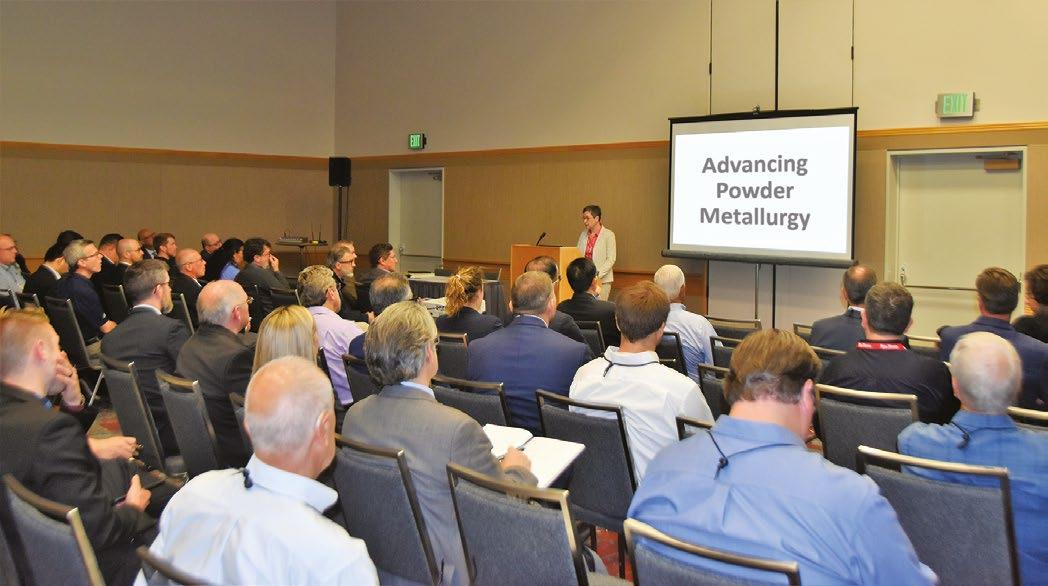
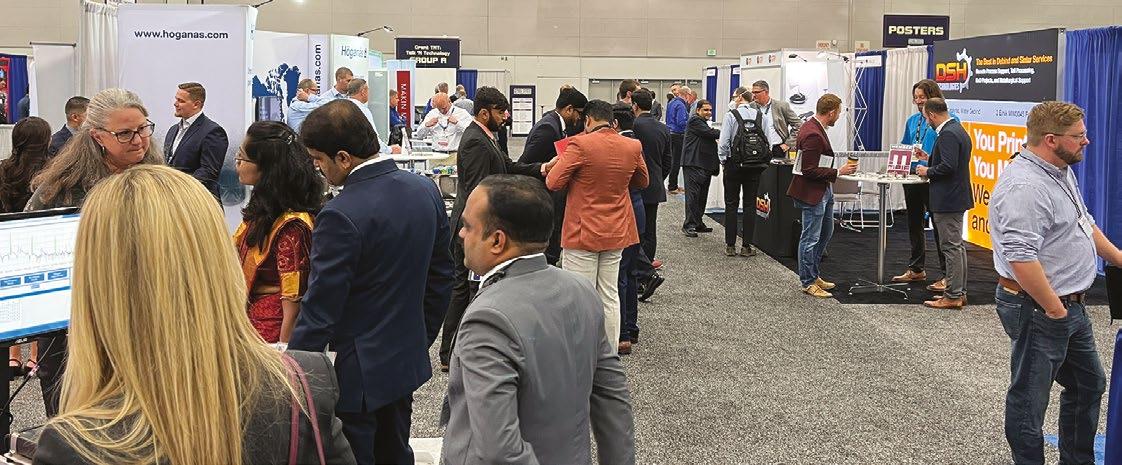
Taking control of your metal powder supply chain: Blue Power’s solutions for in-house atomisation
Driven in large part by the rise of the metal Additive Manufacturing industry, demand for specialist metal powders is increasing. Such profound changes in the market for metal powders have stimulated the development of innovative processes for cost-effective in-house production. One important player in this area is Indutherm Erwärmungsanlagen GmbH, with its subsidiary Blue Power Casting Systems GmbH. Dr Georg Schlieper recently visited these companies and reports on their solutions for the production and classification of fine metal powders in small to medium volumes.
Indutherm Erwärmungsanlagen
GmbH was founded in 1996 in Walzbachtal, Germany, a small town located between Karlsruhe, with its renowned Technical University, and Pforzheim, a centre for the production of jewellery and the processing of precious metals. Thanks to its geographical location, the company’s three founders recognised the potential for its product line of induction melting equipment and solutions for the investment casting of precious metals. The numerous investment casting companies located in the area were, therefore, identified as key targets for growth.

Peter Hofmann, one of the three founders and a senior partner at Indutherm, told PM Review about the history of the company. “From the beginning, our strategy has been to develop the essential elements of our technology ourselves”, he said. “At the heart of every system are the induction generators whose in-house development gave us a clear technical advantage over our competitors right from the start.”
In its early days, the company’s management chose to specialise in systems for vacuum die casting, investment casting and continuous casting.
Indutherm’s involvement with the Powder Metallurgy sector began in 2013 with the development of a powder atomisation system as part of a research project with the


University of Bremen. In 2016, Blue Power Casting Systems GmbH was founded as a subsidiary in order to serve the PM industry in a more targeted manner. Both companies, Indutherm and Blue Power, continue to be located in Walzbachtal (Fig. 1) and work very closely together. Indutherm, including its Blue Power division, is a typical example
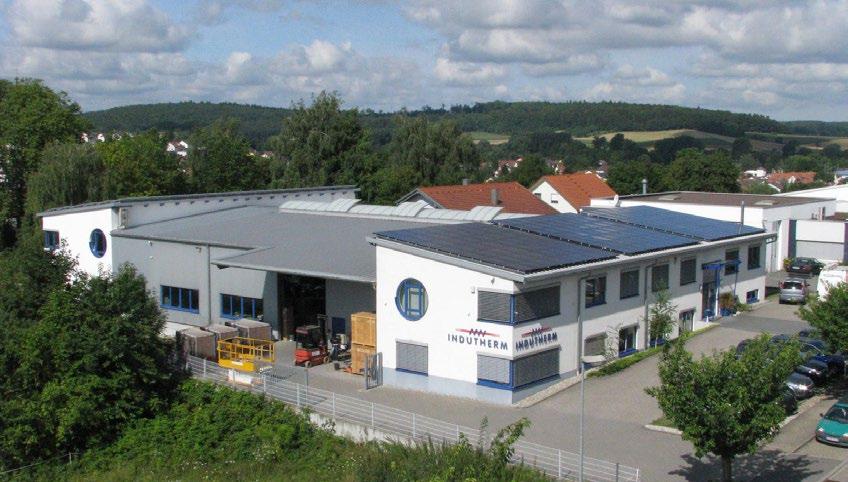
of the medium-sized companies that form the backbone of German industry. With around forty-five employees, the company manufactures around 400 systems annually. This level of sales is enabled in large part due to the many companies in the vicinity that supply components. Indutherm and Blue Power hold the intellectual property for the most critical components and assemble the systems at their facility for sales worldwide. A sales network with representatives in more than fifty countries supports the company in the marketing of its products.
Melting units
The melting unit is, as the name suggests, the part of the powder production plant where the source metal or alloy is melted prior to atomisation. A special feature of Blue Power’s metal powder atomising system range is its modular design. Additionally, the same melting units are used for both the company’s casting systems and its metal powder atomisers. These melting units are equipped with a crucible, which can be made from either graphite or engineered ceramics,
depending on the chemical properties of the melt. The raw material is filled into the crucible, which is placed inside an induction coil (Fig. 2). The raw material can have any shape and alloying elements can be added in an elemental form or as master alloy.
A pulsed alternating current flowing through the induction coil creates an alternating electromagnetic field. The resulting induction current heats the melt material rapidly to above its melting temperature. The inductive heating of the melt material is very fast and allows an extremely precise control of the temperature of the melt. The alternating field of the induction coil generates an inductive ‘bath’ movement in the melt, which ensures that the melt is thoroughly stirred and homogenised. A plug in the middle of the crucible bottom is pulled upwards in order to drain the melt into the atomising unit.
The melt unit is installed in a hermetically sealed-chamber so that the raw material can be melted under protective gas or vacuum. The operator can observe the melting and atomising process through sight glasses and on the control screen. Blue Power specialises in small to medium sizes of melting and atomising units and melting units with a crucible volume between 0.25 and 25 litres and maximum temperatures up to 2100°C are available. The smallest crucibles are of particular interest for R&D, small-batch production and the precious metals industry because they enable the processing of metals in small quantities, with no loss of material and avoid cross contamination.
The design of the melting unit is adapted to the specific requirements of a customer. In addition to the melting temperature of the metal or alloy, chemical reactions with the crucible material may have to be taken into account. Standard melting units with graphite crucible are used up to a maximum temperature of 1600°C. They are suitable for the production of powders based on metals that do not react with carbon, such as copper, gold, silver, tin, zinc ,
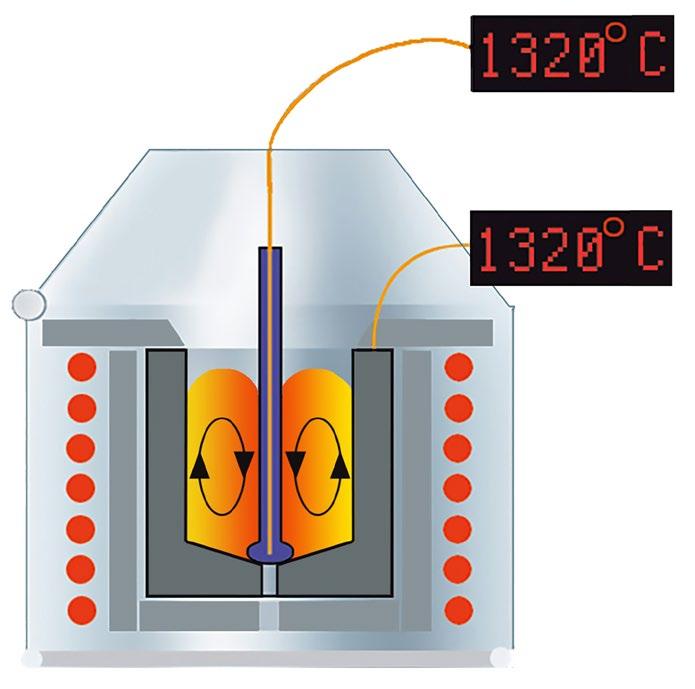
“A special feature of Blue Power’s metal powder atomising system range is its modular design. Additionally, the same melting units are used for both the company’s casting systems and its metal powder atomisers.”
aluminium and magnesium. Ceramic crucibles are used for higher melting temperatures and metals that react with carbon, such as iron and steel, cobalt, nickel, palladium and platinum.

Blue Power’s melting units are designed for maximum energy efficiency, with the electromagnetic field’s energy acting directly on the material in the crucible. Elaborate thermal insulation ensures that energy losses are minimised and the water cooled metal housing of the melt chamber has the function of a Faraday cage, preventing the emission of electromagnetic radiation. For extremely reactive metals such as aluminium and magnesium, special custom solutions are available.
Atomisation technologies
The company offers three different methods for atomising metals: gas atomisation, ultrasonic atomisation and water atomisation.
Gas atomisation
The principle of gas atomisation is well known: the melt enters the atomisation chamber through an outlet and is atomised by gas at high pressure into fine droplets, which solidify into spherical powder particles in flight. The size of the atomisation chamber must be large enough for the metal droplets to solidify before hitting a wall. A gas atomisation plant is installed at Blue Power to enable customers to carry out tests, as shown in Fig. 3.
By choosing the temperature of the melt and the design of the gas nozzle, gas pressure, gas temperature and metal mass flow, particle size distribution can be influenced within broad limits (Fig. 4).
Blue Power offers two types of gas nozzles, one for Close Coupled Atomisation (CCA) and another for Free Fall Atomisation (FFA). The CCA nozzle causes the gas inflow on the molten metal directly under the outlet opening, while, with the FFA nozzle, the melt jet falls free to a certain extent before it is atomised
Polished stainless steel surfaces prevent powder adhesions in spray chamber, cyclone and collector – all parts are easy to clean without any residues.
Fine-tuning of the particle size distribution is obtained by variation of gas pressure, gas temperature (up to 450°C)
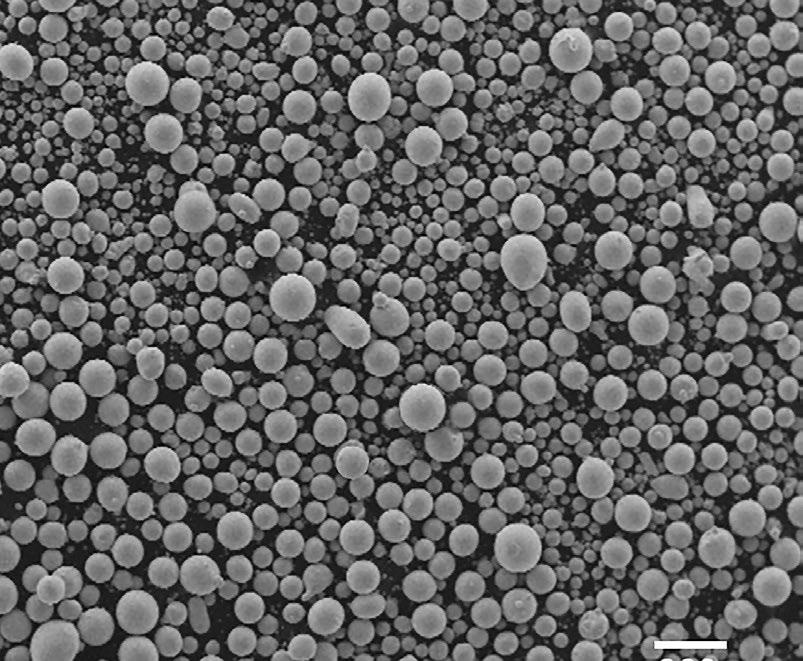
mass ow:
MINIMUM RISK OF MATERIAL LOSS AND CROSS CONTAMINATION
Electropolished inner surfaces prevent powder adhesions and avoid material loss and cross contamination.
OXIDATION-FREE PROCESSING
Oxidation-free processing in the closed-chamber machine by means of degassing, vacuum, and protective gas features to realize the highest level of cleanliness. Oxygen sensor values below 0.5 ppm can be achieved reproducibly.
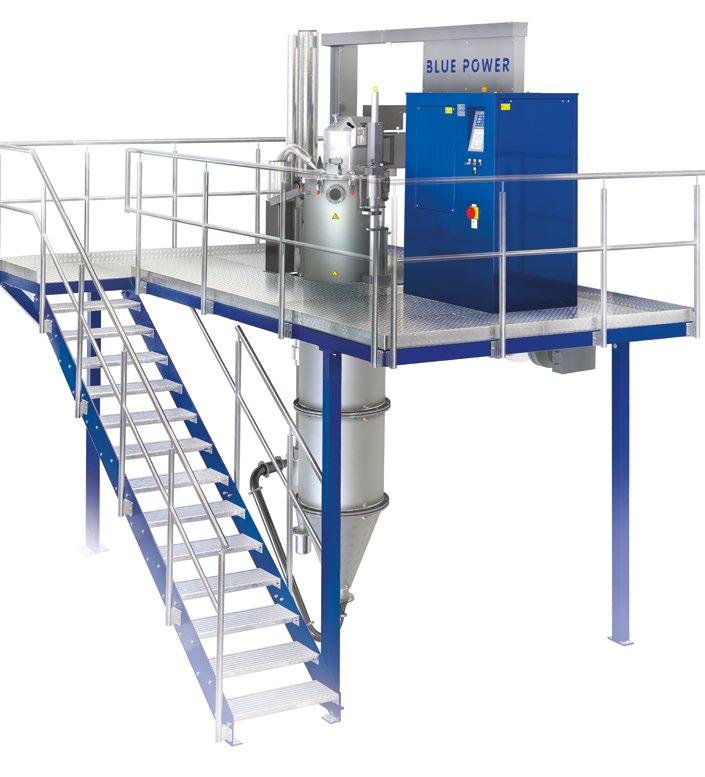
GAS SEPARATION BY TREATMENT CYCLONES, MINIMUM RISK OF POWDER AGGLOMERATION
Water-cooled parts like spray tower and cyclone the atomized material, optionally in combination feature to avoid agglomerations especially of soft materials like Cu, Ag, Au, and/or in case of very (diam. ~< 20 µm).
DYNAMIC DIFFERENTIAL PRESSURE SYSTEM FOR CONSTANT METAL MASS FLOW
The DDP system is ensuring a constant and controllable ow, and therewith a constant gas-to-metal ratio, the melt level in the crucible.
1750º C, HTC up to 1850º C, HTC+ up to 2100º C. The crucible volumes reach from ~1.5 l to ~25 l. For the production of reactive materials like Al or Mg, please ask us for our solutions.

Blue Power’s atomisation solutions


Powder characteristics and particle sizes for every request









To obtain speci c metal powder characteristics and particle sizes, the AUG machines work with different easy-to-change nozzle systems: free-fall and close-coupled atomization nozzles. Optionally, an anti-satellite system for highest sphericity is available.



by the gas flow (Fig. 5). The nozzle can be easily replaced by lifting the melt chamber and swinging it sideways. This process also makes it possible to thoroughly clean the atomisation chamber. The CCA nozzle allows significantly finer particle


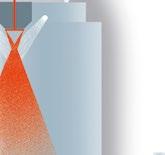
sizes than the FFA nozzle. Additional equipment to reduce satellite formation is optionally available.


“The greatest care is taken to produce metal powders of the highest possible purity,” explained Peter Hofmann. “Atomisation under
protective gas, generally nitrogen or argon, effectively prevents the absorption of oxygen. Values of less than 0.5 ppm, measured with the oxygen probe, are reproducible. For extremely reactive metals such as aluminium and magnesium, passivation is possible to minimise the reactivity of the produced powder particles.”
Ultrasonic atomisation




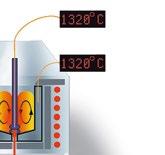

Together with Amazemet, a spinoff from the University of Warsaw, Poland, Blue Power has developed its own ultrasonic atomisation solutions. Ultrasonic atomisation is an innovative process for the production of extremely spherical metal powders. As in gas atomisation, the melt leaving the melting unit flows through a fine outlet, but then hits a plate in the atomisation chamber which has been set into high-frequency oscillations through ultrasound. These vibrations disintegrate the melt into ultrafine spherical particles (Fig. 6). Particle size distribution is adjusted by the ultrasonic frequency and the outlet opening (Fig. 7).
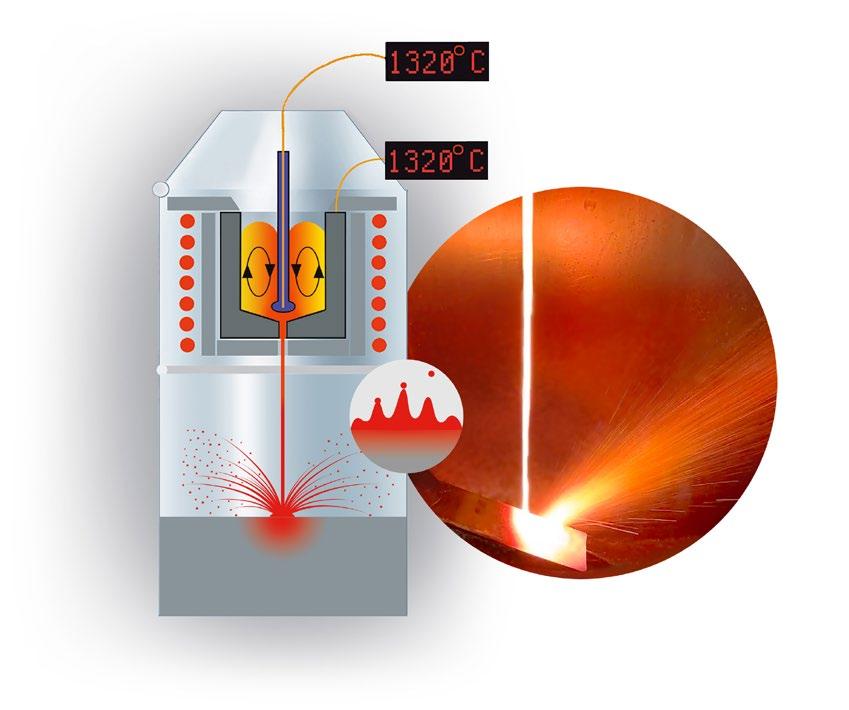
Fine-tuning of the particle size distribution is obtained by variation of the ultrasonic frequency and the metal mass ow:
ADVANTAGES OF OUR CRUCIBLE-BASED ULTRASONIC ATOMIZING PRINCIPLE
Whilst the melting of the alloy can take place in vacuum or protective gas, ultrasonic atomisation is carried out under protective gas. To date, systems for ultrasonic atomisation at Blue Power are only available for small crucible volumes of 0.25, 0.4 and 0.7 litres. The size of these systems is therefore very small (Fig. 8) and the melting/atomising cycle short. Very small powder batches down to about 100 g are
PREVENTION OF MATERIAL LOSS AND INACCURACY OF ALLOY CHEMISTRY
due to precise control of the melting temperature via a crucible based induction heating system, while evaporation of alloy ingredients like Zn, Cr etc. is a common issue during plasma-assisted atomization.
POSSIBILITY TO CREATE OWN ALLOY COMPOSITION INSIDE OF THE ATOMIZER’S CRUCIBLE-BASED MELTING SYSTEM
technically and economically possible, so these atomisation systems are still today primarily aimed at applications where small quantities of metal powder are required, for example R&D, small lot production etc. Ultrasonic atomisation therefore has the advantage of allowing users to produce special powders of the highest purity according to a customer’s specific requirements.

Alloying with a good stirring/mixing effect due to strong mediumfrequency induction generator with simultaneous high heating efficiency. Melting under vacuum or inert gas atmosphere and atomizing under inert gas atmosphere.
INCREASED YIELD AND PRODUCTION CAPACITY DUE TO HIGHER FREQUENCY
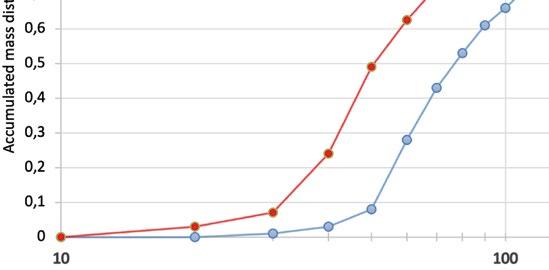
Yield for example for Bronze d50= 40-60 µm. Bronze throughput up to several kg/h. Very small batch sizes down to ~100 g technically and


NO SOPHISTICATED AND EXPENSIVE FILTER REQUIRED
for evaporated alloy ingredients otherwise caused by plasma melting
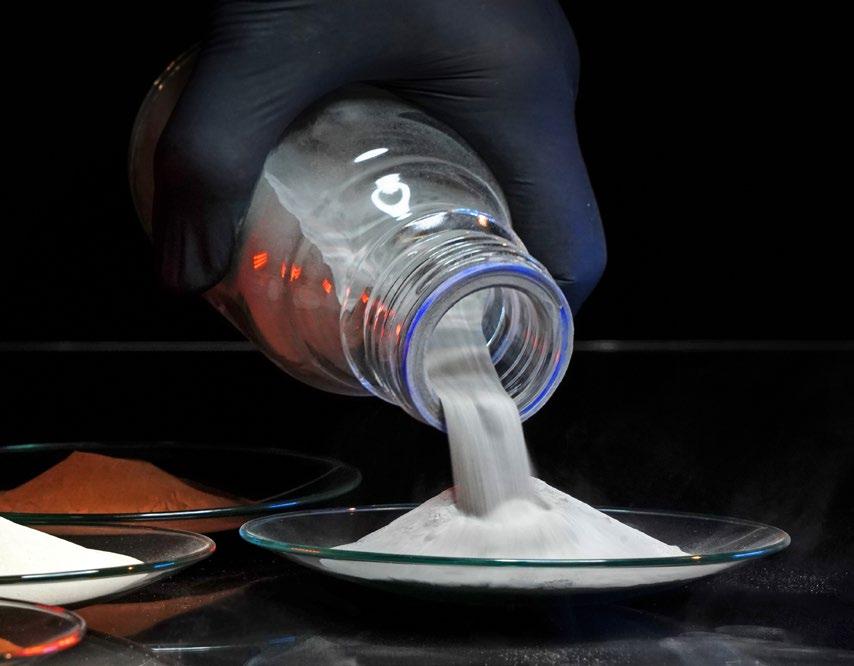

FEEDSTOCK CAN BE IN MORE OR LESS ANY SHAPE – NOT JUST PRE-ALLOYED WIRE OR BAR
The powders produced are perfectly spherical and virtually free of satellites, giving them the highest possible flowability (Fig. 9). The running time of the entire process from filling the raw materials to the finished powder is about one hour, so that even mediumsized powder volumes can be produced economically. Blue Power specifies the atomisation capacity as being up to several kilograms per hour for bronze powder.
No need for complex and expensive wire production as feedstock material for atomizing, which is time-consuming and requires additional infrastructure like continuous casting machines, a drawing bench etc.
EXTREMELY SPHERICAL POWDER
Footprint of just a few square meters including infrastructure
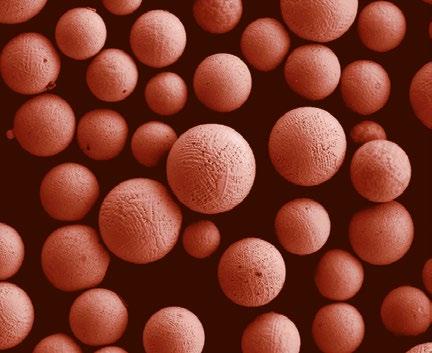
Maximum spherical
Ideal for LPBF, BJ, MIM, and other Additive Manufacturing processes
Very high purity
(oxidation-free processing in the closed-chamber machine by means of degassing, vacuum and protective gas features)
Very small batch sizes
Down to ~ 100 g bronze or steel technically and financially viable
PLANTS
From alloy creation to powder within 1 hour
Highly spherical deal for LPBF, BJ, MIM, and other Additive Manufacturing processes
Very high purity
(oxidation-free processing in the closed-chamber machine by means of degassing, vacuum and protective gas features)
Small to medium amounts
Up to 180 kg bronze or steel per cycle (depending on version)
Numerous variations of process parameters allow very wide range of particle size distribution within one machine
Solutions are designed for the production of spherical powders by avoiding any contact formation, water-atomized powders typically have a more irregular shape which is an adrecycling/refining process, press & sinter processes, and others.
Water atomisation
If powders consisting of irregularly shaped particles are required, water atomisation is an option. The melt flow is atomised with water jets and the powder particles are collected in the water that accumulates at the bottom of the atomisation chamber (Fig. 10). The powder particles rapidly cool when they come into contact with water.

More irregular
Ideal for recycling/refining processes, press & sinter processes, and others
High purity (oxidation-free melting by means of degassing, vacuum and protective gas features)
Irregularly shaped powder particles are particularly suitable for conventional press and sinter Powder Metallurgy processing, as they offer increased green part strength. With suitable atomisation parameters, however, it is also possible to obtain almost spherical powder particles with water atomisation. Therefore, water atomised powders that are suitable for Additive Manufacturing can also be produced.
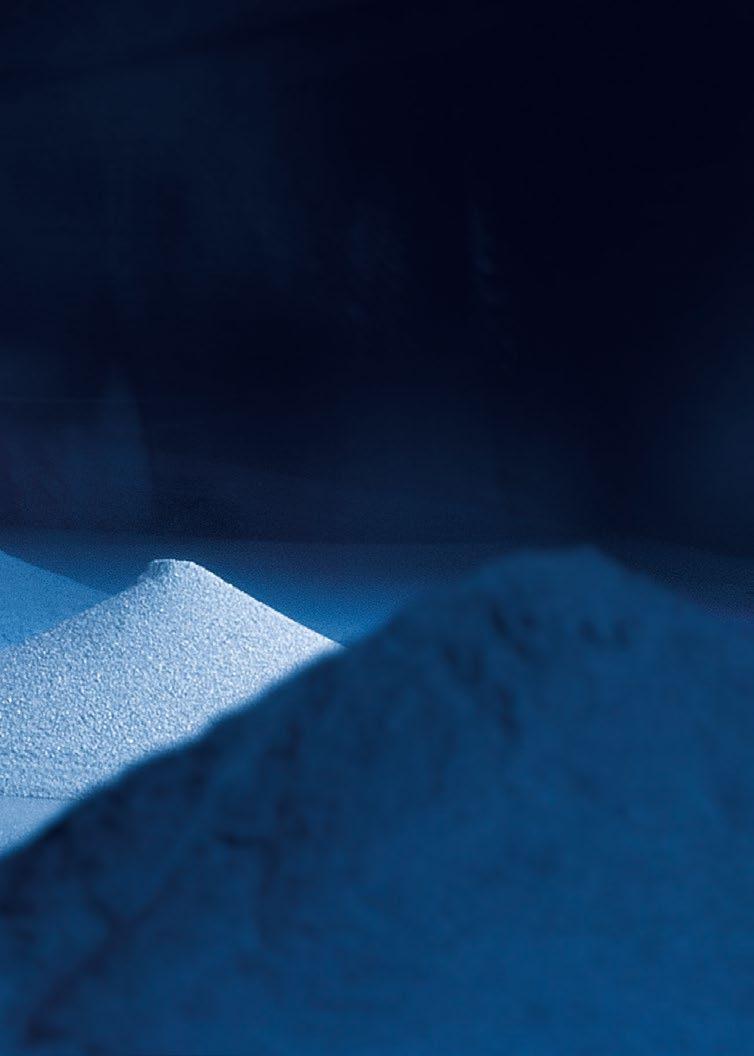
Small to medium amounts
Up to 9 kg bronze or steel per cycle (depending on version). Larger versions in development.
Production of almost spherical powder is also possible
The process cost of water atomisation is significantly lower than that of gas atomisation, because the atomising medium – water rather than gas – is cheaper. However, water atomised powders absorb a certain amount of oxygen through contact with water, which may be disadvantageous for some alloys and applications.
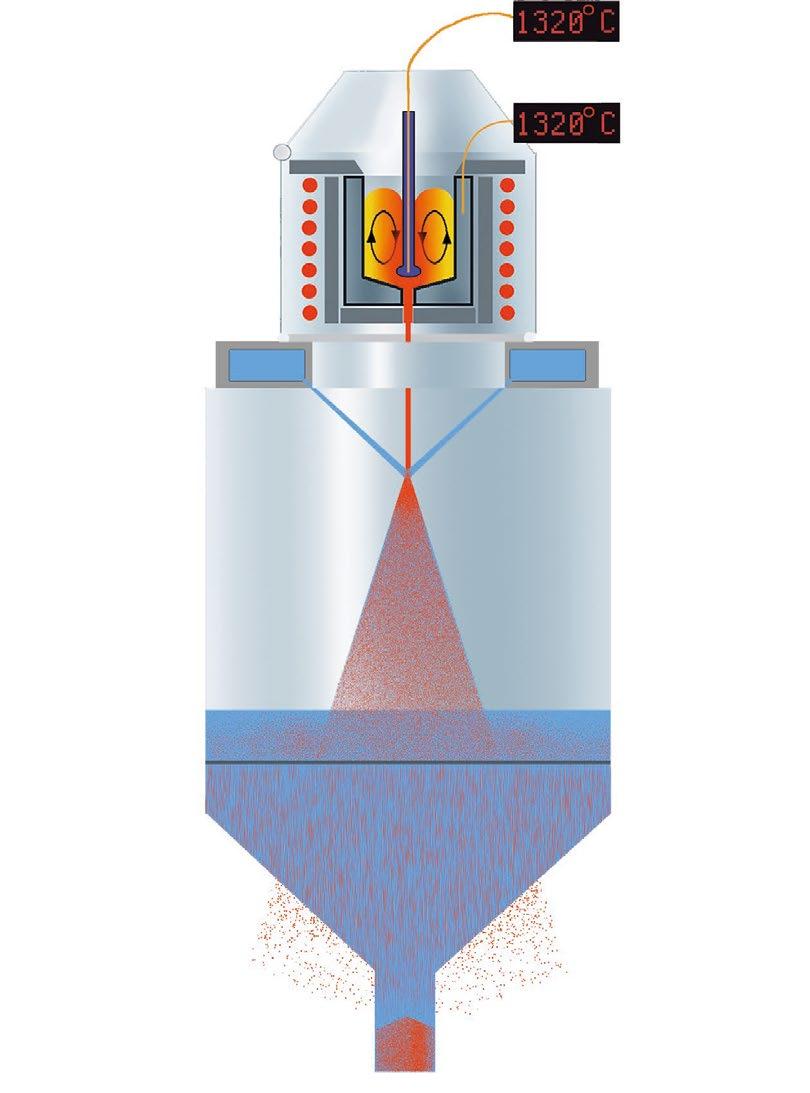
Air classification
spherical, fine powder by water atomization with appropriate process parameters, which applications.
MAIN DIFFERENCES INCLUDE
COSTS
water as the and
Every powder production process results in a certain range of particle sizes. As a rule, however, each processing technology, be it Metal Injection Moulding (MIM) or Laser Beam Powder Bed Fusion (PBFLB), for example, requires a certain, limited particle size range. It is therefore necessary to separate either the coarse fraction above a certain particle size, or the fine fraction, or even both. Above around 45 microns, sieves are used for this purpose, while finer powders are better separated by air classification. Blue Power offers a series of air classifiers that can be used regardless of the powder production process/atomisation technology.
The function of an air classifier is shown in Fig. 11. A rotating stream
Blue Power’s atomisation solutions
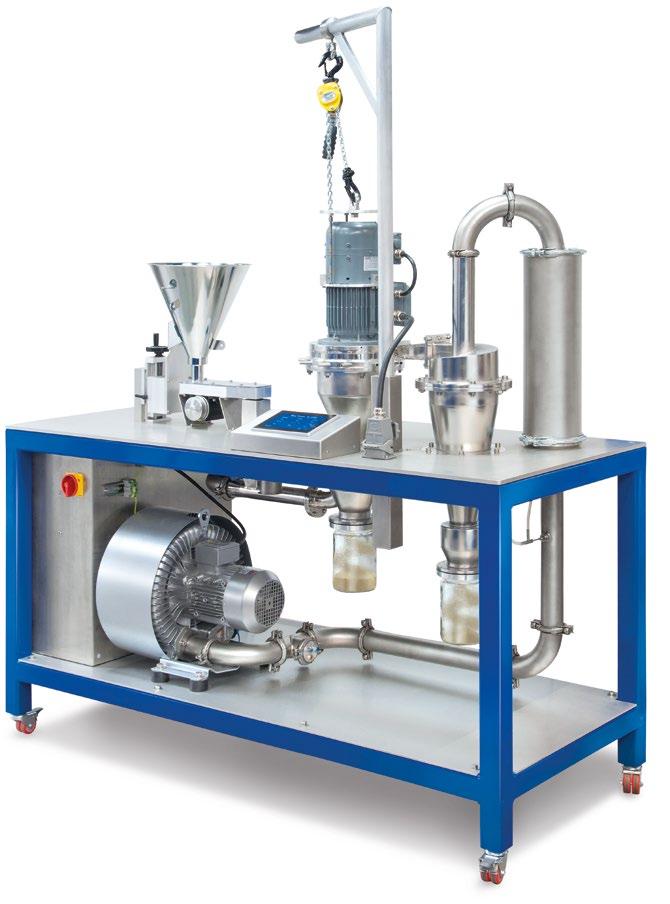
of air or gas is generated inside the air classifier by an impeller wheel into which the powder is introduced via a chute. Fine powder particles are better carried by the gas flow than larger particles. The latter, due to their greater mass, are subject to greater centrifugal forces and are carried to the outer rim of the gas stream and fall into the collecting container for the coarse fraction. The fines are transported with the gas flow and end up in the second collecting container. In this way, the coarse fraction can be separated from the fines. The cut point can be adjusted by selecting the rotation speed of the impeller and the gas flow rate.
The efficiency of air classification is shown in Fig. 13. The middle curve represents the particle size distri bution of a 316L steel powder in the as-atomised state. The mean value of the particle size distribution, d50, is 24 µ m. After air classification with a cut point of about 25 µ m, a coarse fraction (green curve) with a D10 value of 27.1 µ m is obtained and the d90 value of the fine fraction (blue curve) is 26.4 µ m.
Blue Power’s growth strategy

Jan Hofmann, the son of one of the three company founders and now managing director of the company, explained Blue Power’s growth strategy to PM Review . “The jewellery industry continues to be an important sales market for us, particularly because metal Additive Manufacturing is increasingly being used in the precious metals sector in addition to investment casting,” said Hofmann. “We supply suitable systems for both processes.”
Hofmann identified a number of applications for metal powders where he expects successful business. Currently, he sees a sharp increase in demand for copper powder. “Because of its high electrical and thermal conductivity, copper is used in the electronics industry in large quantities,” he said. “Intricately shaped components, such
atomized powder
The following examples show a cut point at ~10 µm for 18ct gold powder and at ~25 µm for steel powder.
Fine fraction after classification: d10=4,1; d50=7,5; d90=10,6; sig=1,5
Classifier.
As atomised 1250°C; CCA 24 bar; Hot gas 330°C: d10=6,1; d50=16,5; d90=37,0; sig=2,0
Coarse fraction after classification: d10=12,4; d50=21,3; d90=42,3; sig=1,6
as heat sinks and heat exchangers, are manufactured cost-effectively by MIM or AM processes, in particular.” Other interesting application areas relate to the processing of precious metals in the recycling of cata lysts or the production of powders used in hydrogen technology.
“We have applied our experience of more than twenty-five years with inductive heating technology in developing small, efficient and extremely flexible systems for the production and air classification of metal powders,” said Hofmann. “Our systems are used by companies that
As atomised 1700°C CCA 12 bar;: d10=9,3; d50=24,0; d90=43,3; sig=1,8

Coarse fraction after classifying: d10=27,1; d50=37,7; d90=52,3; sig=1,3
Fine fraction after classifying: d10=7,0; d50=14,7; d90=26,4; sig=1,7
and the AC 1000 Air Classifier.
want to manufacture products from expensive and/or customer-specific alloys. Research institutions and universities that want to develop novel materials, for which commercial powders are not yet available, can also carry out atomisation tests with our small systems. Powder metallurgical alloys that are outside of the ‘mass market’ can be produced economically with Blue Power systems.”
“Whether the powder is to be processed by Additive Manufac -
turing, MIM or press and sinter PM, our systems offer a solution for every operation,” said Hofmann. “The modular design of our systems is user-friendly and allows quick access to all components for inspection and maintenance. All systems have polished stainless steel surfaces, which prevent the adhesion of powder residues, so that they can be easily and thoroughly cleaned to avoid crosscontamination and allow rapid alloy change.”
Blue Power and Industry 4.0
The systems developed by Indutherm and Blue Power are designed to meet the requirements of Industry 4.0. For more than twenty years, digital solutions have been used by Indutherm, for remote system maintenance at a customer’s site and for software updates. The ability to remotely control operations also gives companies the ability to monitor the execution of processes from any location.
Blue Power provides its customers with a Data Management System (DMS) as standard, with which all process parameters and measured variables can be recorded in digital form for documentation and process control. The software can be configured and adapted to the requirements of the respective user, for example for operational production, scheduling, quality assurance or management. The process data are displayed

“Blue Power provides its customers with a Data Management System (DMS) as standard with which all process parameters and measured variables can be recorded in digital form for documentation and process control.”
in diagram form or as a table, as required. The DMS app is continually being enhanced to make the production process safer and more efficient.

The remote control of Blue Power systems is enabled by the DMS user interface, whose graphics mirror the user interface of the associated machine (Fig. 15). Another local software solution is IThermControl, used for process optimisation, documentation, process monitoring and the visualisation of processes, as well as for statistical evaluations. Finally, Indutherm offers its customers its own cloud solution, through which all uploaded data can be accessed from any location worldwide.
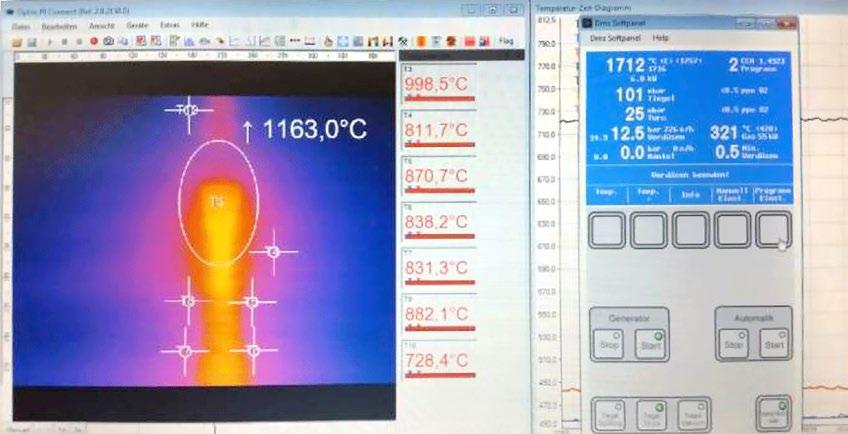
However, the capabilities of the cloud solution go far beyond providing data. The data are also displayed graphically and can be further processed. Users can call up the status of a system in real time and access information on past operations using any connected device. Customers can also easily integrate these software solutions into their corporate networks.
Research
As a technology-focused company, Blue Power has always placed great emphasis on increasing the intellectual property in its products and processes by conducting its own research activities. A large part of the development of the company’s equipment for melting and casting technology, as well as for powder production, was achieved through publicly-funded research projects. Through such projects, which are based on collaborative research involving industry, academia and research bodies, close relationships have been established with universities and research institutions in Germany and throughout Europe. As previously mentioned, the University of Bremen was involved in the early development of the company’s powder atomisation solutions.
stated, “Blue Power is currently involved in thirteen collaborative research projects with partners from industry and research that address both powder production processes as well as the properties and applications of metal powders. These projects cover everything from the optimisation of steel, aluminium and copper powders for different AM processes to resource efficiency in powder production.”
Conclusion
A growth in applications for metal powders produced using Blue Power systems is expected thanks to Additive Manufacturing and Metal Injection Moulding, as well as the recycling of precious metals and the demand for catalysts for hydrogen production and more. Thus, Blue Power has the potential to tap new applications for metal powder-based technology that are expected to see significant future growth.
Author Dr Georg Schlieper georg.schlieper@hotmail.deContact
Jan Hofmann Blue Power ho@indutherm.de
Dr
Jörg Fischer-Bühner,Director of R&D at Indutherm and Blue Power
Blue Power Casting Systems GmbH is strategically focused on smallto medium-sized plant for metal powder production. These solutions enable users who need special powders in small to medium quantities to produce them in-house, ensuring greater vertical integration and added value whilst avoiding the need to share expertise with external powder suppliers.
www.indutherm.de
www.bluepower-casting.com
“These solutions enable users who need special powders in small to medium quantities to produce them in-house, ensuring greater vertical integration and added value whilst avoiding the need to share expertise with external powder suppliers.”Blue Power’s atomisation solutions
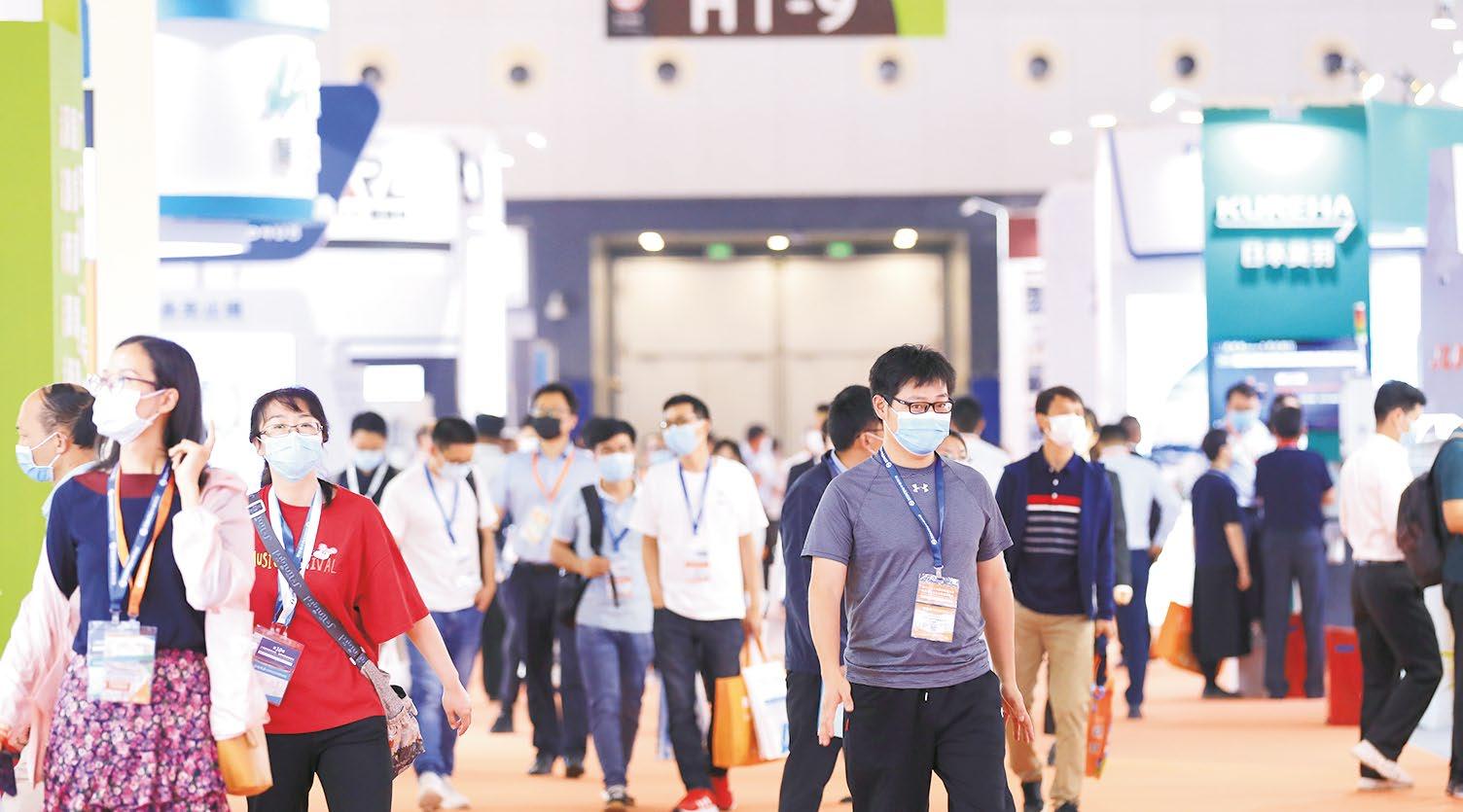
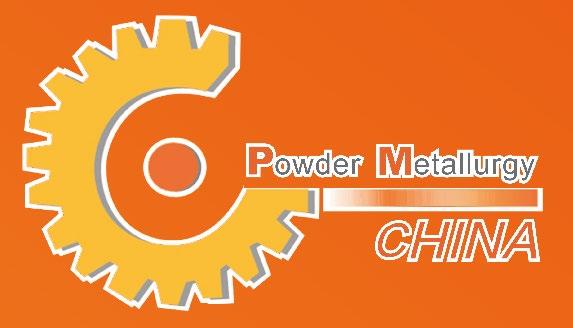
Shaping the future: Dorst Technologies on digitisation, data and the PM ‘smart factory’
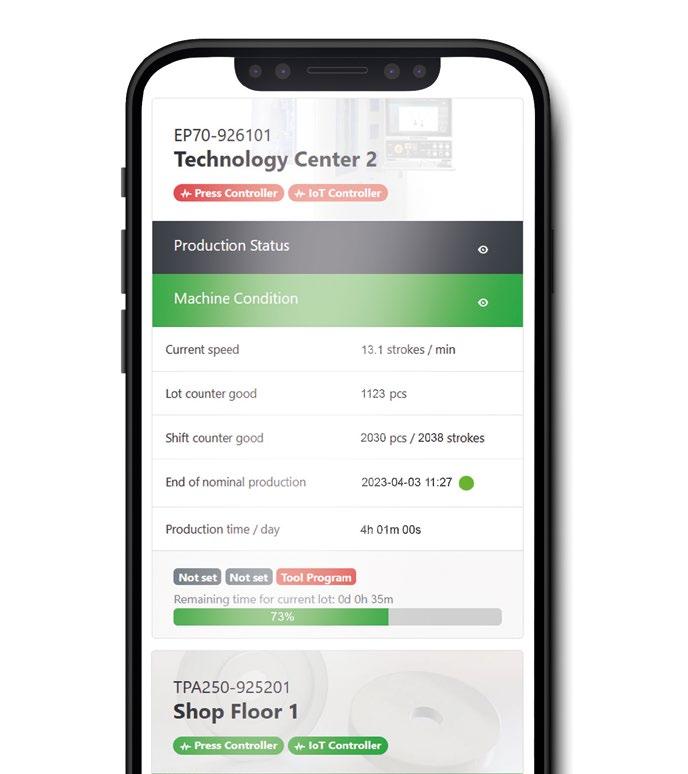
Whilst some areas of the Powder Metallurgy industry, particularly those involved in the automotive and hardmetals sectors, have leveraged the production data for many years, others have yet to embrace the opportunities presented by the vast quantities of data that their production processes are able to generate. In this article, Christian Müller, from Dorst Technologies GmbH & Co. KG, considers the opportunities that exist for the digitisation of the Powder Metallurgy process and a move towards PM ‘smart factories.’
Dorst Technologies, based in Kochel am See, Germany, is a leading international supplier of machinery and complete production systems for the Powder Metallurgy industry, specialising in material processing, forming via compaction, and process automation. Although the wider industries, markets and regions served by Dorst have embraced digitisation to varying degrees, a general trend towards increasing digitisation and interconnectivity, all the way to ‘smart’ autonomous production, can be seen clearly across all sectors. With this in mind, this article focuses on solutions that can be integrated into the overall system landscape, effectively targeting the specific needs of individual customers while providing measurable added value on the road to the PM ‘smart factory.’
The status quo and challenges in production environments
In the industries where Dorst Technologies’ machines and systems are used, the degree of digital maturity,
the amount of data available and its quality, as well as the extent of interconnectivity, vary significantly.
In the automotive sector and the hardmetals industry, for instance, machine and production data have been gathered and analysed for
many years and Production Planning Systems (PPS) or Manufacturing Execution Systems (MES) have been in use for decades in the processing of orders. Digital recording and managing of tools and raw materials are commonplace, as is quality

assurance based on computerassisted measuring and testing equipment. For these industries, the main gap that remains to be closed relates to production machines and the specific processes that take place on these machines.
Other sectors of Powder Metallurgy, however, have neglected the capture and use of data, partly because they could see no direct added value in using such data. Nevertheless, digitisation has found its way into almost every company, even though the configuration of a higher-level system landscape often requires several iteration stages to integrate the entire production environment effectively.
Data generation and processing
The data relevant within the context of production using a PM compaction press can be divided into three different categories: machine data, production data, and order-specific data. The corresponding measuring values and parameters of machine data should be as significant as possible and be captured in a reliable way by appropriate sensors. Order-specific data, in particular, must be assigned clearly to an individual pressed part in the first processing step, even if the time stamp for the respective measured values differs.
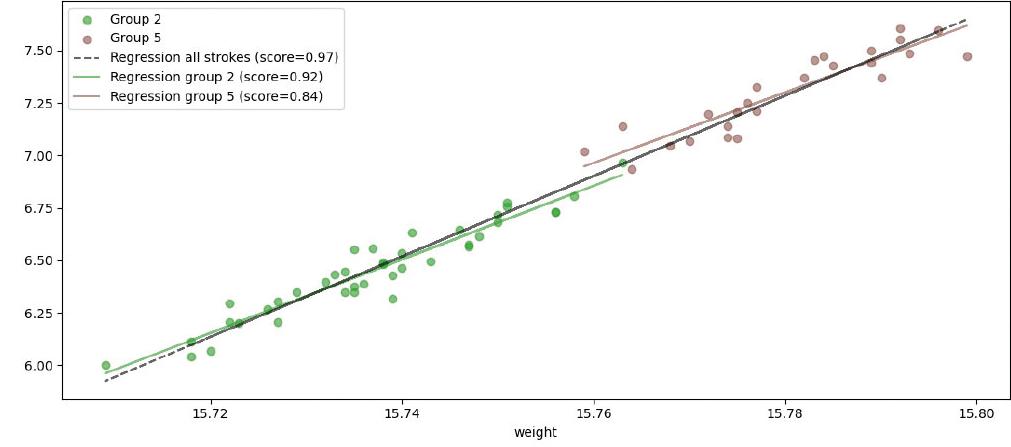
In the case of Dorst, both the assignment of values to measure, and the analysis and presentation of data, is achieved by the IoT Field Manager platform. An independent CPU is used for processing the data in order to guarantee the performance of production cells. This IoT Field Manager platform is the basis for all further digitisation concepts for Dorst Technologies’ machines and systems. Only by providing qualified information – along with information that has already been prepared – for each step and at any time, can we provide a fully-digitised process chain with its corresponding added value for the customer.

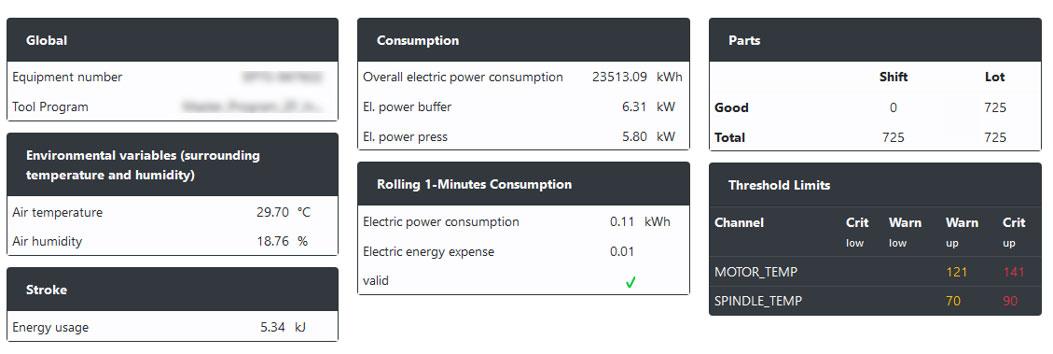

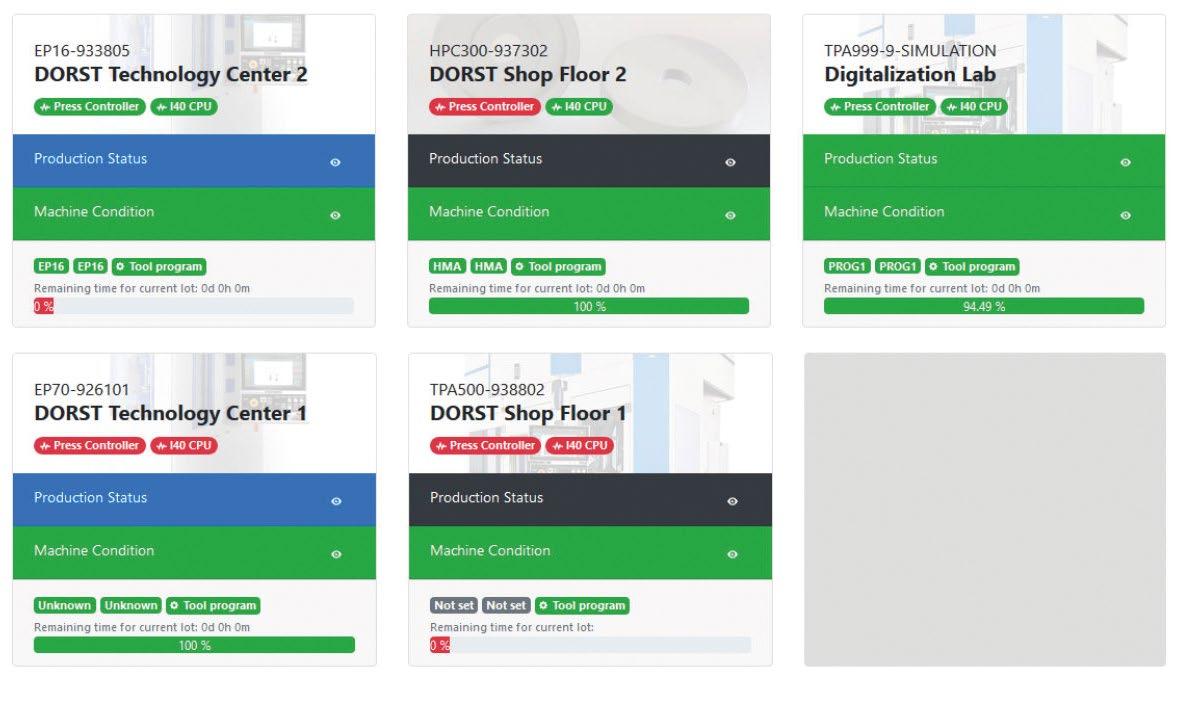
Production data
The acquisition of production data is a largely self-explanatory and almost standard component of machine visualisations and conventional production control systems. Typical variables are the number of strokes, pieces produced, good and rejected parts, machine operating and downtimes and the remaining production time. Production data are related to order data and other operating equipment data, such as tool IDs or powder batches (Fig. 1).
If appropriate measuring sensors are available, data on the energy and material consumption of the equipment will be available. These can be related to order and production data and thus enable statements to be made, for example, about the manufacturing costs per pressed part.
The recording of environmental conditions in the production field can reveal additional interesting correlations, such as the tendency of powder materials to stick to the tool and the number of cycles required to clean the machine, depending on the temperature and humidity at the time. Objective, personnel-independent decisions are possible only if data are collected and prepared in a target-oriented way and the information thus obtained and verified is presented in a straightforward manner.
In many cases where absolute measured values are not available, quality statements are based on whether a pressing process is stable during a task or not. Once a process or operating condition is found to achieve the desired quality, the aim is to keep this condition as steady and reproducible as possible, so that the scatter range is influenced by only a few disturbance variables such as powder parameters. In individual cases, long-term observations can be used to predict the influence of individual interfering variables on the quality of the pressed parts.
It is invaluable to measure and evaluate the quality characteristics of actual pressed parts, as the information gained for process
development and quality control purposes is crucial. However, evaluating the quality of a process, down to each pressed part itself, on the basis of status parameters and their stability, is an important ‘indirect’ procedure (Fig. 2).
Machine status detection and service


Machine data provide a direct overview of the equipment itself and can be used for various purposes when combined with new digitised processes. From the first moment of commissioning, each piece of equipment is subject to alteration due to daily stress. The wear and tear of equipment can develop slowly and unnoticed, but it can become immediately apparent in the case of exceptional events, such as an

evident overload. Slow wear, in particular, is an often-underestimated cause of quality problems in production. The purpose of regular maintenance and recurring servicing is to determine the wear rate, slow it down and prevent the uncontrolled failure of equipment as far as possible. The general aim is to maintain the best possible machine condition over the entire life cycle of the equipment, so that it can be relied upon to be available at all times for production (Fig. 3).
The continuous recording of machine data, especially the calculation of a wear index, represent a major challenge. For example, it is often not technically feasible to use appropriate transducers for direct wear detection. Such approaches sometimes fail due to the size of the
transducers, installation options at the site of the occurrence, the measured value resolution or simply the costs involved. Moreover, not every potential wear or failure of a mechanical machine element or electronic component can be prevented and monitored by measurement technology.
Therefore, it is not enough merely to measure the direct wear of an assembly or machine element or, more generally, the alteration of the machine over its service life. In practice, the most effective procedure is to observe the pressing cycle continuously, based on individual produced parts and their associated path curves and secondary data. However, a deep understanding of process control, control behaviour and machine properties is required to understand how a part can affect the machine condition.
A machine’s condition and its potential availability is, as a result, no longer assessed solely on the basis of specific measured values but on data-based observations of the long-term behaviour of the pressing process. An operator who lacks the dedicated detailed knowledge of the press, its installed components, and the control system will generally not be able to make this extended condition assessment on their own. Hence, the manufacturer of the press, thanks to its specialised knowledge, can provide customer-specific consulting services as well as active support by accessing the data of the machine, its collected load profiles and current snapshots.
Such digitised service models can support the operator, in that the machine is under regular online supervision by the manufacturer, with the operator benefitting directly from the accumulated specialist knowledge of the press manufacturer.
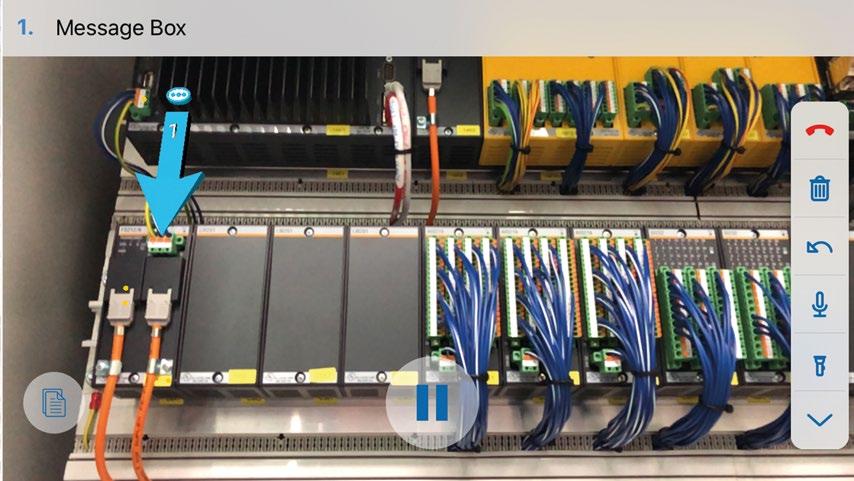
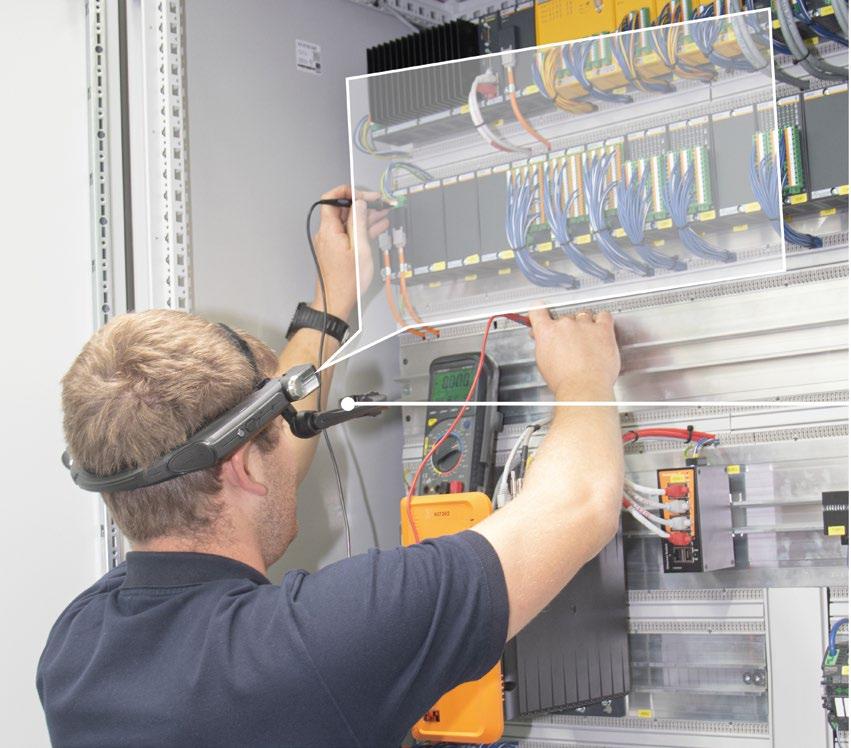
Service
The global travel restrictions caused by the COVID-19 pandemic provided an unexpected push for the development and general acceptance of digital services. Digital services
“A machine’s condition and its potential availability is no longer assessed solely on the basis of specific measured values but on data-based observations of the long-term behaviour of the pressing process. An operator [...] will generally not be able to make this extended condition assessment on their own.”
make it possible today to act more quickly, more directly and with a high degree of sustainability. Dorst Augmented Reality Assistance is a remote service solution, developed to establish a safe VPN video connection between the mobile devices of our customers and the service centres of Dorst Technologies. So, when our customers need assistance or support, they can consult a Dorst expert from anywhere in the world. The live image of the system condition can be enhanced by additional information and content, with the visual reality seen through a virtual reality headset (Fig. 4).
Digital tools have helped us, for instance, to hold a training session on a real machine in the Technology Center in Kochel am See and, at the same time, let the customer and our own employees overseas participate in a direct way, thus allowing
us to combine conventional remote maintenance with audio-visual transmission and direct contact (Fig. 5).
It is also possible to supervise, document and assist in the commissioning of tools or the running-in of new components, with the additional advantage of being able to access documents, drawings and manuals stored in digital form directly and at any time. Augmented

reality assistance has enabled us to raise customer support to an entirely new level. It has improved the quality of our service by accelerating the reaction time while increasing our focus on the problem at hand. We have seen that the technology transfer between us and our customers has improved in terms of practicability and everyday suitability.

“Augmented reality assistance has enabled us to raise customer support to an entirely new level. It has improved the quality of our service by accelerating the reaction time while increasing our focus on the problem at hand.”
The Dorst IoT solution
IoT Field Manager is a secure stand-alone platform consisting of hardware components and several software packages that can be extended on a modular basis into a comprehensive overall system, according to the customer’s wishes and needs (Fig. 6).
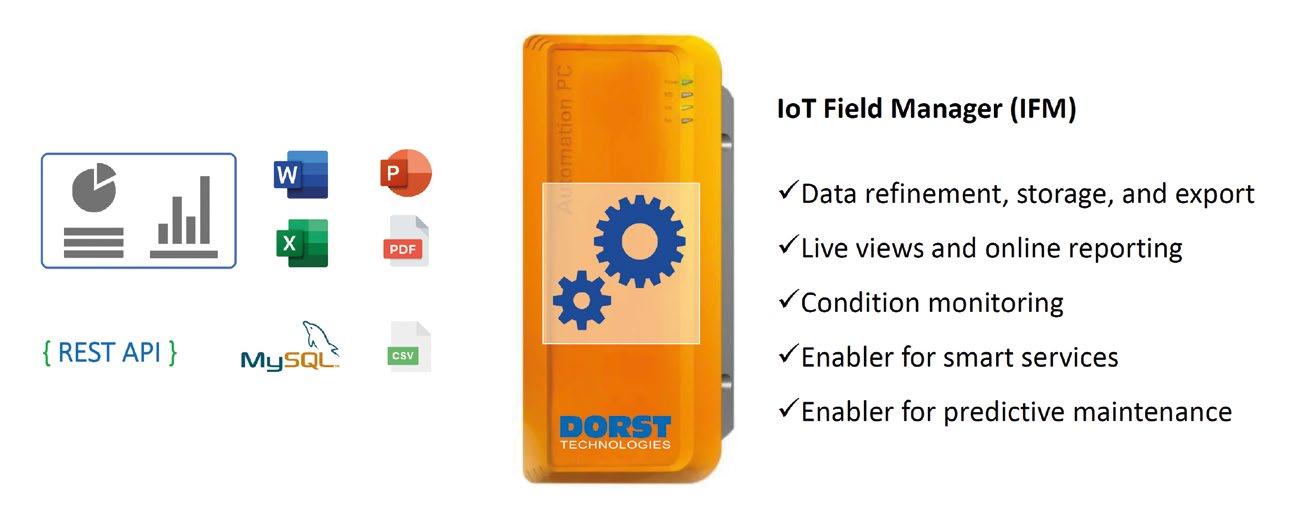
It is possible to connect several machines and plants digitally via one IoT Field Manager and monitor them centrally by means of the intuitive visualisation interface. Standardised
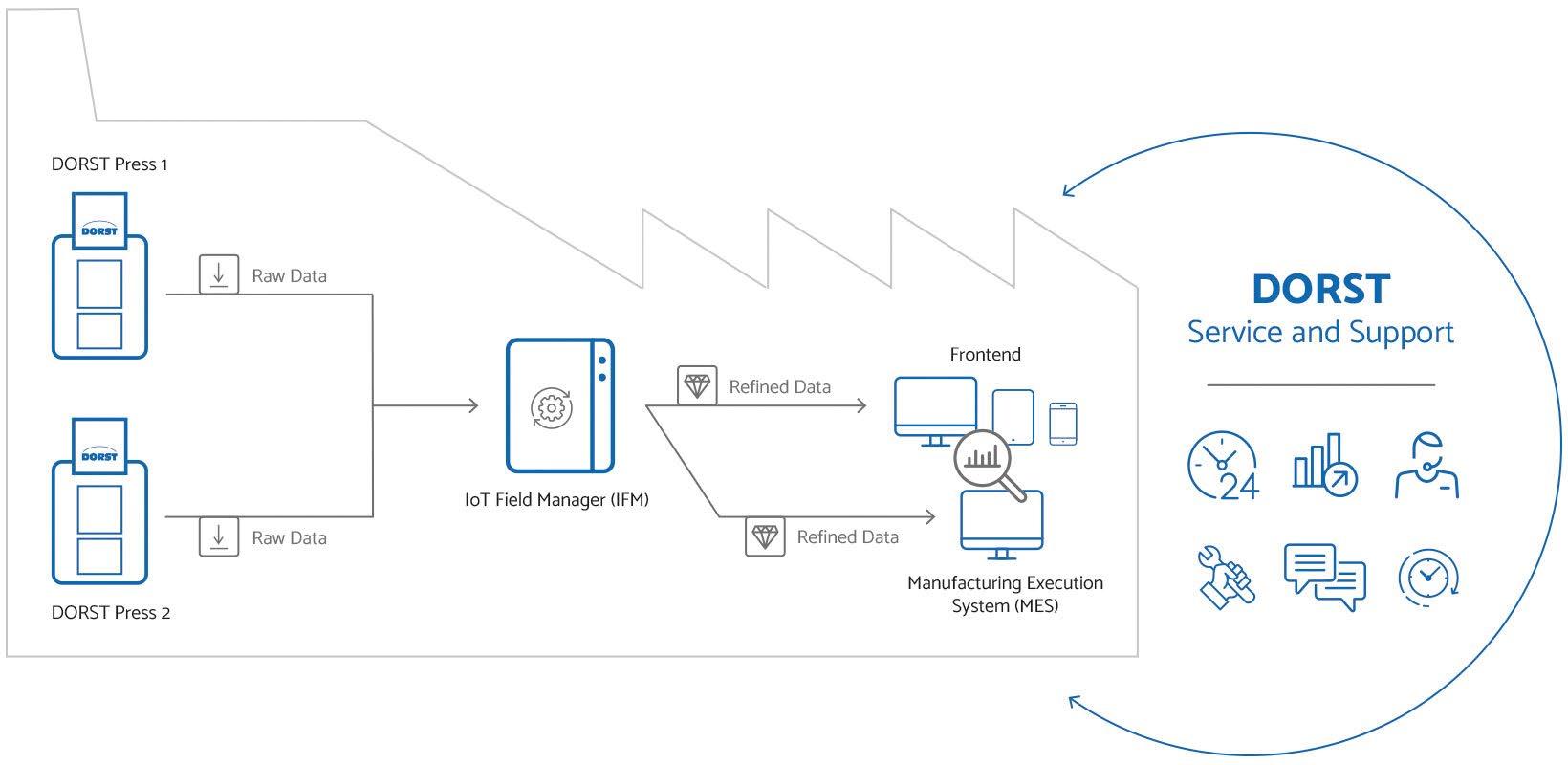
interfaces make it possible to export data to higher-level systems and databases.
The basic package already includes a regular individual service for security updates and bug fixes. Therefore, data security and data ownership will always be guaranteed when using the IoT Field Manager (Fig. 7).
IoT Basic Package
The IoT basic package, which comes with IoT Field Manager, already offers a wide range of functions and
analysis options for the current production. A browser-based dashboard provides an overall look at all connected machines, even from a remote location and at any time.
IoT Package I: Part Quality
With its focus on the individual pressed part and the corresponding pressing cycle, this package records all relevant data, including program changes, powder parameters and the corresponding curve chart. Intelligent analysis tools allow the user to
select unusual cycles and retrace every part (Fig. 8).
IoT Package II: Advanced Production

Monthly production reports keep a record of production outputs, scrap rates, failures and machine utilisation. In addition, it is possible to monitor all connected machines by means of smart devices, from any place and at any time.


IoT Package III: Advanced Maintenance
IoT Package III further improves communication between operator and manufacturer. This joint view of a machine from two different angles opens up a new perception of its condition, possible signs of wear and necessary maintenance measures (Fig. 9). The operator can draw on the manufacturer’s expert knowledge so that a planned action, based on collected data, can substitute an unplanned reaction through predictive maintenance and service.
Many of Dorst Technologies’ machines and systems have already been equipped with sufficient sensors for digital data mining. Still, additional sensor packages are available through IoT Field Manager for an even more detailed insight into the process and condition of individual machine types. To prevent data acquisition from straining the control system of a connected machine, independent data servers will be installed.
What is the smart factory?
The smart factory is a largely autonomous production environment, where manufacturing processes and production facilities function without human intervention to produce the desired products (Fig. 10). These highly integrated, interconnected systems are intended to achieve the profitable manufacturing of individual customer products in small lots down to a lot size of one.
This ultimate goal will not be achievable for all industries, prod -
“Many of Dorst Technologies’ machines and systems have already been equipped with sufficient sensors for digital data mining. Still, additional sensor packages are available through IoT Field Manager for an even more detailed insight into the process and condition of individual machine types.”
ucts, production environments or applications. Yet, if smart solutions are adapted according to individual case requirements, the technology can provide considerable additional value for almost all sectors. The most essential feature will, therefore, consist of modular solutions that can be implemented gradually to achieve quick, measurable results.
Future demands on manufacturing processes and added value
Ultimately, all efforts and solutions will gain traction only if they can generate clear added value for the customer. This is usually the case if the solutions help to reduce the costs per component while maintaining a sufficient level of quality, if they contribute to improving the quality of the delivered goods while keeping a reasonable cost struc -
ture, or if they enable suppliers to increase their delivery reliability. These basic principles are the key requirements for the competitive manufacturing structure of the future:
• High output rates, brought about by high plant availability and performance
• Stable processes, brought about by stable process parameters and high control accuracy
• High flexibility, brought about by short setup times and easy use
Dorst’s Uptime solution
The ‘Uptime’ concept increases the availability of production cells, which results in higher quantities of ‘good’ parts produced per time unit and makes it possible to standardise and largely automate the corresponding processes and operational steps. The

“...if smart solutions are adapted according to individual case requirements, the technology can provide considerable additional value for almost all sectors.”
focus is on quick and standardised product changes, which are of great importance especially when it comes to small lot sizes and resulting frequent setup procedures.
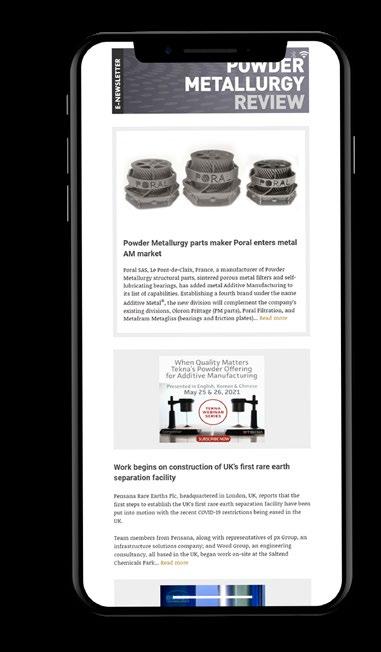
The Uptime_Data Interface transfers all relevant process data to the compaction press, including the part, tool and powder, as well as the production planning and process (Fig. 11).

It is essential that all press interface surfaces are referenced to enable a standardised, quick and smart product change and production start. There are major benefits to this concept:
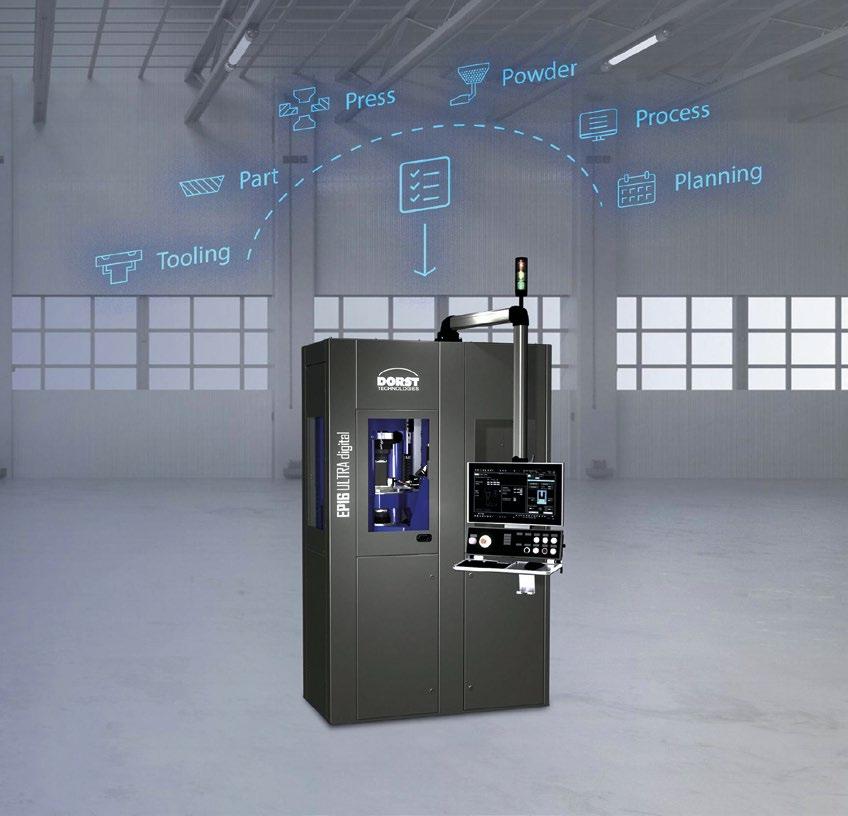
• Standardised setup procedure
• Avoidance of failures
• Reduce setup time
• Increased productivity
• Ease of operation
Summary and perspective
A high degree of digitisation and, based on that, autonomous production can be achieved if it brings about measurable added value: namely a higher output rate; a more stable process; and more flexible manufacturing.
As well as the Uptime_Data Interface module, which is already being used, solutions for fully automatic
and autonomous powder change, tool change and part optimisation will be necessary steps on the road to the smart factory. These are solutions Dorst Technologies is already working on intensely, in terms of development and stable process implementation.



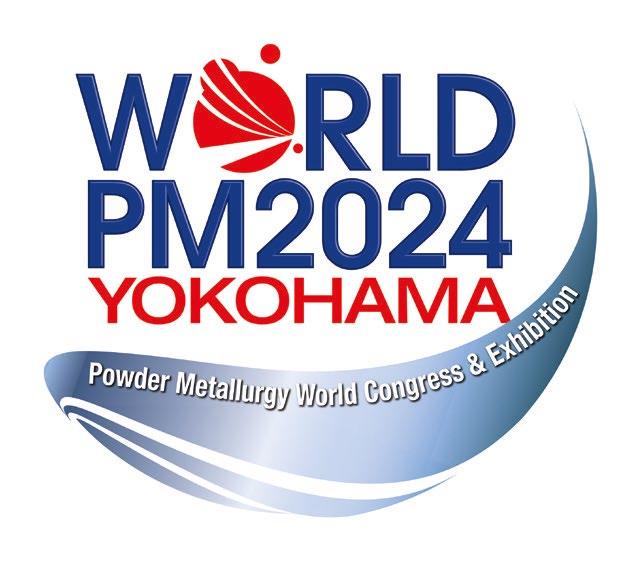
JPMA Awards 2022: PM process innovations supporting the route to carbon neutrality
Whilst Powder Metallurgy is already recognised as a green production technology compared to processes such as machining and casting, last year’s Japan Powder Metallurgy Association (JPMA) awards offered insight into how further improvements to PM’s green credentials can be achieved. Innovations range from reducing the machining of PM parts through a push towards net-shape production, combining multiple PM parts into one, limiting carburising and quenching, and minimising material usage.
Net shape manufacturing of complex multi-level shaped parking parts with two-piece simultaneous compaction
A prize was awarded to Sumitomo Electric Industries Ltd. for its development of parking parts used for transmissions designed for hybrid electric vehicles (HEVs) (Fig. 1). The parking mechanism locks the parking gear and fixes the axle when the selector lever is shifted to the park setting. The mating part, called the parking wedge, acts on the tapered area of the inner diameter of this part and the parking pawl moves. As the electrification of cars progresses, it was stated that parking parts are among the most important strategic products for the Powder Metallurgy industry. However, competition with other manufacturing methods is intense and cost reduction is a major issue. The main reason for the high manufacturing cost of parking parts is that they require machining because of their complex shape with multiple steps.
In this instance Sumitomo Electric Industries has reduced the manufacturing cost, by eliminating the machining process through the pursuit of complete net shape manufacturing, fully leveraging the greatest advantages of Powder Metallurgy processing.
In the conventional PM compaction method for forming the inner diameter of the parking part’s tapered shape with a stepped lower punch, some shapes cannot be compacted, preventing the machining process from being completely eliminated. As a countermeasure
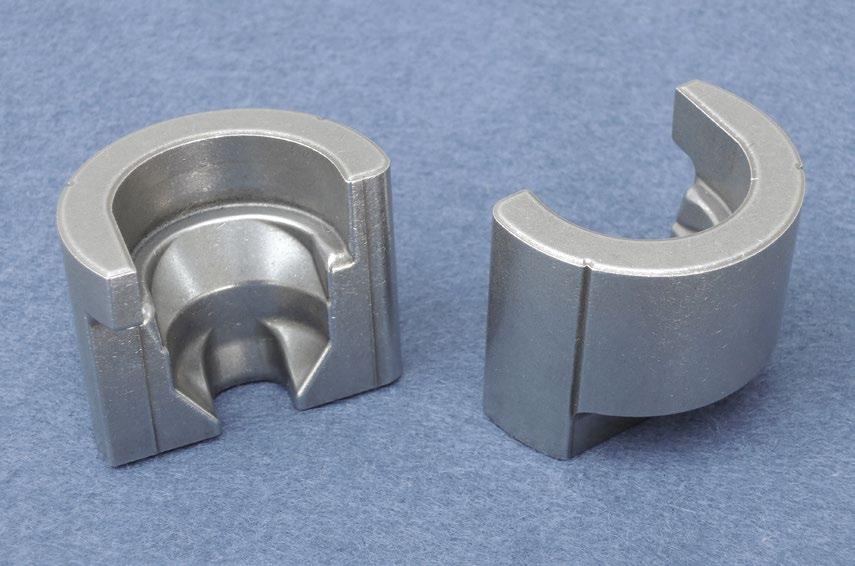

to this, the company optimised the compacting tools through the use of two separate upper punches, two separate lower punches, a stepped die, and a dummy punch, in the reversed compacting direction. This arrangement made it possible to form all shapes solely by compaction. However, there was a further issue in that the load on the tool (especially the lateral pressure) was high when the parking part was compacted, because the
required density of the part was in the medium density range (approx. 6.8 g/cm 3) due to the requirement for sliding with mating parts.
In addition, there was a risk of tooling seizure due to the complexity and intricacy of the tool, meaning that its thickness had to be reduced. So, taking advantage of the features of the shape of the product, a tool structure for two-piece simultaneous compaction that cancelled out the lateral pressure of the tools
was established, in order to prevent gouging and seizure between them. The establishment of such a complex tool structure was made possible by thoroughly simulating the shape of the tool and its operation using 3D drafting software.
As a result, Sumitomo Electric Industries achieved a complete machining-less manufacturing route and two-piece simultaneous compaction of the part and has succeeded in reducing cost by about 50% compared to the conventional processing route. This improved the cost competitiveness of PM parking parts with complex, multi-level shapes.
The mass production of a high accuracy and thin-walled part for an electric VVT
A prize was awarded to Fine Sinter Co. Ltd for its development of a component of an electric Variable Valve Timing (VVT) system. The parts plays a central role in the VVT system (Fig. 2), receiving torque from the VVT motor and transmitting it to the camshaft to operate the valves.
The part is required to have high accuracy, high hardness, and wear resistance. The new VVT unit in which it is used has improved performance and is quieter than conventional units. To achieve both the required mechanical properties and accuracy of the product, developments of the machining method and quenching condition were necessary. This product has a cylindrical shape with an outer diameter of 42 mm and a height of 23 mm and part of the outer wall has a thickness of 1 mm.
This thin-walled part is eccentric from the centre of the product, with this based on three different reference points. In addition, a carburising and quenching process was adopted to achieve the required hardness properties. There were two deformation issues, with the first being caused by the clamping force during machining and the second by

“The part is required to have high accuracy, high hardness, and wear resistance. The new VVT unit in which it is used has improved performance and is quieter than conventional units.”
thermal stress and microstructural transformation during the carburising and quenching.
The deformation caused by the clamping force changing the positional degree of the thin-walled part was solved by changing the chucking type based on CAE analysis. To improve the positional degree, the thin-walled area was clamped during machining. Although this change reduces the number of chucks and the clamping force, the clamping force was ensured by holding the width across a wide area of the thin- walled section.
The other deformation, caused by quenching, was solved by changing the quenching conditions based on CAE analysis. Two different quenching temperatures were set during the quenching process and the cooling oil was set at a higher temperature compared to the conventional process to reduce the temperature gap between the cooling oil and the quenching temperature, resulting in reduced deformation. By this method, although the processing time
increased by 25% compared to the conventional process, deformation was reduced by approximately 50%.
As a result, both the required hardness of the thin-walled parts and the reduction in deformation were achieved and thus mass production was assured.
Brazed planetary carriers for manual transmissions with improved endurance fatigue strength
A further award went to Sumitomo Electric Industries for its development of planetary carriers for manual transmissions used in 4WD transfer system, a mechanism that controls torque distribution between the front and rear wheels (Fig. 3). The planetary carrier is manufactured by assembling three compacted parts and brazing them together. This assembly is necessary because of to the large size of the carrier.
Carriers that are used as frames for planetary gear transmissions have tended to become larger and
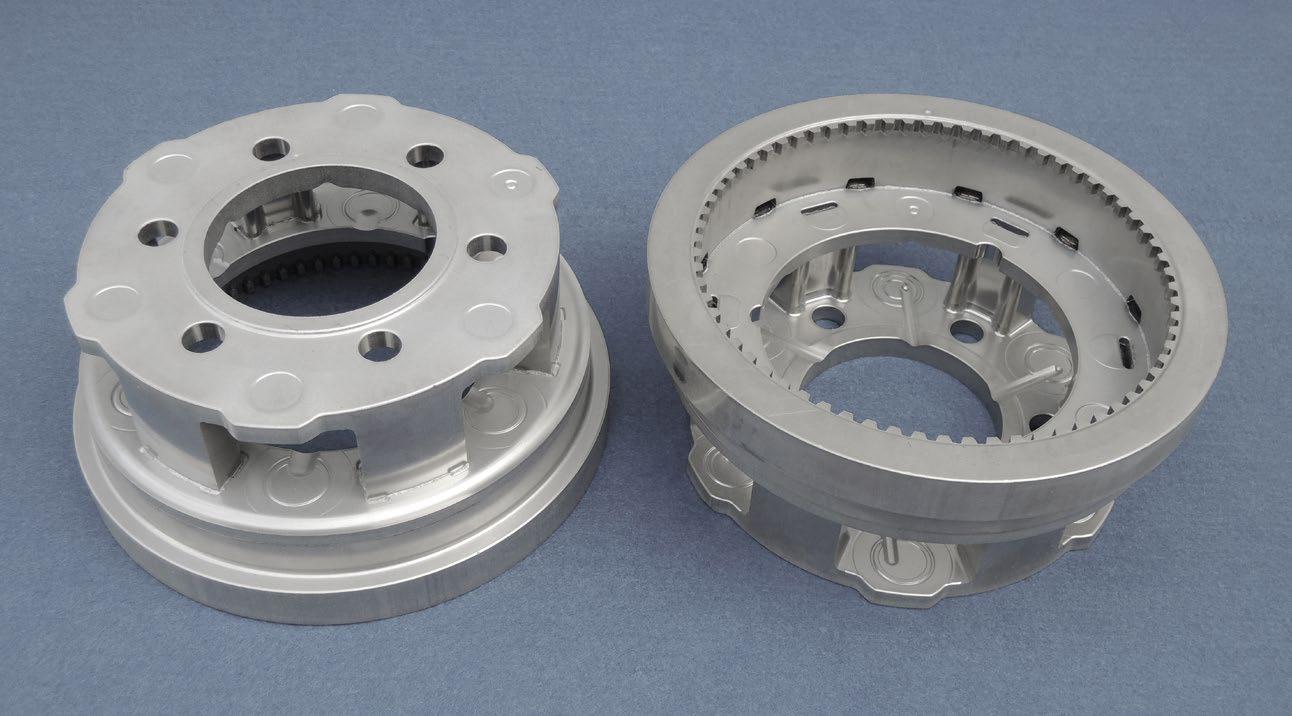

more complex in shape in recent years, due to the addition of more functions. With the manufacturing of new sintered carriers, which have become larger and more complicated in shape due to changes in unit structures, Sumitomo Electric Industries recognised that it was necessary to improve its technical capabilities to realise the production of more difficult shapes. Serious issues that had to be considered included rising costs and the inability for the assembly to pass durability evaluation tests using conventional joining methods due to the high demands for endurance fatigue strength.
Cost reduction was achieved by bringing down the machining cost by producing the blank section of the product closer to net shape, and by reducing raw material utilisation. The endurance fatigue test was passed by using FEM analysis of the stress generated in the product during durability evaluation by changing the brazed joint to a ‘full joint’ shape. Since the outer periphery of the conventional sintered carrier was straight, the inner diameter was
chamfered by the upper and lower first punches and a stepped core, using a tool structure with a straight outer diameter. However, for the developed sintered carrier, it was necessary to add a stepped shape to the outer periphery, so the tool structure was reviewed to suppress deformation of the elongated lower punch and achieve separation of the lower first punch, lower second punch, and stepped core.
Furthermore, the insufficient endurance fatigue strength was improved by a number of procedures. Firstly, by assessing the fractured parts during the durability evaluation, it was detected that more stress than expected was generated near the brazed joint of the stepped part, preventing rotation of both the gear and plate parts. Therefore, in the stepped shape, stress concentration was eliminated and flattened to alleviate the stress.
In addition, the peeling strength of the new joining method was about
1.5 X higher than that of the conventional joining method, through joining the entire assembly and increasing the joining area.
In conclusion, the company claims that it has succeeded in developing a carrier that satisfies endurance fatigue strength by making full use of analysis technology while reducing costs by making it near-net. As a result, the customer awarded the company its Technical Excellence Award in recognition of its ability to increase the brazing strength of sintered parts and reduce raw material loss.
Eco-friendly parking parts with laser hardening
A third award went to Sumitomo Electric Industries for its development of parts with convex shape used for the mechanism that locks the parking gear inside the transmission to stop the rotation of the wheels when parked (Fig. 4).
In recent years, the number of parts used in cars has been decreasing due to the acceleration of the adoption of electrification for carbon neutrality, and suppliers are required to omit processes and improve production facilities to reduce carbon dioxide emissions.
In the conventional manufacturing of these parts, because of the complex shape that only considered its function, a lot of machining was required, even with the PM method, and, since the parts require wear resistance, heat treatment was also necessary.
Accordingly, a significant reduction in part costs has been achieved by integrating two parts after extensive discussions about the product’s shape with the customer. It was recognised that near net shape compaction could reduce the part’s associated carbon dioxide emissions. The company also achieved carbon reduction by adopting partial quenching only at the area that slides against the mating part, with
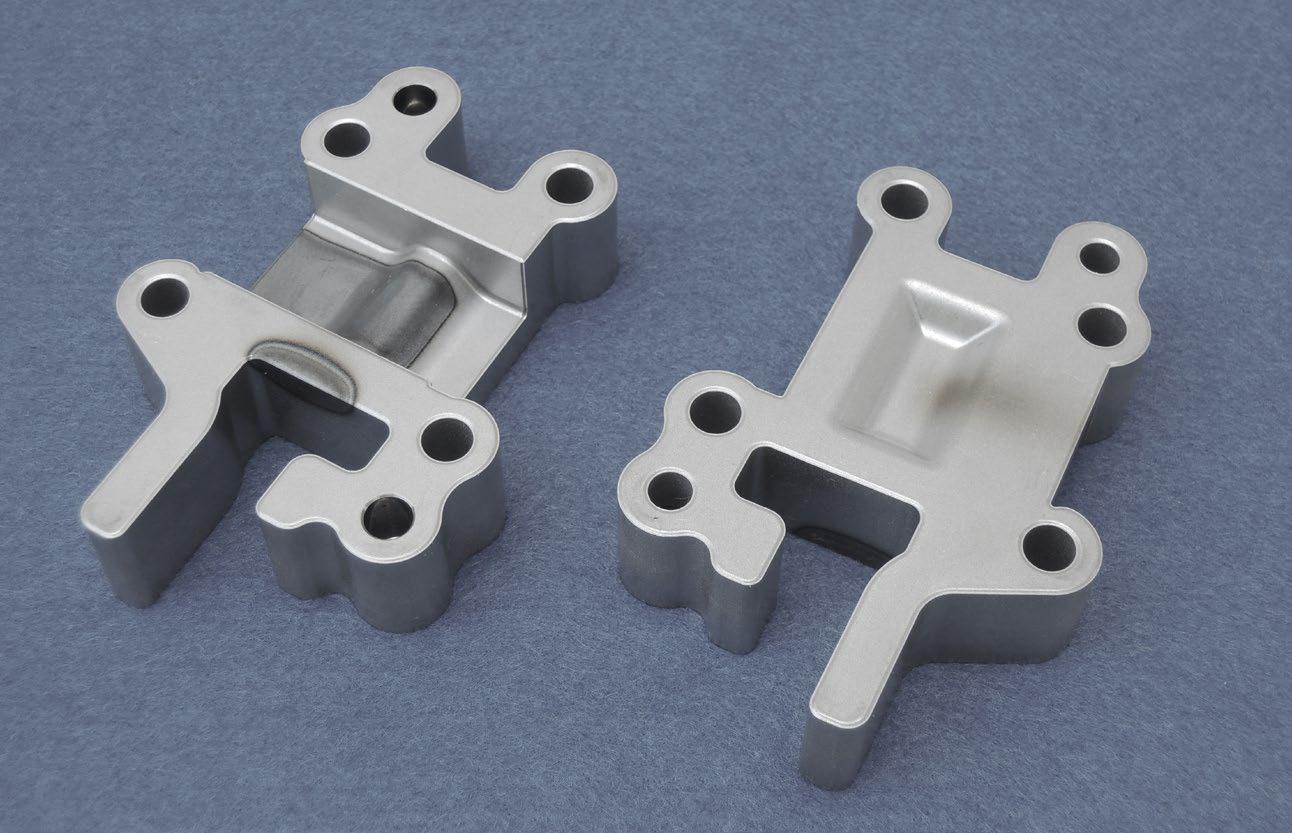
energy-saving and oil-free quenching performed using a laser irradiation method in lieu of the conventionally applied carburising and quenching manufacturing method.
In addition, a material with excellent hardenability, the Fe-Ni-MoCu-C system, was selected to satisfy the customer’s required density: 6.8 to 7.0 g/cm 3, and a manufacturing process, including compaction, sintering, laser hardening, and machining, was adopted. The tensile strengths of the blank part and the laser hardened part were about 650 MPa and about 780 MPa, respectively.
In summary, the company claims that cost reduction was achieved by extending the tool’s service life owing to efforts such as a review of the product’s shape, resulting in the integration of two parts, the use of a hardened pin that slides against the parking wedge, and the adoption of laser hardening, which does not harden the locating pin hole that requires the dimensional accuracy of finish machining.
The integration of two components and near net shape compaction has been achieved through design reviews in the early stages of development and the application the laser partial quenching manufacturing method, which reduced machining costs by 59%. In addition, carbon dioxide emissions were reduced by 94.5% compared to a process with carburising and quenching. This development again shows the potential to achieve carbon neutrality by leveraging the strengths of the PM process.
The development of housing
by the speed reduction mechanism attached to the inner diameter to the chain through the teeth.

As mainstream VVT mechanisms shift from hydraulic to electric actuation, an electric VVT is required to have even higher levels of responsiveness. Therefore, the shape of the electric VVT housing sprocket has become more complicated with the addition of an Oldham plate fitting mechanism that is not found in conventional products.
Specifically, it was essential to achieve high surface hardness and high accuracy of groove width dimension of 10 mm wide grooves, provided in two symmetrical positions axially to the centre of the housing sprocket, where the Oldham plate fits and slides.
A fourth award went to Sumitomo Electric Industries Ltd. for the development of housing sprockets, key components of electric VVT mechanisms (Fig. 5). The role of this part is to transmit the torque generated
In development, the product was optimised for near net shape forming through design improvements in order to minimise areas that require machining, leading to cost reduction. However, the major point of this development was to achieve both the high hardness and accuracy required for the fitting part of this housing sprocket with the Oldham plate.
Firstly, in order to achieve high hardness on the groove surface, an induction hardening technique was applied, taking advantage of the high degree of freedom in adjusting the conditions. By studying the coil shape, fine-tuning the coil position, and adjusting high-frequency output, Sumitomo Electric Industries succeeded in establishing the ideal conditions in which quenching is applied to only the area where the Oldham plate slides and not applied in the area to be lathe machined in the post-process. The hardening pattern was a controlled narrow

sprockets for an electric VVT system that achieves both high hardness and high accuracyFig. 5 An award went to Sumitomo Electric Industries Ltd. for the development of housing sprockets, key components of electric VVT mechanisms
range with upper and lower limits of about 1.4 mm.
Secondly, the company adopted a grinding method in order to achieve high dimensional accuracy and to machine difficult-to-cut materials. Accordingly, a dedicated grindstone with a stepped end face and a corner that fits exactly into the clearance groove was developed. With this, simultaneous machining of the groove bottom and the effective range of groove width precision deeper than the groove bottom is now possible, thus achieving high dimensional accuracy.
The company’s final conclusion was that it had succeeded in developing and mass-producing housing sprockets, which are the core parts of the new electric VVT.
High thermal conductivity metal powders for Additive Manufacturing

A materials related award went to Daido Steel Co. Ltd. for the development of metal powders for Additive Manufacturing, which have high thermal conductivity and help manage cracking during AM
processing, making them suitable for the production of die casting moulds and plastic injection moulds.
To date, maraging steel has been mainly used for the Additive Manufacturing of moulds. However, the low thermal conductivity of maraging steel has caused a decrease in mould life due to heat checks. Furthermore, maraging steel is listed in export regulations and, since maraging steel is a cobaltcontaining steel, it is necessary to take measures to prevent health hazards under ‘Regulations on Prevention of Hazards due to Specified Chemical Substances.’
Therefore, a powder for AM with high thermal conductivity that is free from cobalt was required. SKD61 (AISI H13) powder, which is a hot die steel, is one of the powders that satisfies these requirements. However, SKD61 is prone to cracking due to internal stresses. Therefore, the development of metal powders for moulds that can both prolong mould life and suppress cracking has been required. This led Daido to develop two new powders which have high thermal conductivity and
“...a powder for AM with high thermal conductivity that is free from cobalt was required. SKD61 (AISI H13) powder, which is a hot die steel, is one of the powders that satisfies these requirements.”
can suppress cracking during the AM process. The carbon content of the two new powders is 0.23% and 0.13%, respectively, while the carbon content of SKD61 is 0.4%. The reason for this is to suppress cracking.
The powders were produced by gas atomisation to achieve a spherical shape and excellent flowability. The high thermal conductivity of the powders is achieved by reducing the silicon content to 0.1%, which increases the thermal conductivity to approximately 36 W/mK after tempering. This value is about twice that of maraging steel and about 1.5 X that of SKD61.
The material is quenched by cooling, resulting in a tempered martensitic structure. The tempered hardness after AM is highest at 550°C. After tempering at this temperature, the hardnesses of the two powders are approximately 50 HRC and 45 HRC, respectively, ensuring a hardness from 40 HRC to 50 HRC for moulds. These high thermal conductivity powders are currently being used by several mould users and some of them have achieved mould life up to 2-3 X higher than maraging steel.
Sintered bearing for an electric parking brake motor
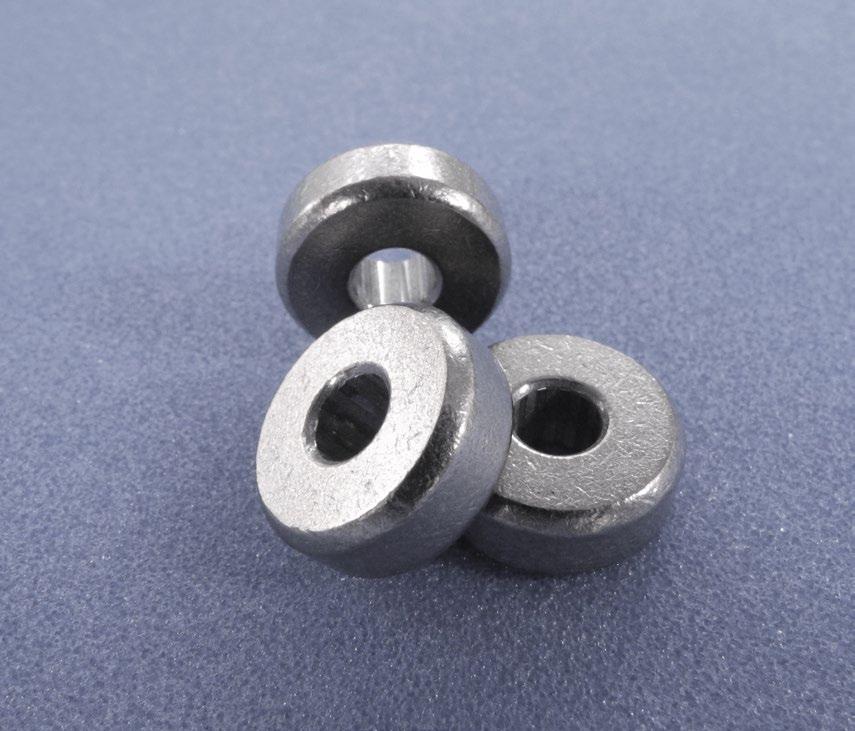
Finally, a prize was awarded to Porite Corporation for the development of a sintered bearing for an Electric Parking Brake (EPB) motor (Fig. 7). The EPG is driven by a motor and is required to be used in a wide temperature range. In particular, the requirement for operability at temperatures as low as -40°C has become more strict, therefore the noise level in low temperature operation has been required to be improved.
As a result of the investigation, even if the consumption of impregnation oil is a few percent, the volume of impregnation oil shrinks in environments such as -40°C, resulting in almost no oil existing in the clearance between the shaft
and the bearing. This causes metal contact between the shaft and bearing at initial startup phase and making it difficult for impregnation oil with increased viscosity to seep out from inside of the bearing. These factors make it difficult to form an oil film quickly, which is the cause of low temperature noise.
In order to solve these problems, conventional materials with a large copper content deposited on the bearing surface may cause stick-slip due to the soft copper. Therefore, a harder ironbased material was selected, with a zinc component added to compensate for corrosion resistance and sliding characteristics. In order to achieve both of the two contradictory goals of ensuring the seeping of impregnated oil onto the sliding surfaces and preventing oil leakage to the outside, the bearing outer diameter was sealed (dry barrels without media chips) to reduce air permeability to the outside while maintaining air permeability to the inside of the bearing.
Furthermore, to reduce sliding loss and to adjust the oil volume

in the sliding area, a longitudinal groove shape has been added to the bearing inner diameter and the width, depth, and number of grooves have been optimised to stabilise the sliding area. The impregnation oil, with a newly developed viscosity index improver, achieves a viscosity index of 400 or higher, which is much higher than that of conventional oil (viscosity index of 300) and the viscosity increase at -40°C is suppressed, enabling the oil to be supplied to sliding surfaces without delay.
As a result, the problem of lowtemperature noise was solved and sliding characteristics were also improved, enabling mass production.
Contact
Japan Powder Metallurgy Association
MatsudaShoji Bldg. 3-42-7, Taito, Taito-ku, Tokyo 110-0016
www.jpma.gr.jp
info@jpma.gr.jp
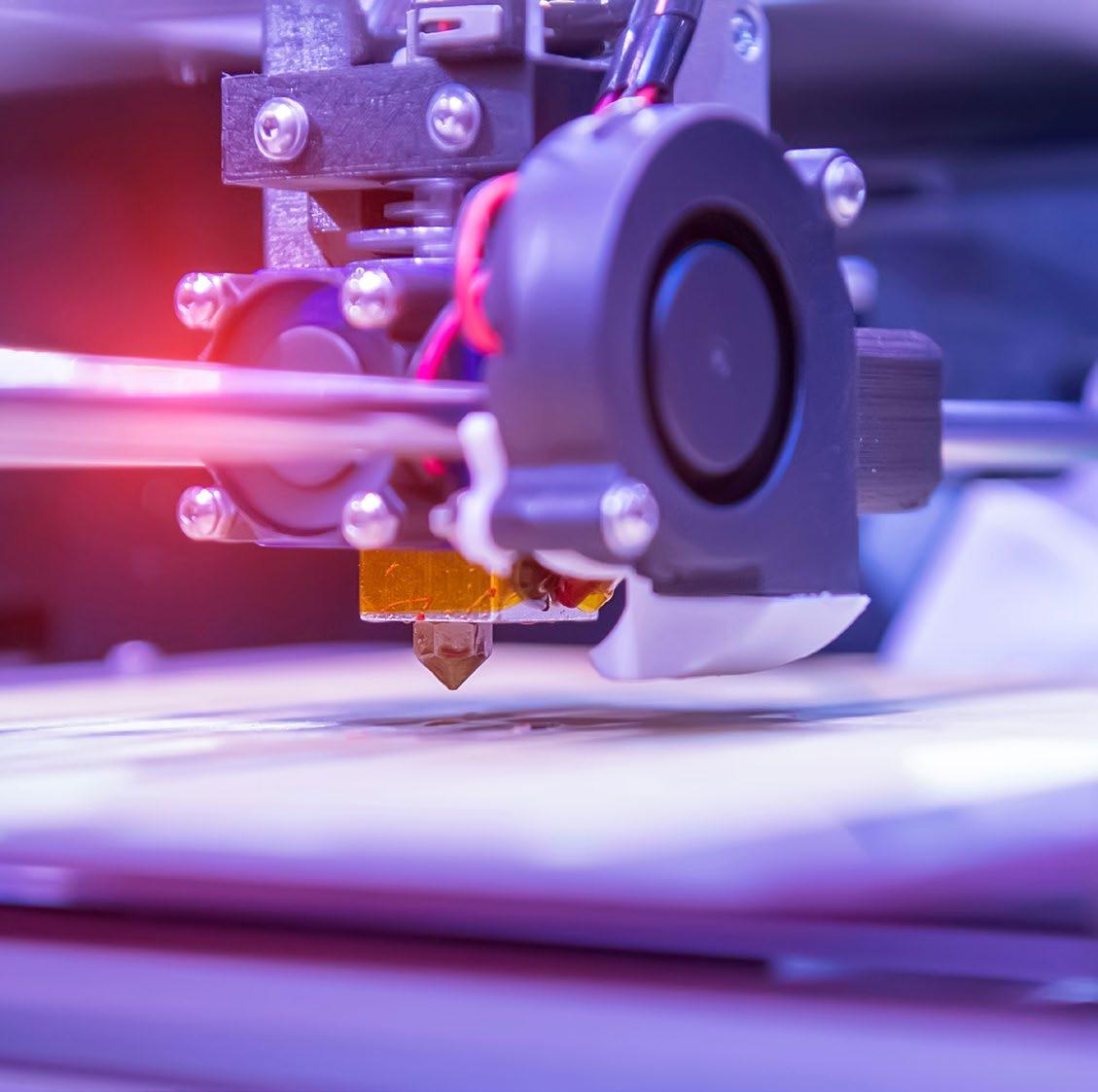
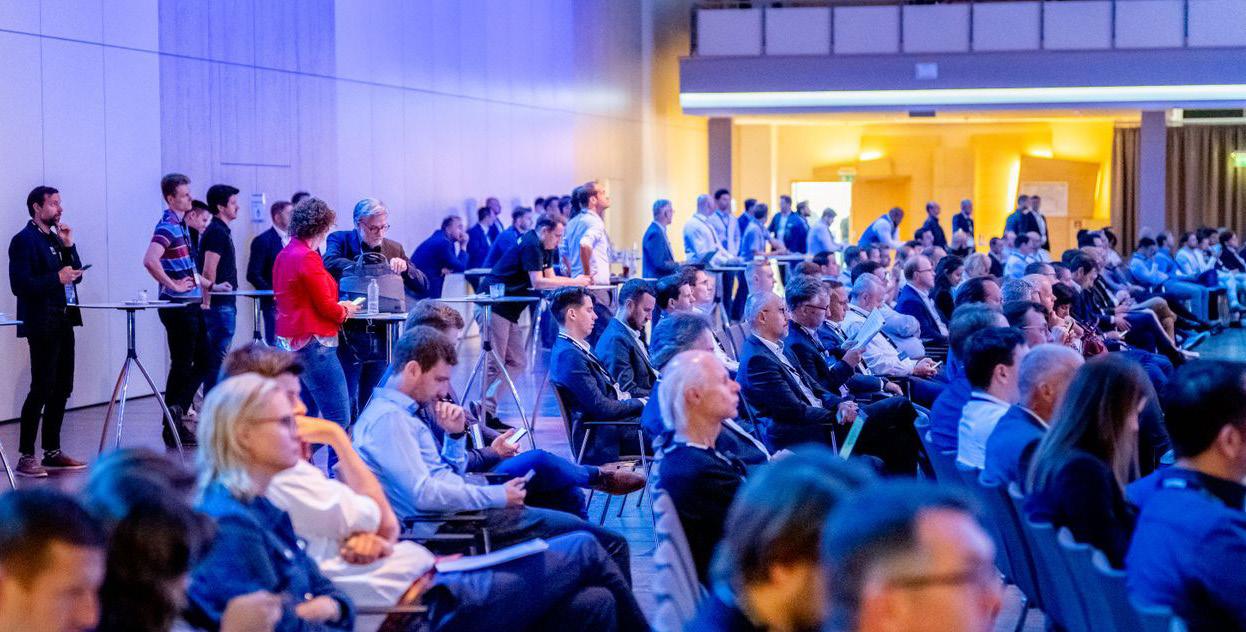
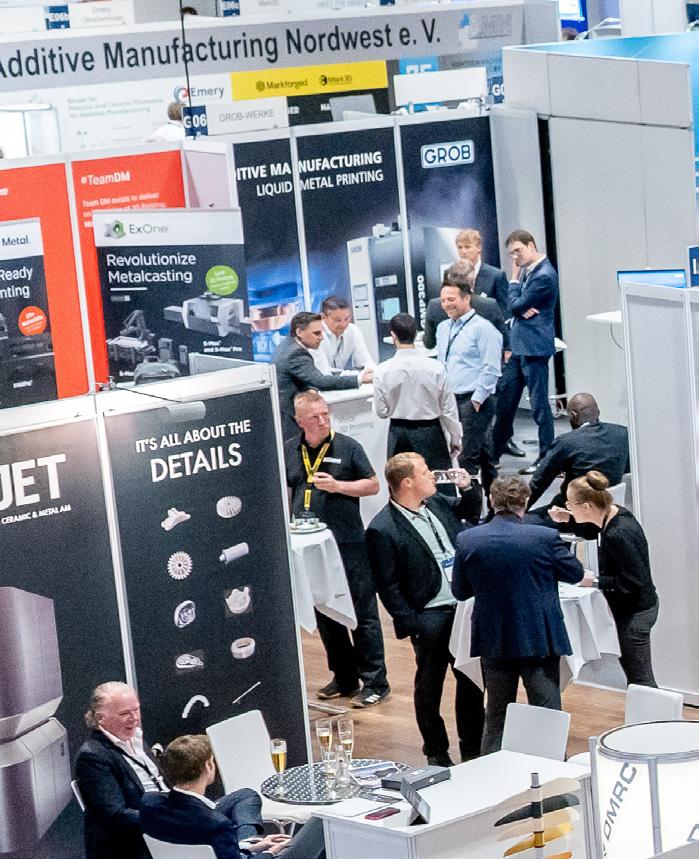
Advertisers’ index & buyer’s guide


SINTERING EQUIPMENT & ANCILLARIES
Alphabetical index
Advertise with us...
Combining digital and print publishing for maximum exposure
Reach out to our rapidly expanding international audience that includes component manufacturers, end-users, industry suppliers, analysts, researchers and more. For more information contact:
THE ONLY MAGAZINE DEDICATED TO MIM, CIM AND SINTER-BASED AM TECHNOLOGIES


Our exclusive deep-dive articles, company profiles, conference reports and e-newsletters are of great value to those interested in this advanced manufacturing technology for the production of complex, high volume net-shape components WWW.PIM-INTERNATIONAL.COM

Industry events
Powder Metallurgy Review is dedicated to driving awareness and development of Powder Metallurgy and its related technologies. Key to this aim is our support of a range of international partner conferences. View our complete events listing on www.pm-review.com
2023
PM China 2023
May 31–June 2, 2023
Shanghai, China www.pmexchina.com
World Titanium Conference 2023 (Ti-2023)
June 12–16, 2023
Edinburgh, Scotland, UK www.iom3.org/events-awards/world-titaniumconference-2023.html
PowderMet2023 / AMPM2023
June 18–21, 2023
Las Vegas, NV, USA www.powdermet2023.org / www.ampm2023.org
MAPP Second International Conference
June 28–29, 2023
Sheffield, UK www.mapp.ac.uk/events/mapp-2ndinternational-conference
AM Forum Berlin
July 4–5, 2023 Berlin, Germany www.am-forum.eu
Dritev 2023
July 5–6, 2023
Baden, Germany www.vdiconference.com/dritev/
EPMA Powder Metallurgy Summer School
July 17–21, 2023
Dresden, Germany www.summerschool.epma.com
Formnext forum Austin
August 28–30, 2023
Austin, TX, USA www.formnextforum.com
Formnext + PM South China
August 29–31, 2023 Shenzhen, China www.formnext-pm.com
EMO Hannover 2023
September 18–23, 2023 Hannover, Germany www.deutschemesse.co.uk/emo
Euro PM2023
October 1–4, 2023 Lisbon, Portugal www.europm2023.com
ASMET – Metal Additive Manufacturing Conference
October 17–19, 2023 Vienna, Austria www.mamc.at
Formnext
November 7–10, 2023 Frankfurt, Germany www.formnext.com
2024
World PM2024
October 13–17, 2024
Yokohama, Japan www.worldpm2024.com
Partner with us...
If you would like to see your Powder Metallurgy related event listed in this magazine and on our websites, please contact Jo Sheffield: jo@inovar-communications.com
